This is another flight in a trip for mixed private and business purposes. I already reported some of them:
CGO - PEK: CA1326 (B738) MiG Alley
CKG - CGQ : CZ6460 (A321) Roughing it in Changchun
CGQ - TAO : CZ3938 (A321) The Germans’ Chinese Riviera
TAO - CAN : SC4675 (B738) We regret to announce that Flight SC4675…
Xi’an is famous mostly for its terracotta army dating back from the 2nd century BC, but this is not the only major tourist spot there. You will have to wait until the bonus of this FR to discover another one, and you will have to wait for a long time, because I had better warn you that this FR is shamefully long, and so is its bonus. Better first go and help yourself with a mug of coffee, preferably better than that served on an Air China domestic flight, before reading on.
Xi’an kept its 14th century walls, adapting its gates to the constraints of modern road traffic), and if you enjoy jogging, you can run around the entire old city for a 13.7 km warm up. I’ll only show you one of the gates and its defending fortress, as seen from the ring expressway from the taxi driving me to the airport.
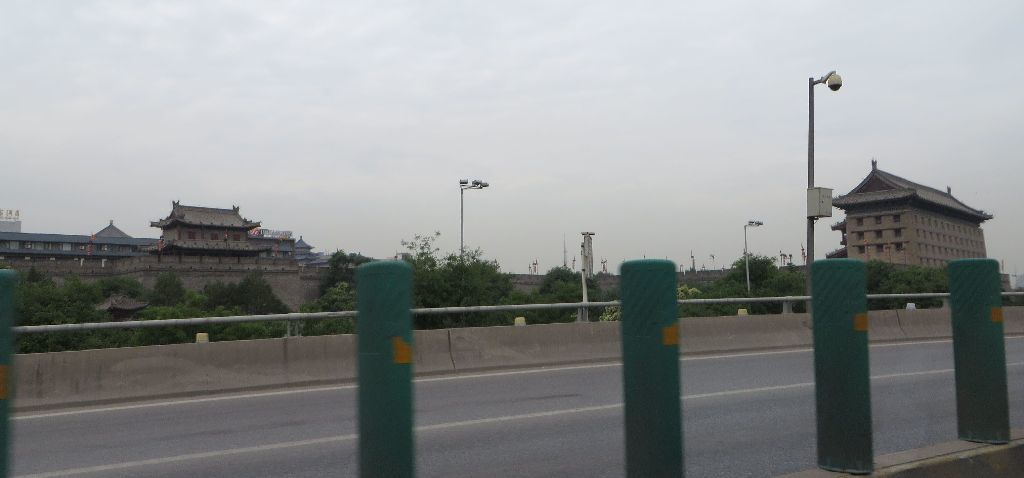
The toll gate at the airport exit (identified in big characters: 机场) is inevitably decorated with reminiscences of the city walls.

XIY is served by many airlines: better be a fast reader to identify your terminal
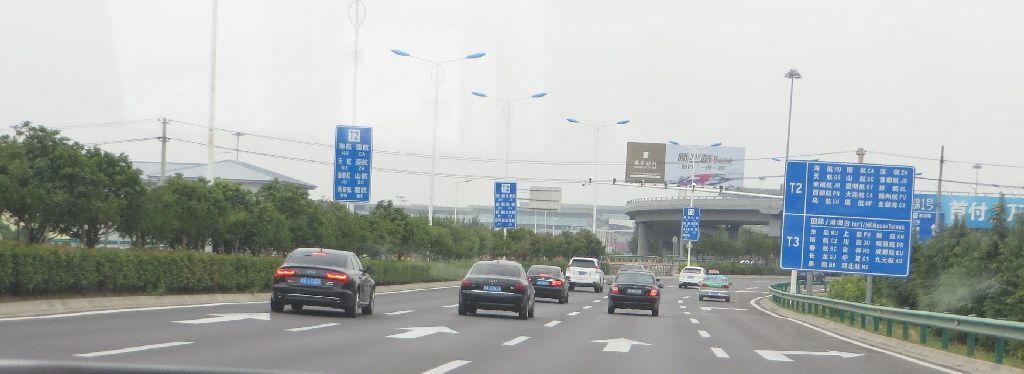
I do not remember which terminal this was, but the driver did not make a mistake
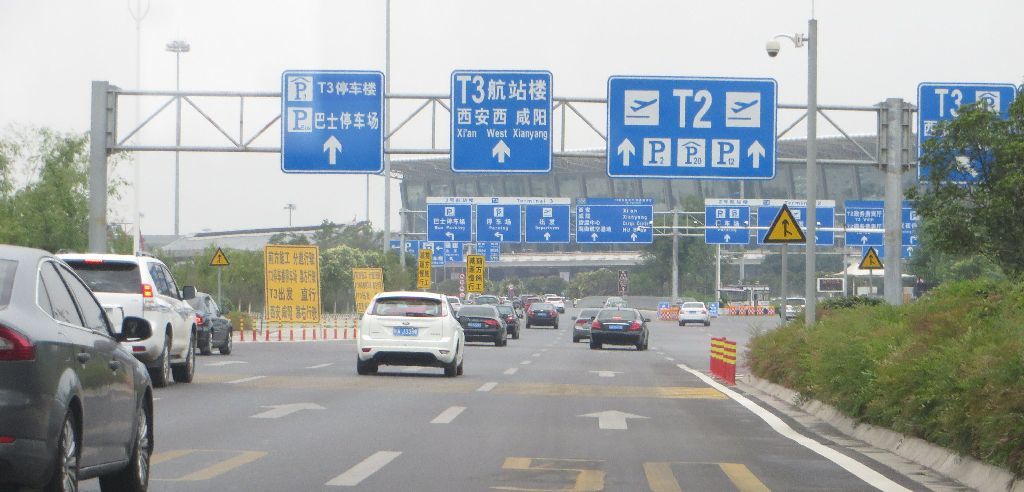
The terminal is in view

What is this small space painted in yellow outside the terminal?

It is written on the pole: this is the smoking area!

Yes, the entire smoking area outside the terminal is now limited to a few square feet around two poles like this one!

Since I do not smoke, I did not use this minimalist infrastructure and entered in the terminal. There could have been an explosive detection test, but they were probably doing random checks and I was not stopped.

Where is the check in counter for my flight to Beijing?
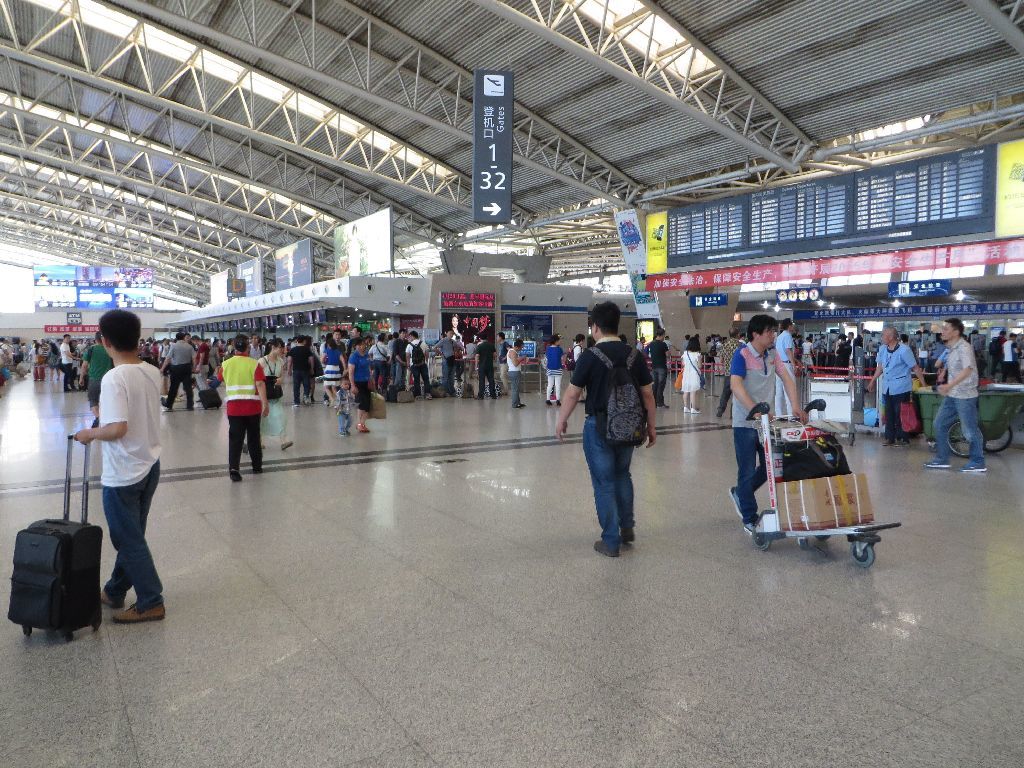
Counter 34? OK, let’s go.

There are automated BP dispensing machines, but I did not try them.
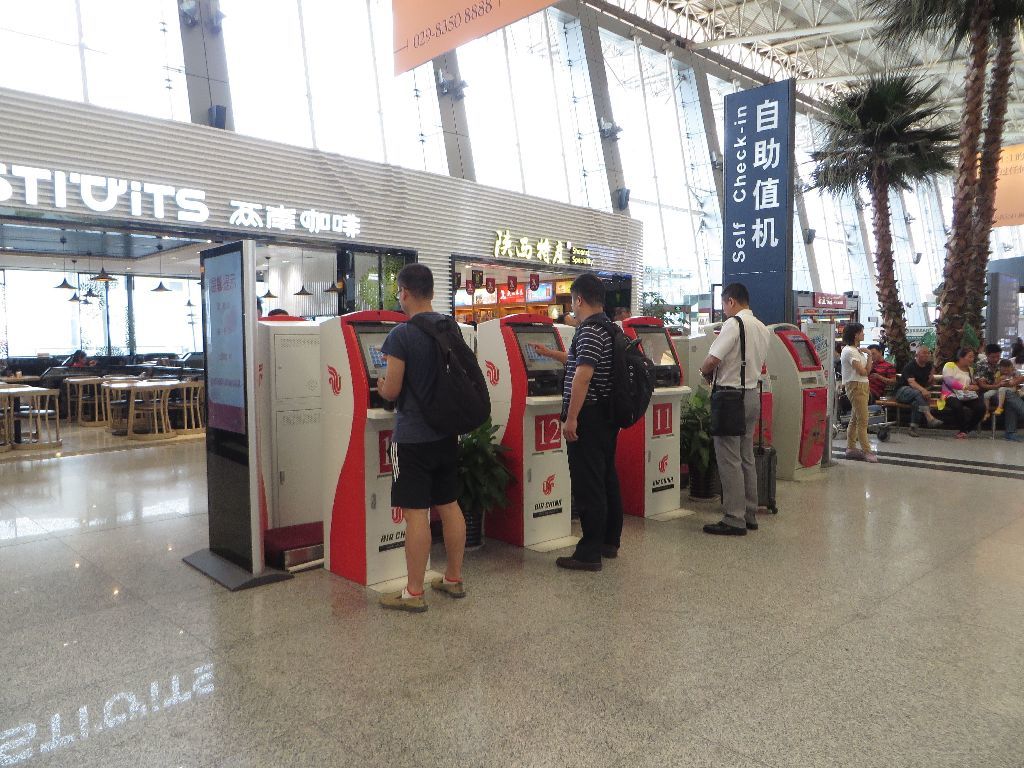
It does not show on this picture…
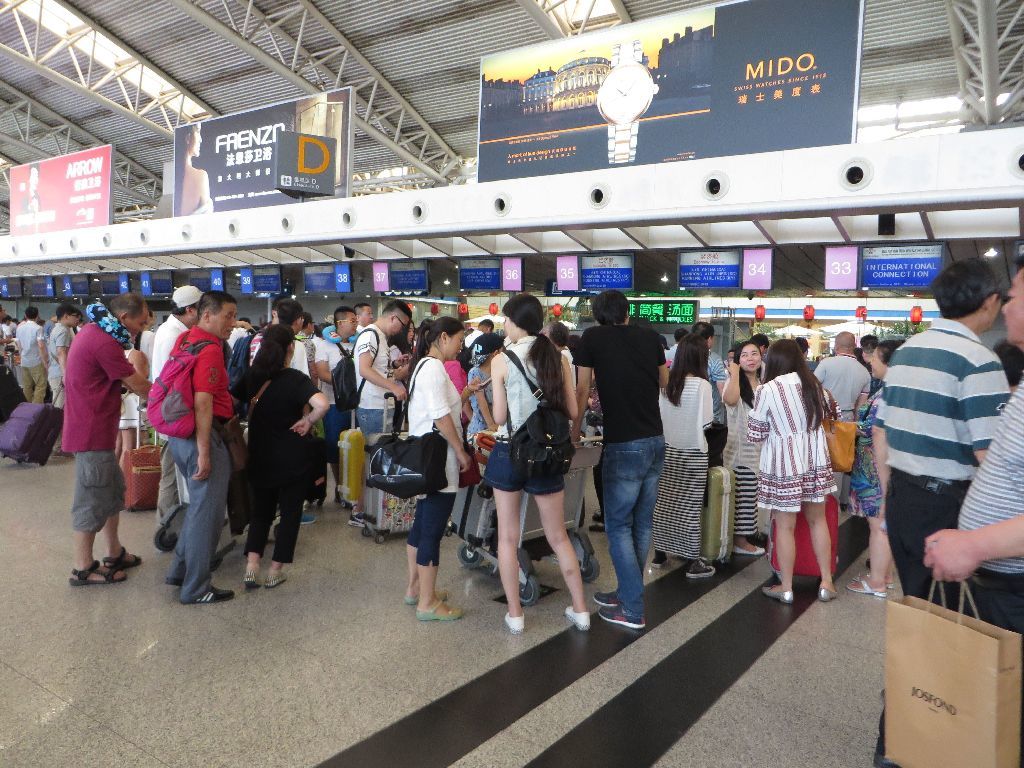
… but the line is moderate at Counter #34
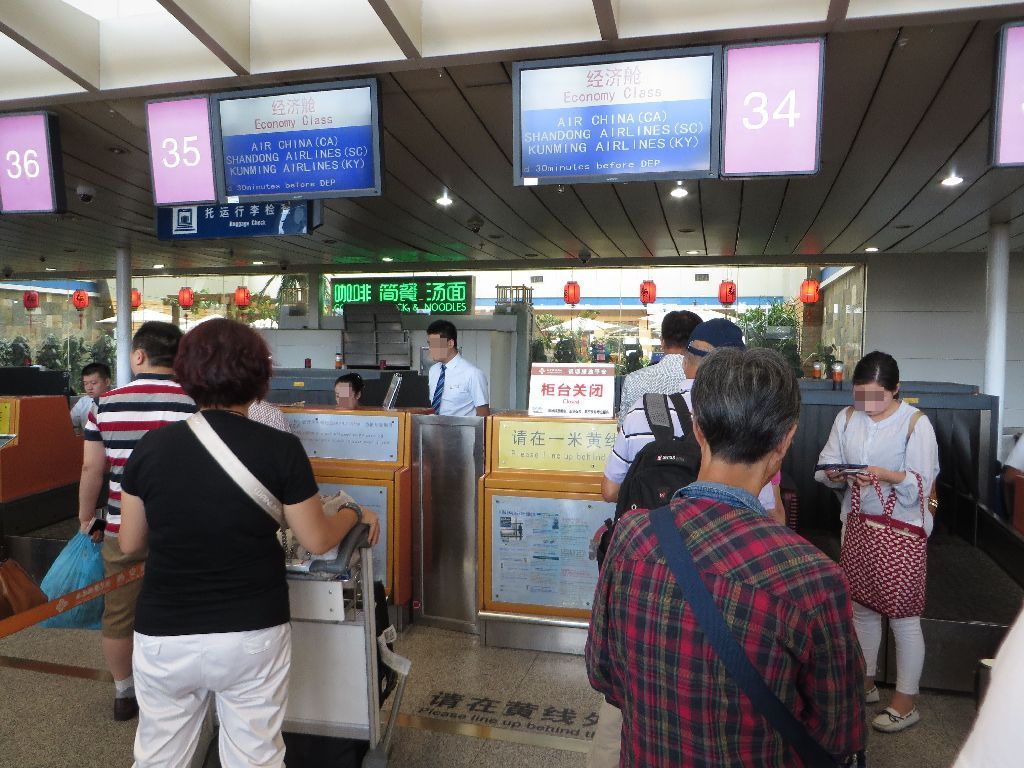
What is strange is that the passengers before me are being processed even though there is a “Closed position” sign
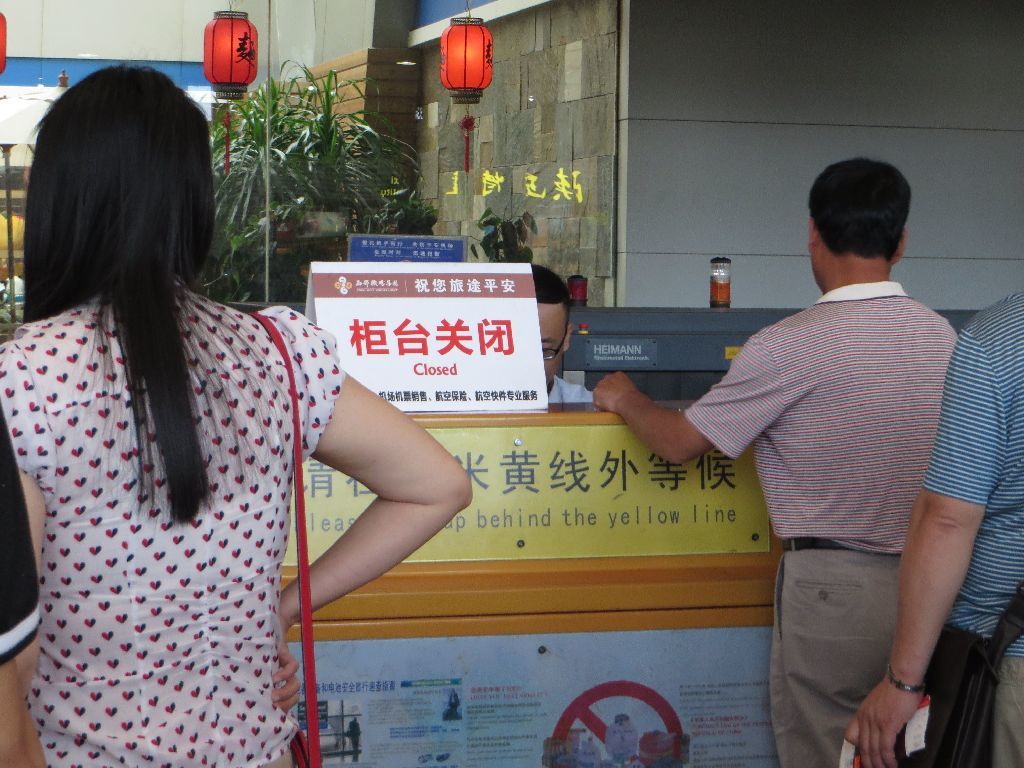
And when my turn comes, I am told that no, I should take the lien to Counter #35. I did not quite understand, but all passengers being processed at Counter #34 had a BP in hand
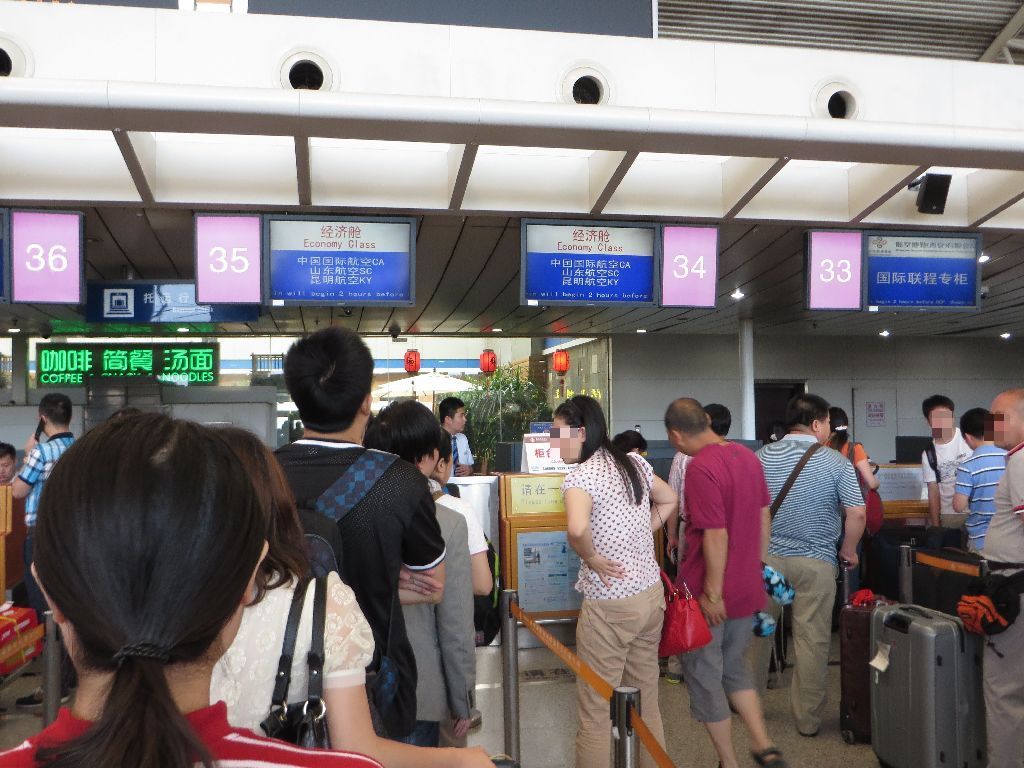
Maybe Counter #34 actually processes « international transfers » (landside), like Counter #33? It remains a mystery for me.
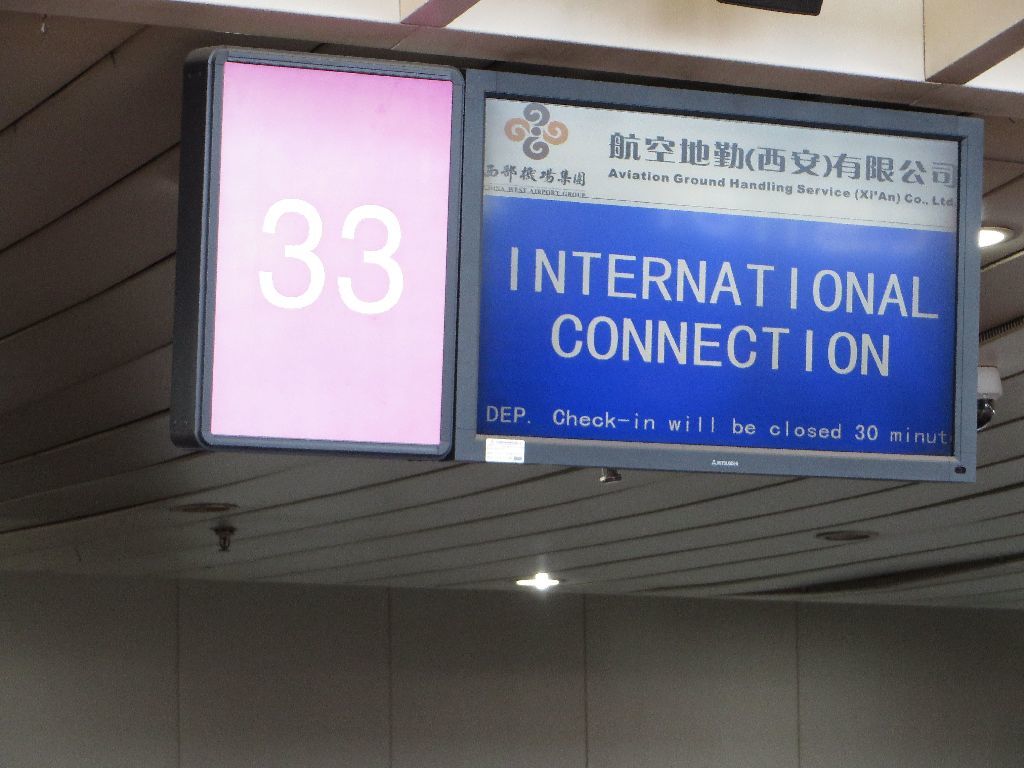
There is a longer line at Counter #35, but this is no big deal: things progress quite fast.

My luggage reaches the scale

… and after pronounced the magic words: 我要窗边位子 (I want a window seat), I receive a seat with an unequivocal window.
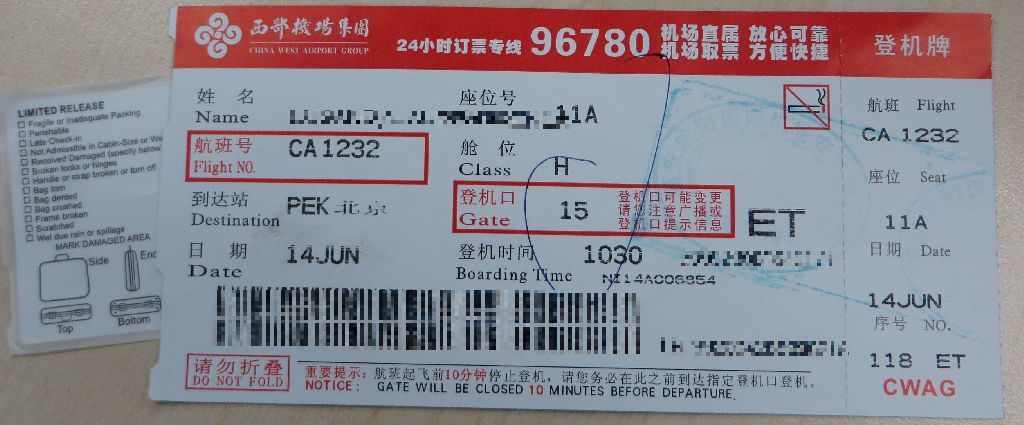
This piece of clothing has become a thing of the past in urban China: this young boy held by his mother wears pants with a slit behind, so that it is not necessary to remove it for defecating…
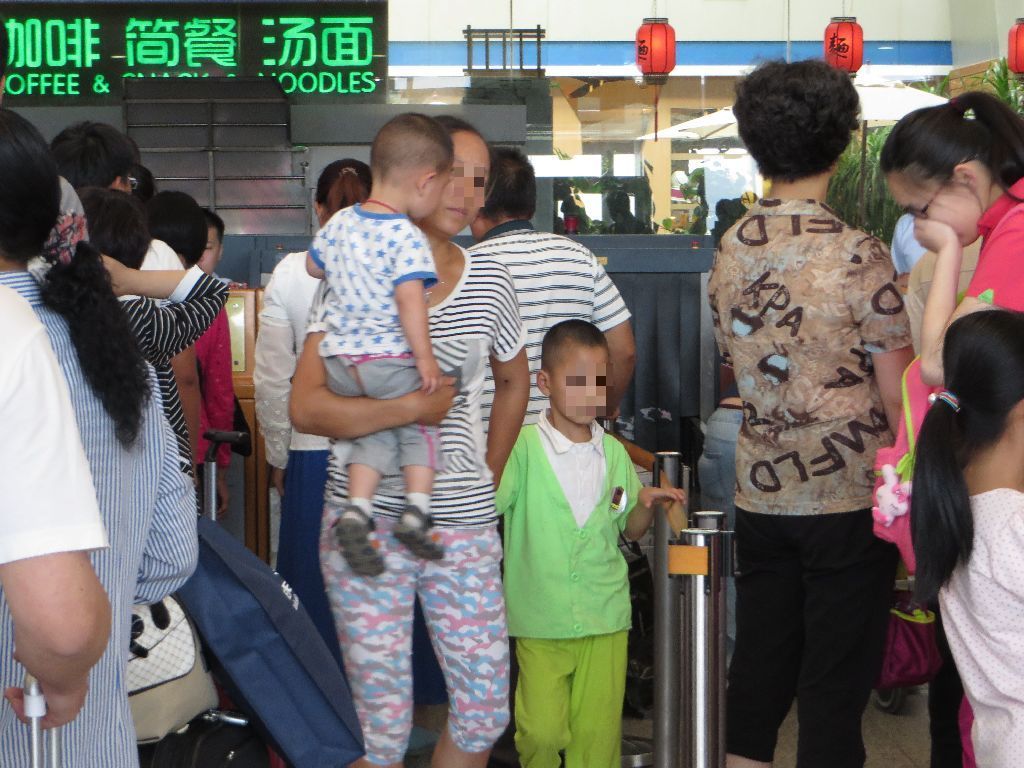
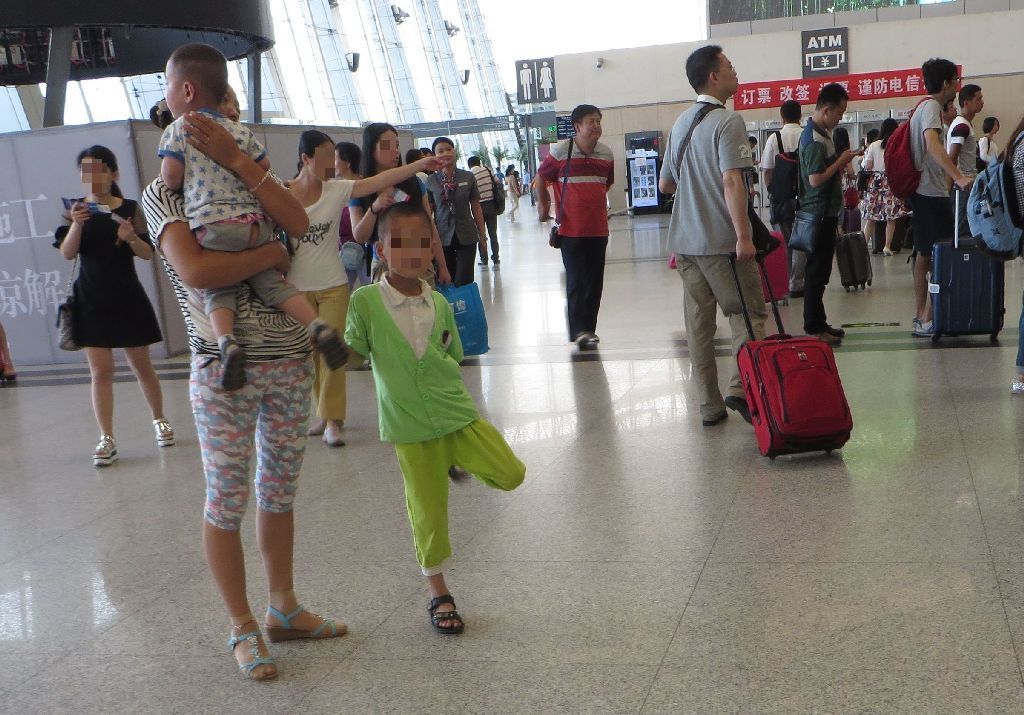
Not much waiting at the security check access
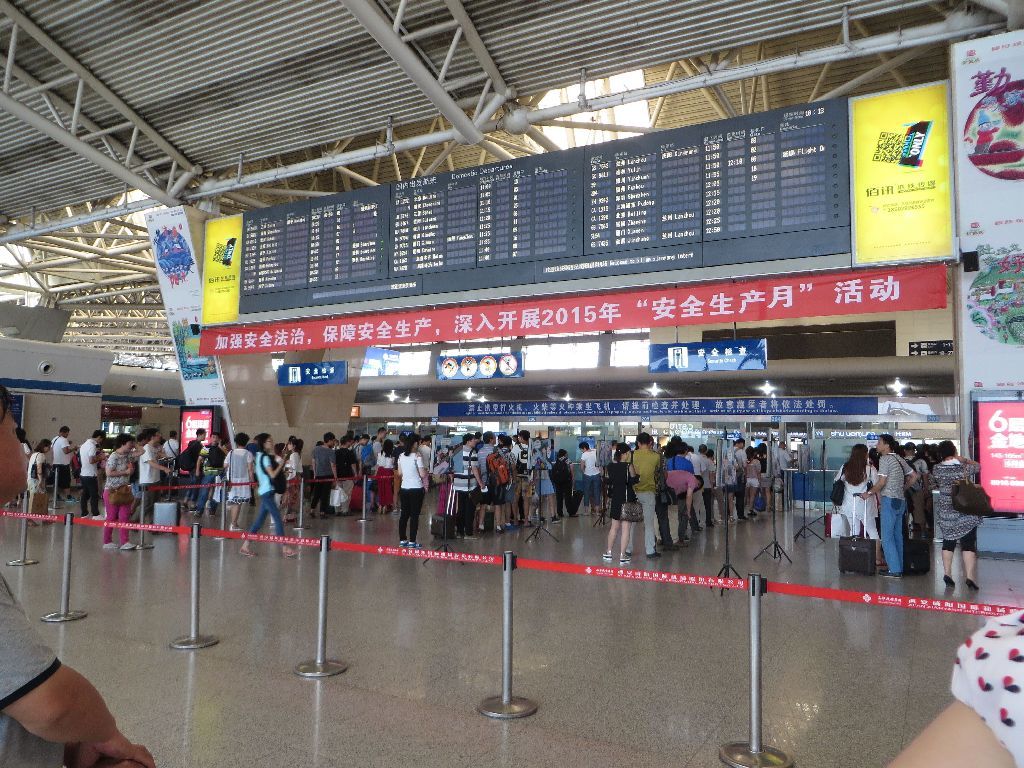
… under this FIDS where my flight is announced to be on time
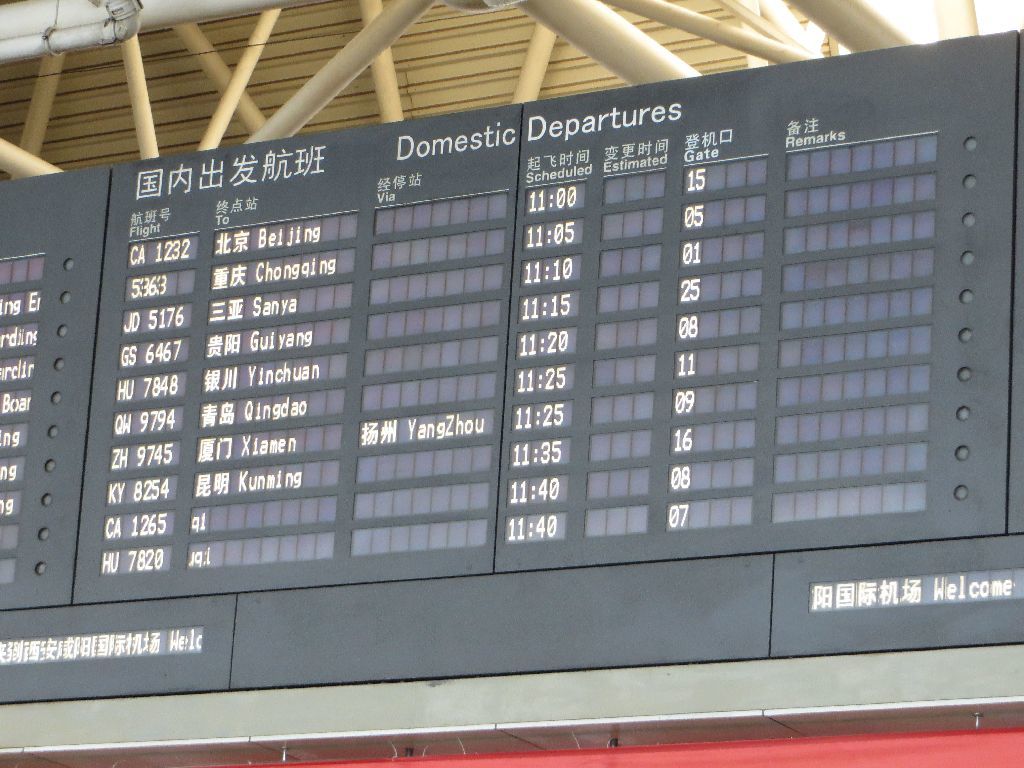
A local curiosity: signs in the waiting lines area remind with cartoon drawings the various safety constraints. No need to translate them for you: all Flight Report readers will understand each of them.
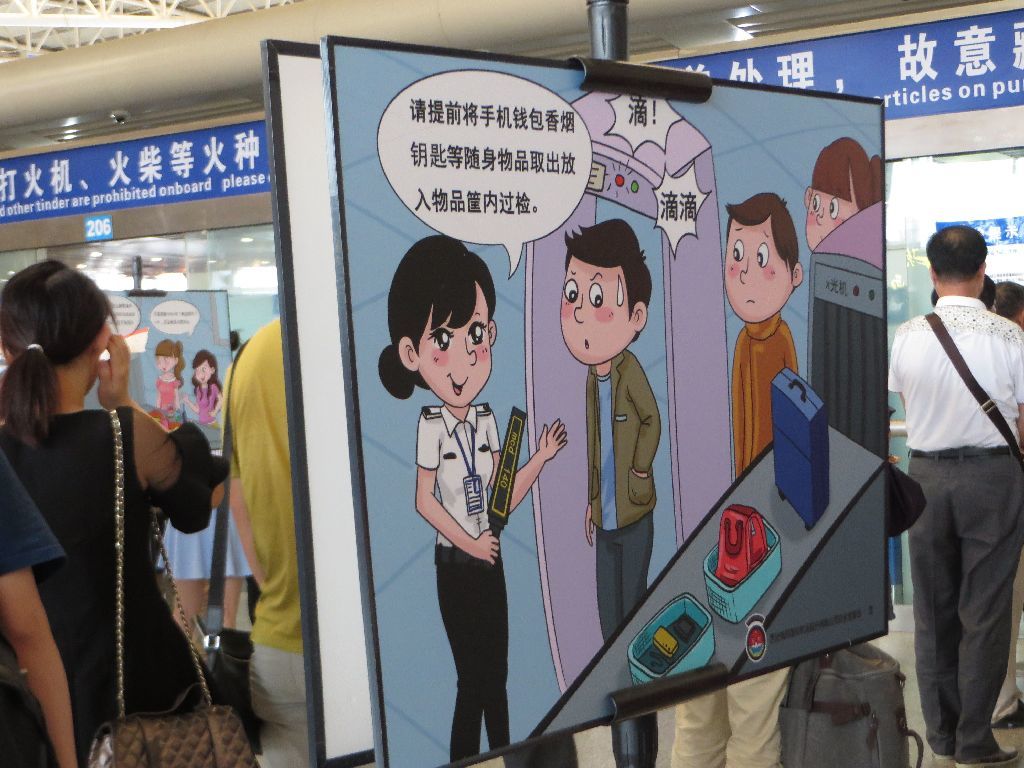
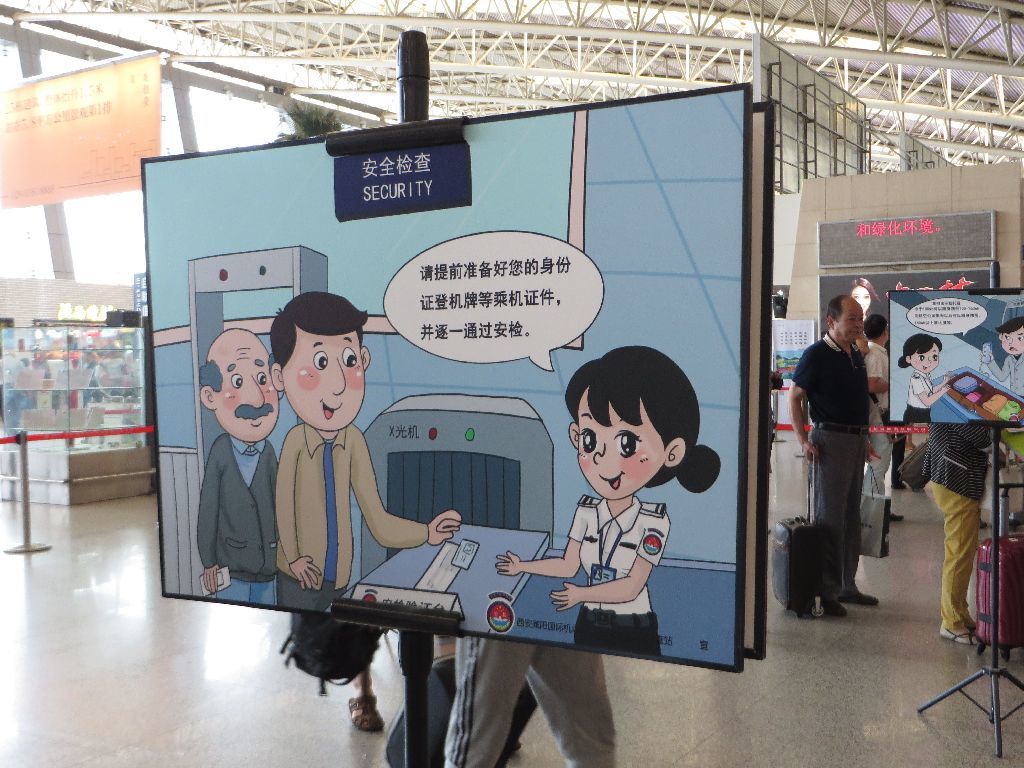
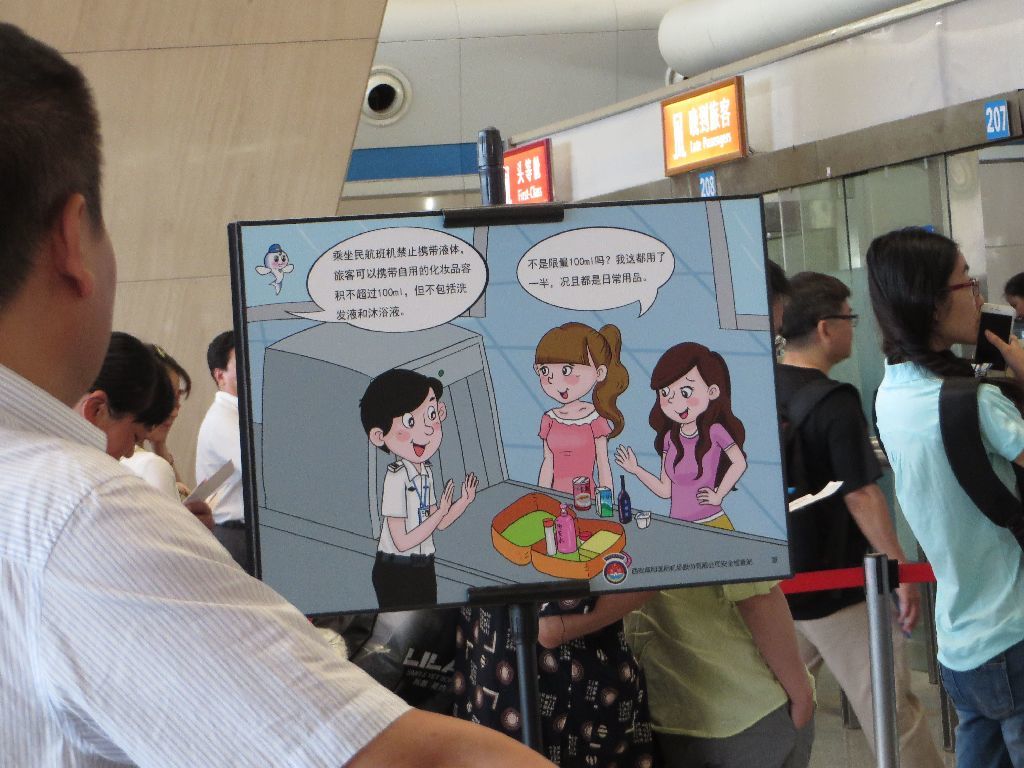
The last one has to do with the restrictions on power banks above the 100 / 160 Wh; this is the only one where the passenger does not seem very happy.

With one exception (I forgot where), body search was systematic at the security check during that trip, no matter if the metal detector had beeped or not. I do not know if this reinforcement of security measures if temporary, or if there is an official reason for it (the Chinese authorities seldom explain why they reinforce security when they do, anyway).
Anyway, I am now airside
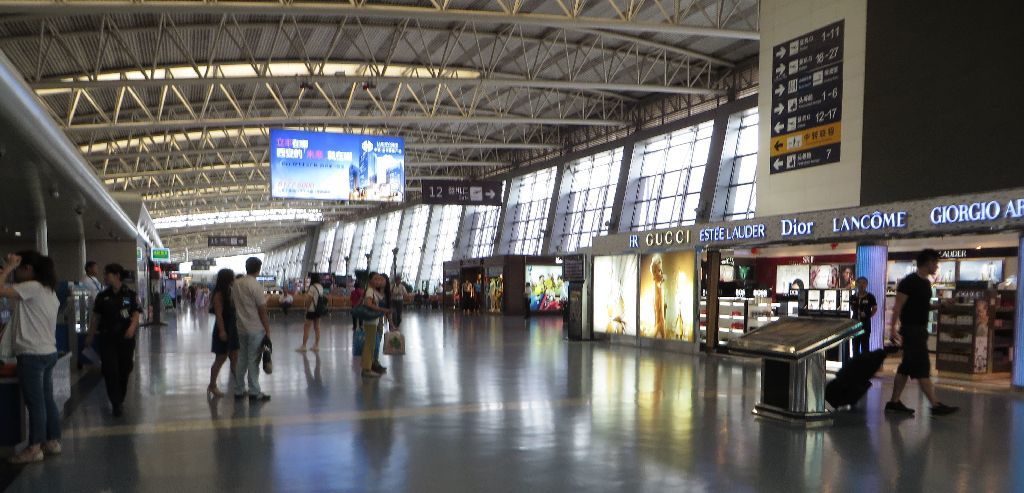
XIY is not a very plane-spotter friendly airport, because few windows are accessible; on the other hand, they are not smeared by the rain due to their incline. I wiggle my way to this location next to Gate 12.
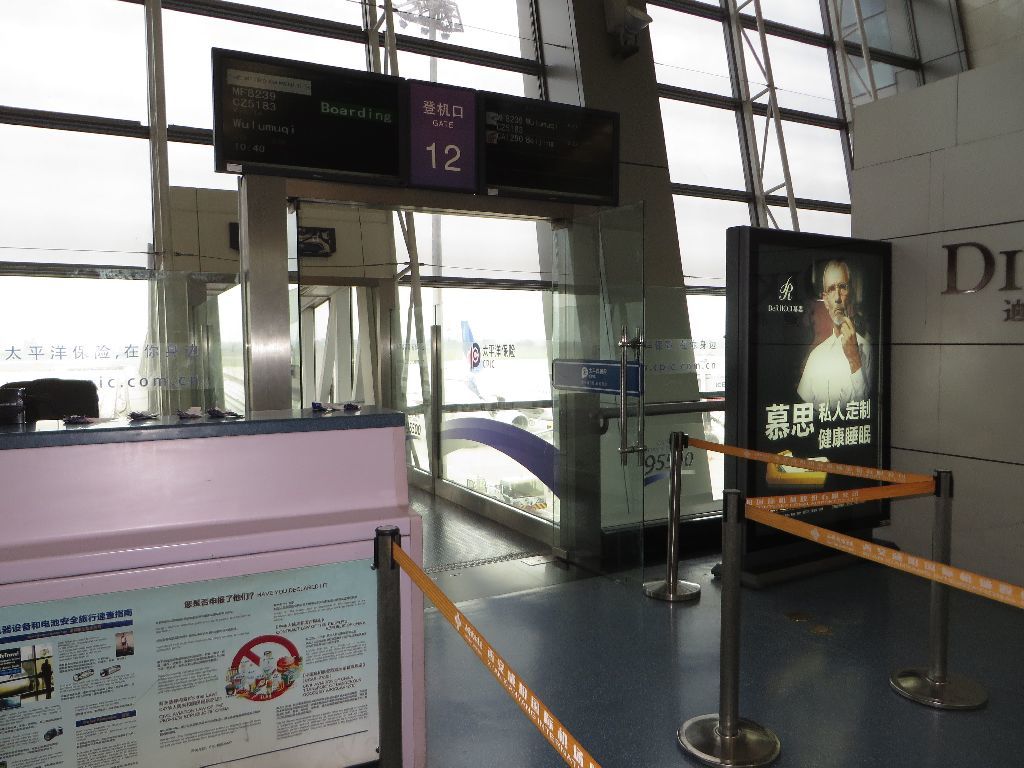
… in order to reach this narrow place that a Chinese plane spotter has already found before me
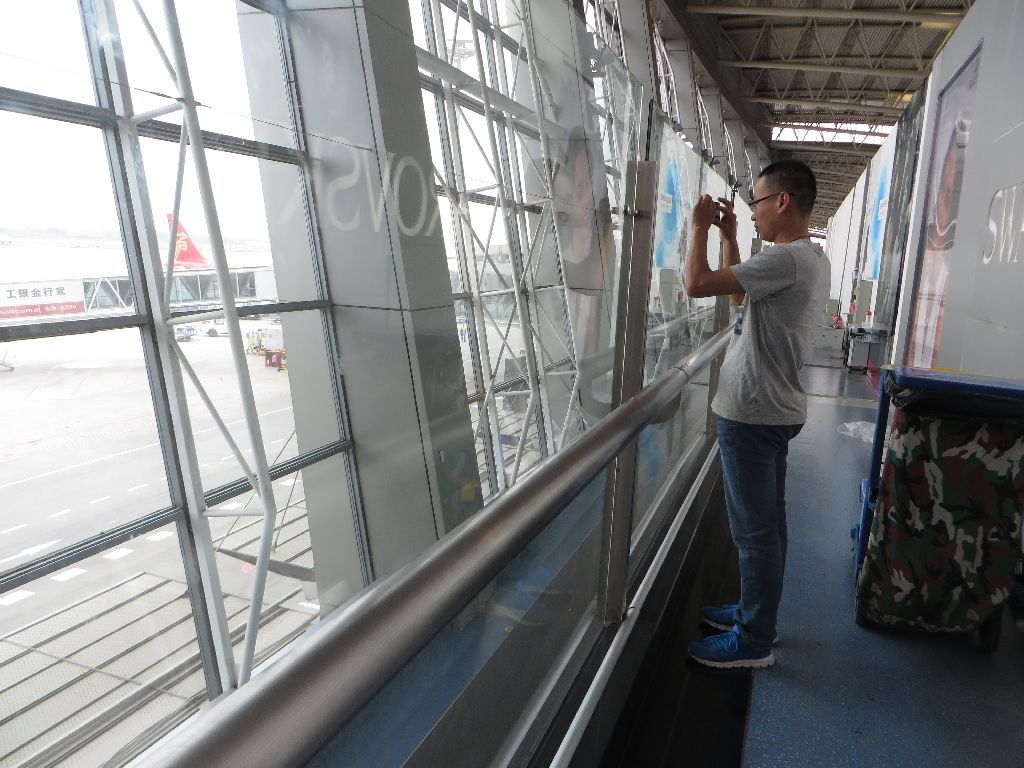
A Shenzhen Airlines 738; there are many in China
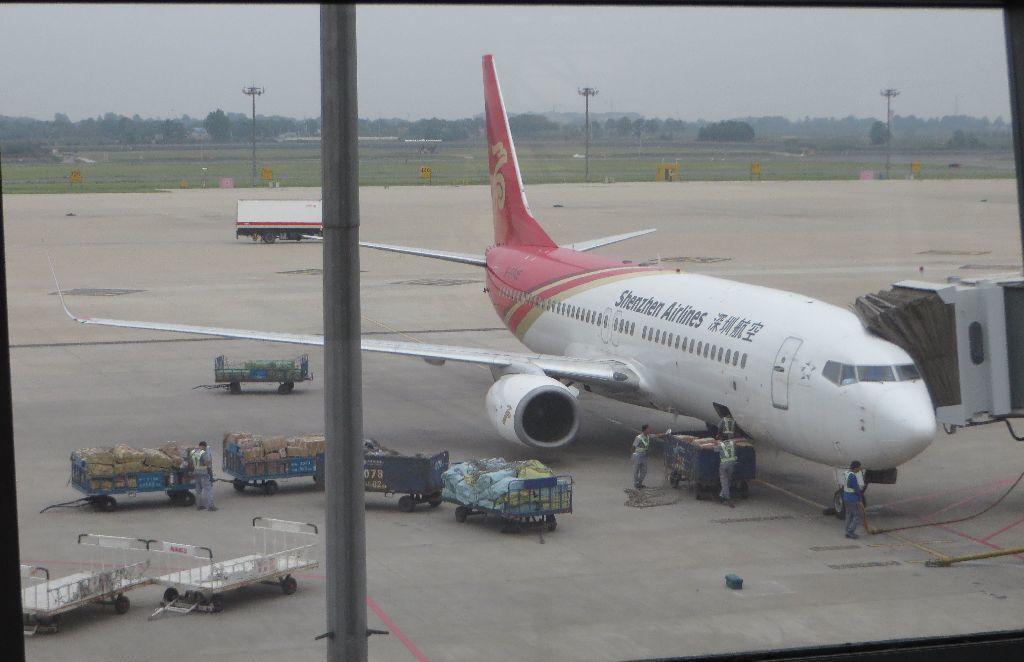
Less usual, a Tianjin Airlines E-190
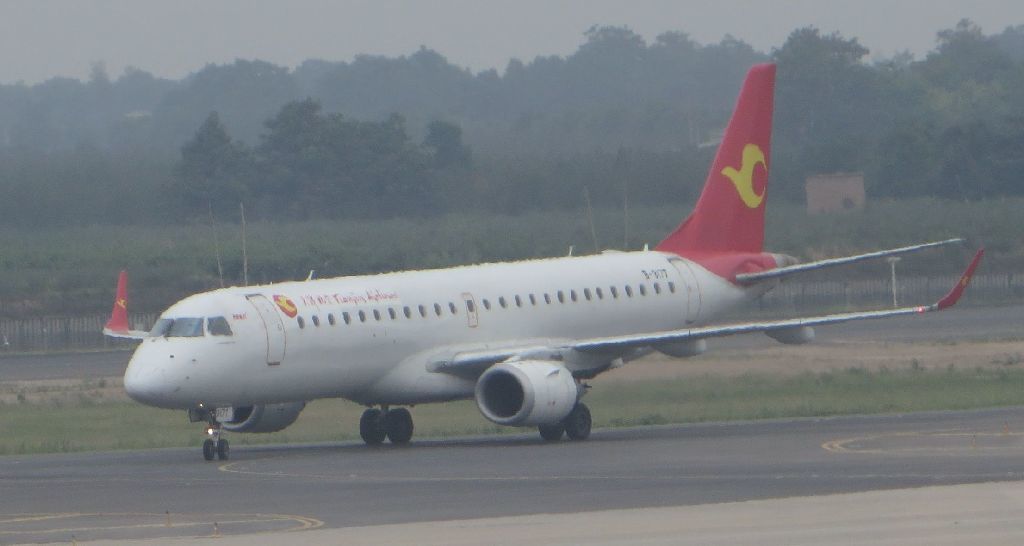
Even less unusual, a Qingdao Airlines A320
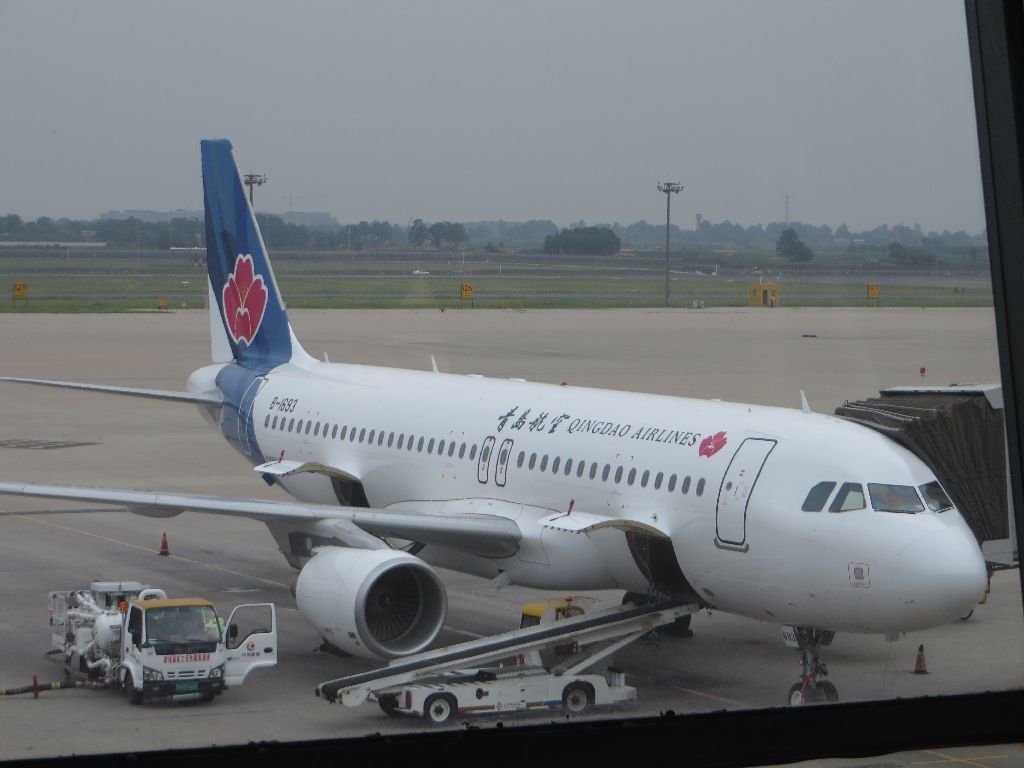
An obviously local airline: Chang’an 长安 is the ancient name of Xi’an, at the time when this was the Tang Dynasty’s capital. That is where the name of Beijing’s Chang’an Avenue (between the Forbidden City and Tian’anmen Square) comes from.
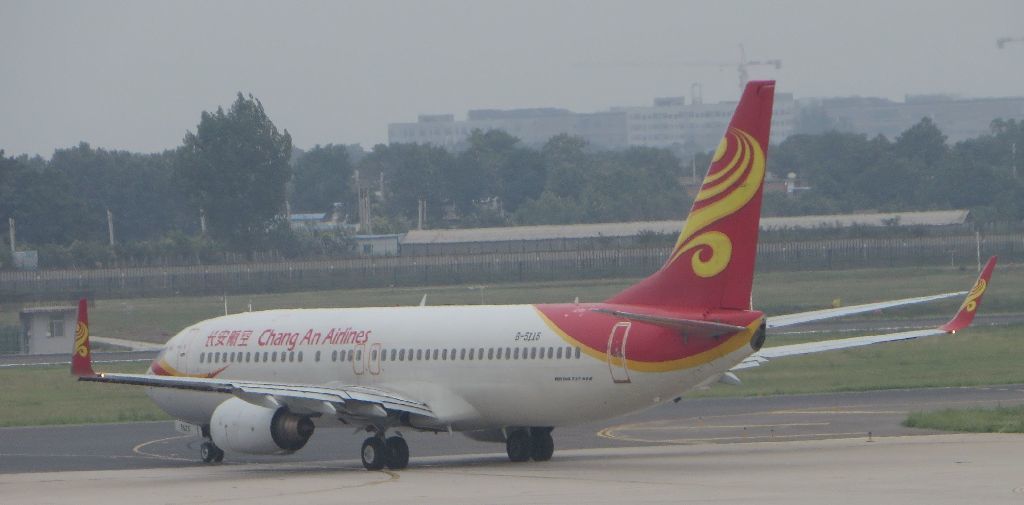
It is already time for boarding, but since I am travelling alone, I can keep taking pictures until the last moment.
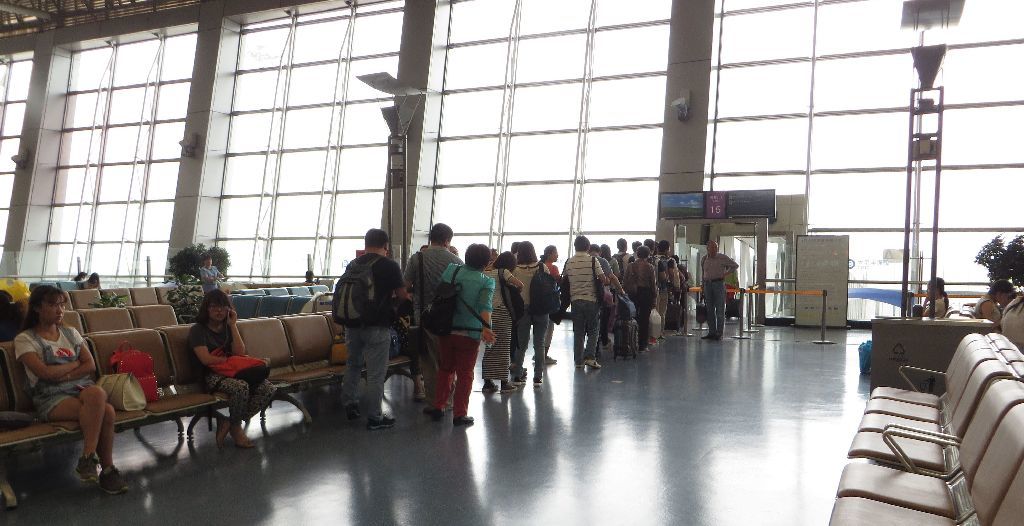
This is the A320 operating my flight
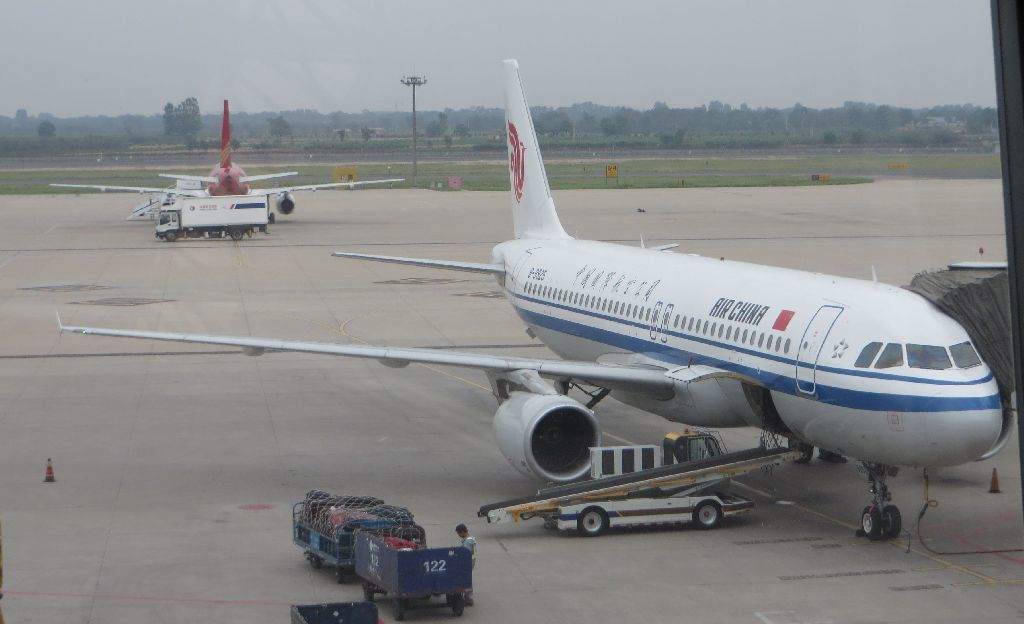
For plane registration number geeks
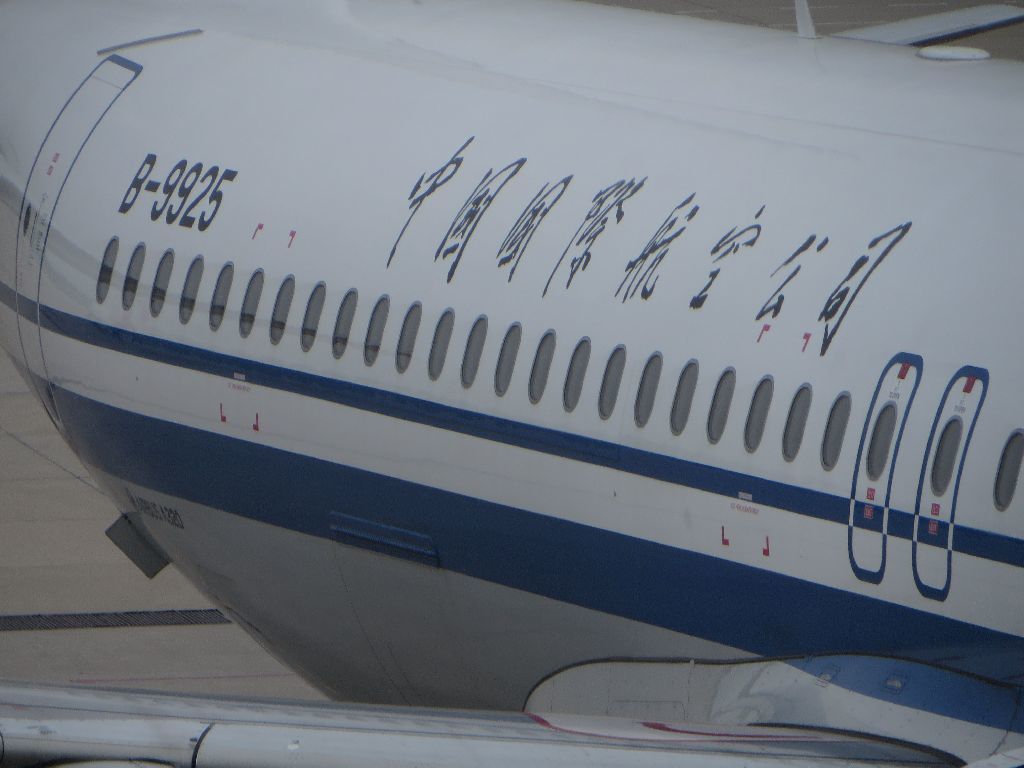
Note the pigtails on the silhouette of the woman on the toilets’ pictogram!

Now that I have exhausted all the resources of the terminal, it is time for me to take this jet bridge with windows.
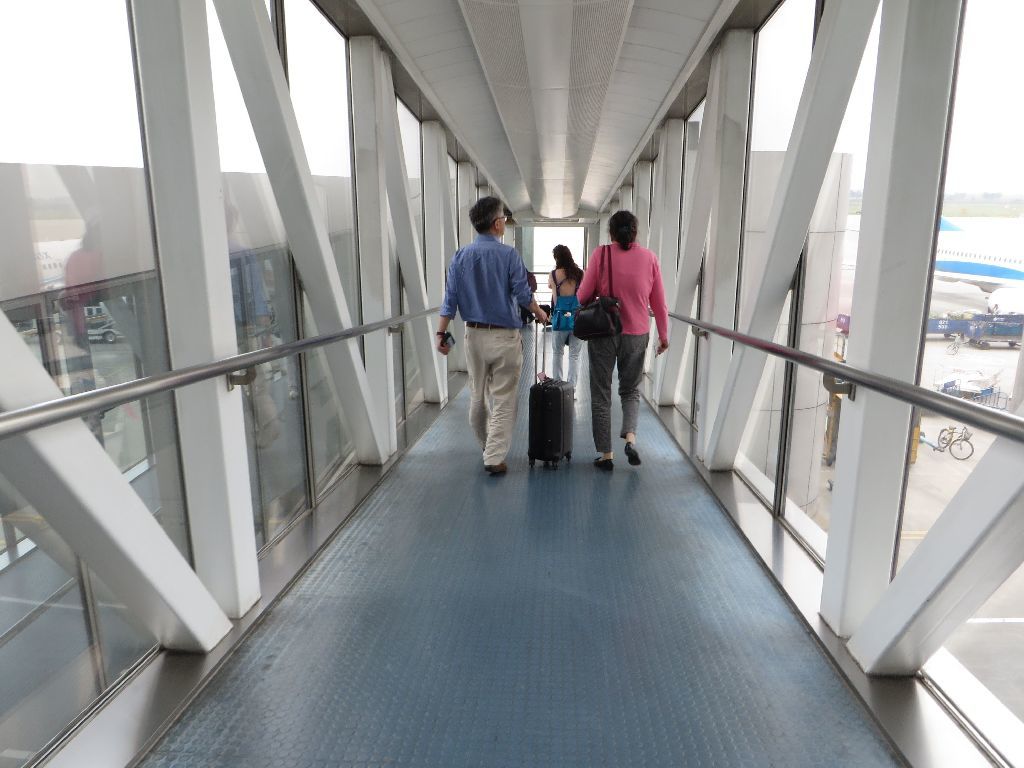
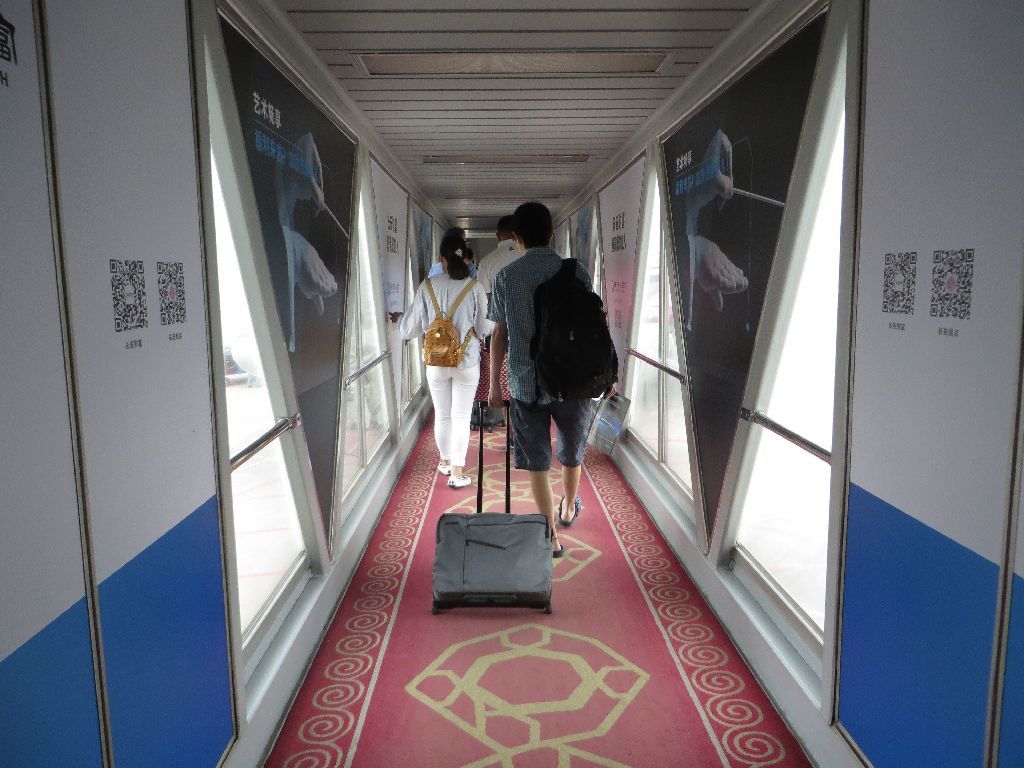
We find again Chang’an in the name of the company which bought advertising space here.
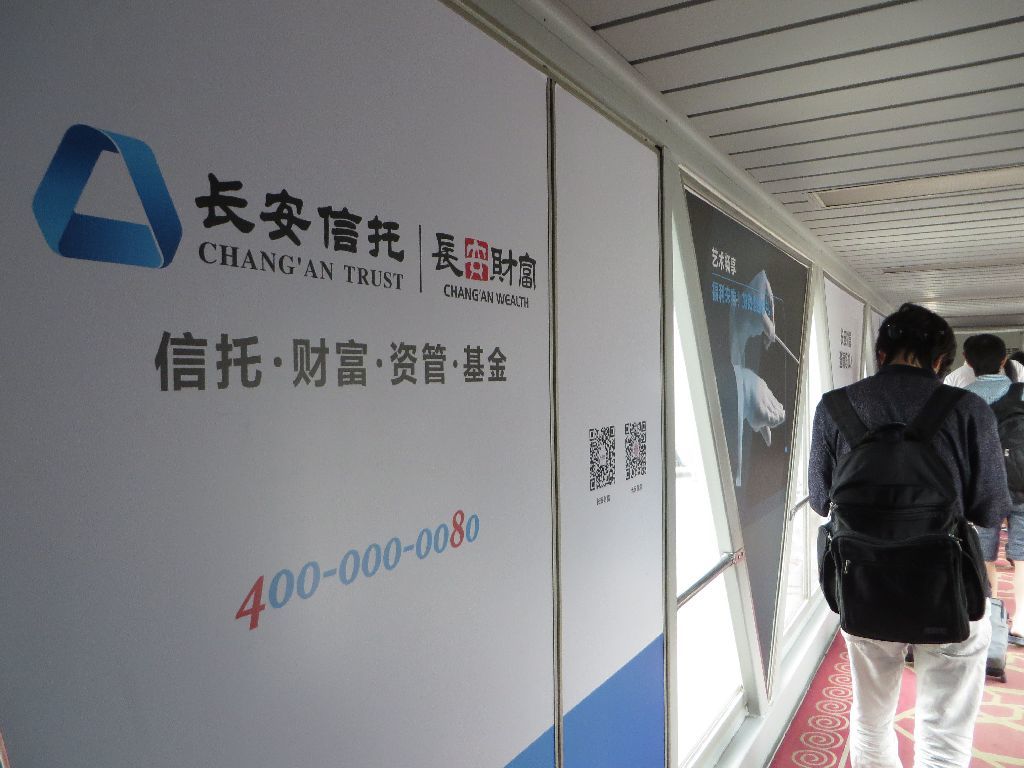
Xiamen Airlines 738 parked at the next gate

A minor jam at the entrance of the plane.
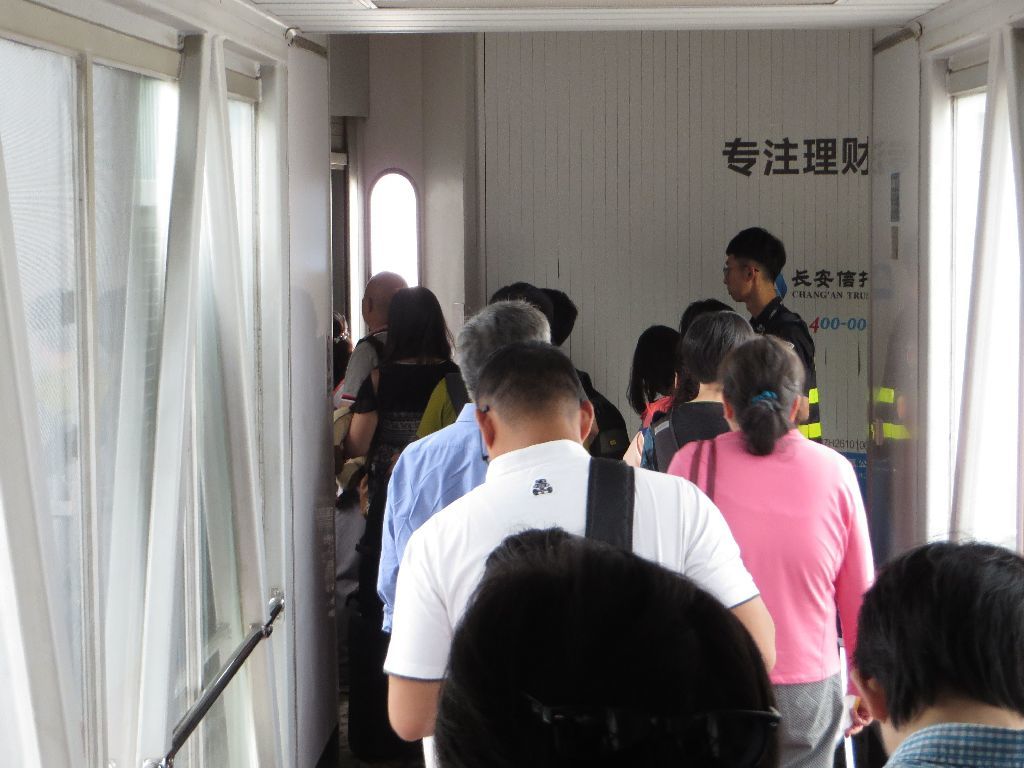
This is not a refined way of presenting them, but there is a pile of copies of the China Daily at the end of the jet bridge. The China Daily is one of China’s English language major daily newspapers. It is of course under government control and impeccably politically correct, but not as nationalistic (and sometimes xenophobic) as the Global Times.
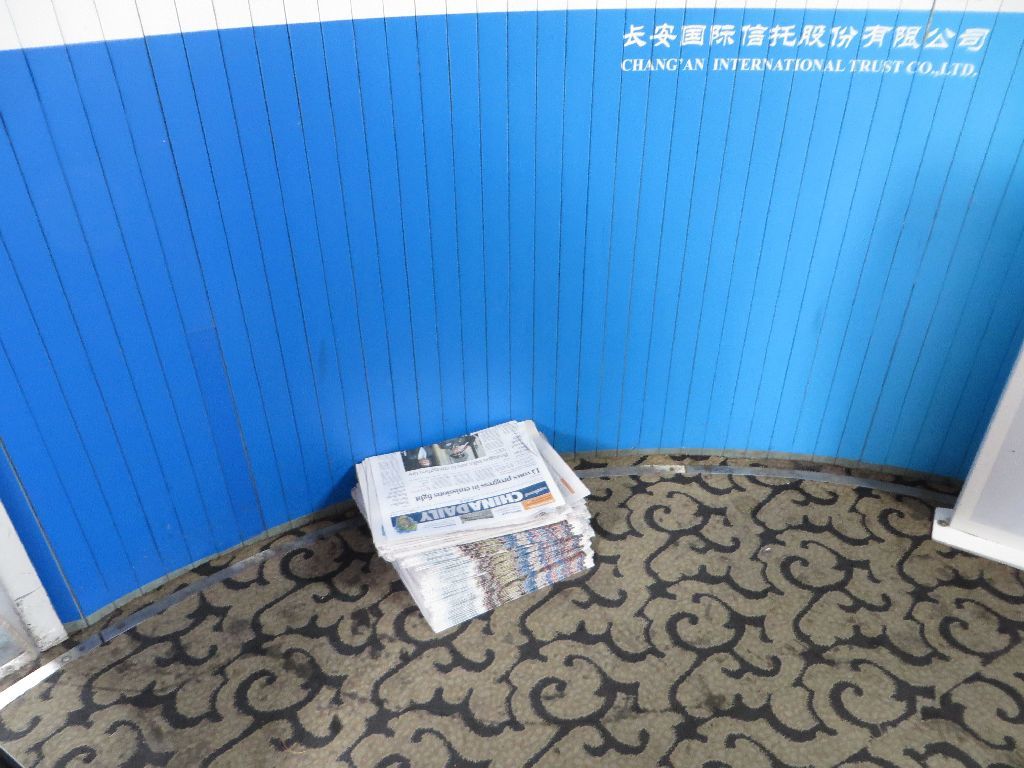
Traditional view from the extremity of the jet bridge

The J cabin, with as usual 2 rows in a 2+2 layout.

This time, I am seated in the first row of the Economy cabin, which has an exceptional seat pitch. That is when realize that I left my measuring tape in my checked luggage, and I use my copy of the China Daily as a makeshift tool: 55 cm.

That leaves ample space for the legs. The only problem is that there is no space for your hand luggage, but I managed to place my laptop case under the neighboring seat, because it was empty and the passenger behind did not have any stuff to put there.
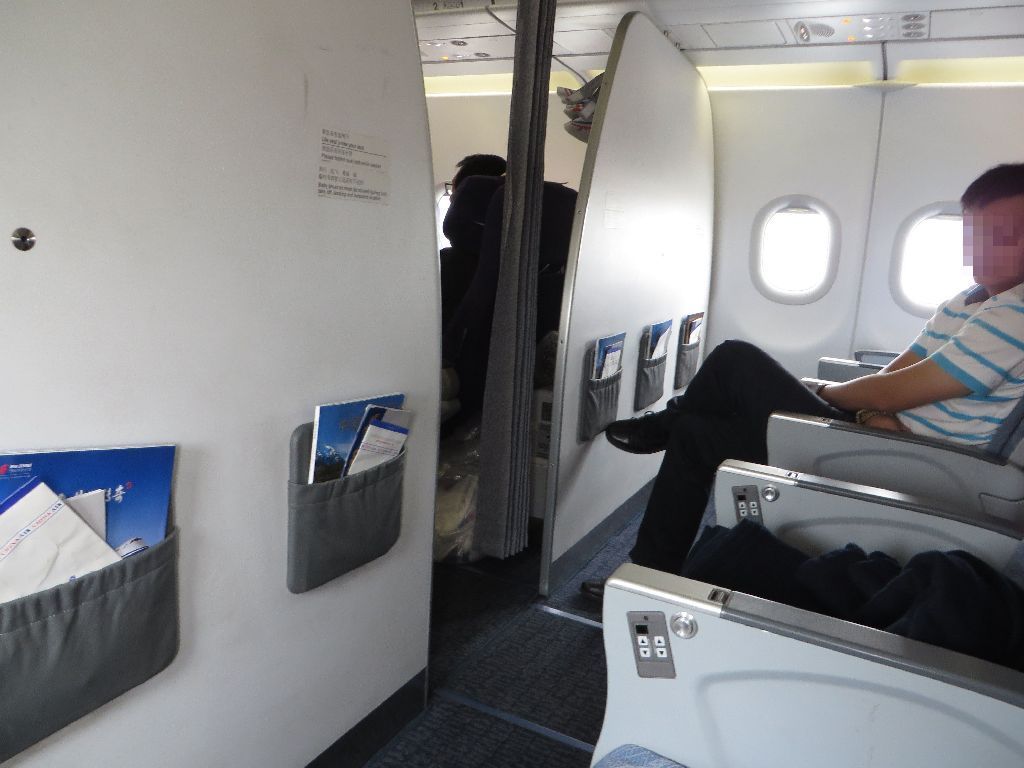
When you have LCC-compatible legs, there is no problem

Is it safer to hold your kid in your arms in case of turbulence?
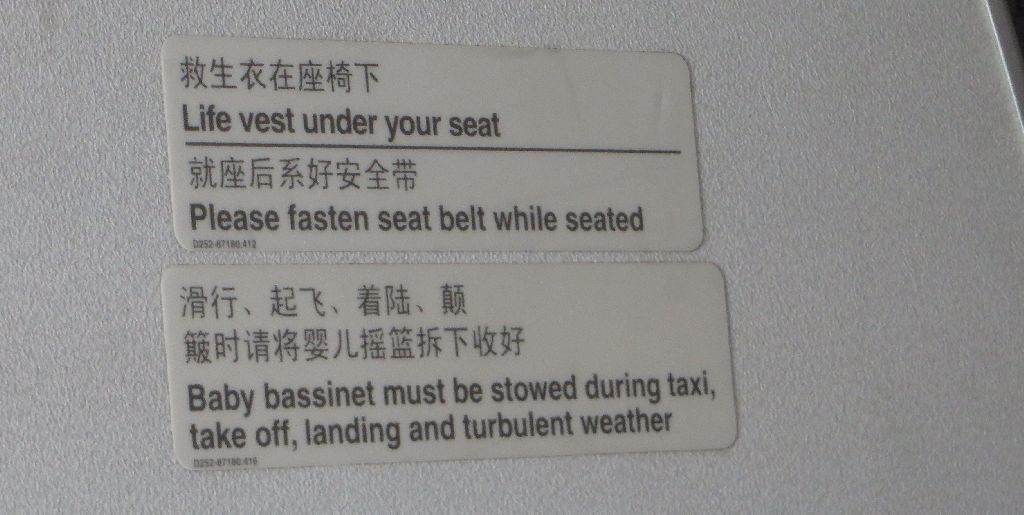
The overhead lights

The safety card, both sides
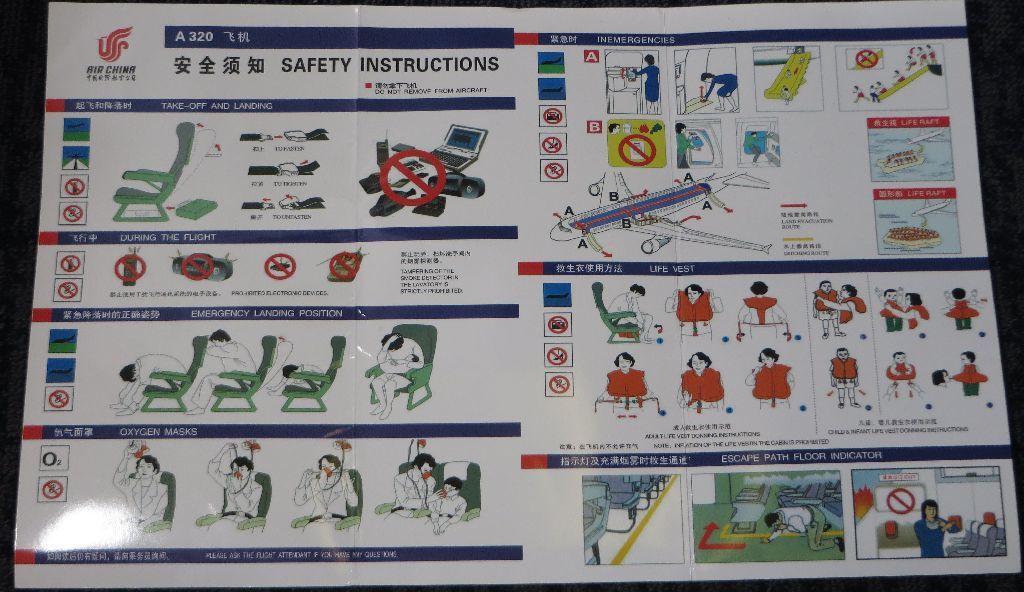
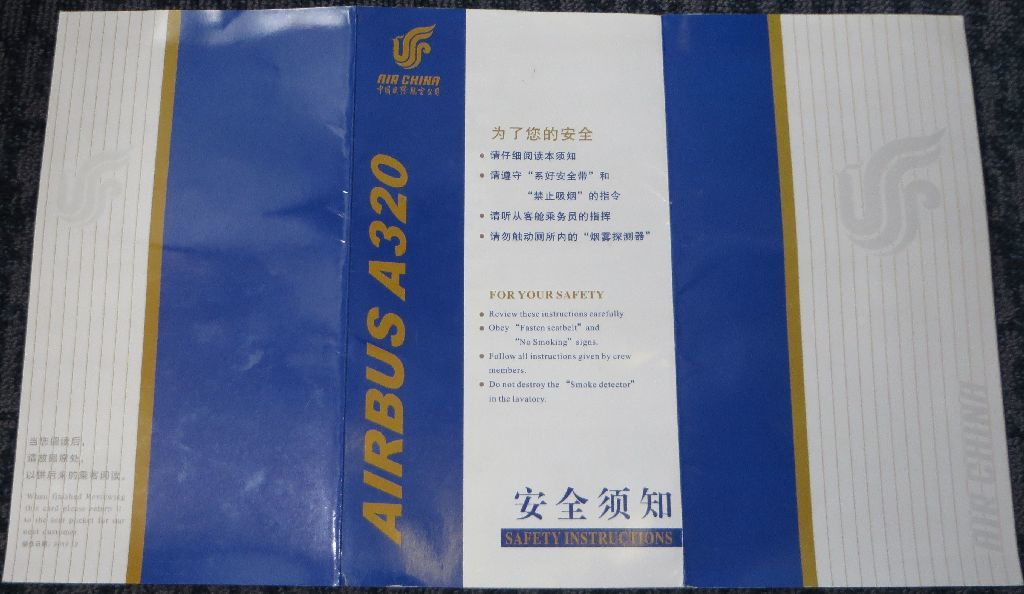
Air China’s route network in the in-flight magazine.

Contrary to CZ, CA identifies separately domestic, regional (Hong-Kong and Macau) and Taiwan flights, respectively, leaving in the shade the exact category of the latter.
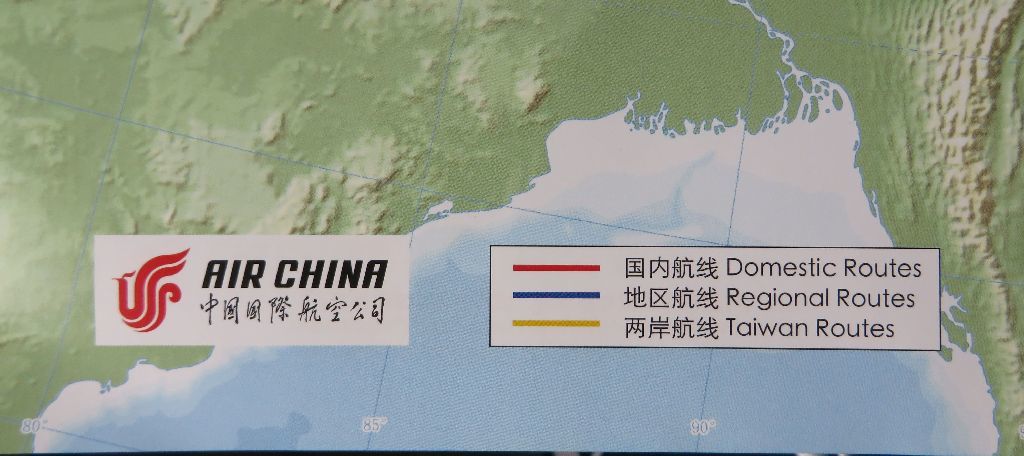
On the other hand, CA could not avoid including the South China Sea in the map: it is irrelevant for its air routes, but Chinese law has stiff fines for publishing maps of China which do not represent the entire territory, including all its claims on land and sea. This is the probable reason why you cannot buy a new copy of the Lonely Planet guide on China in that country: the map which appears in the first pages is illegal (you can find second hand copies left by travelers, though).
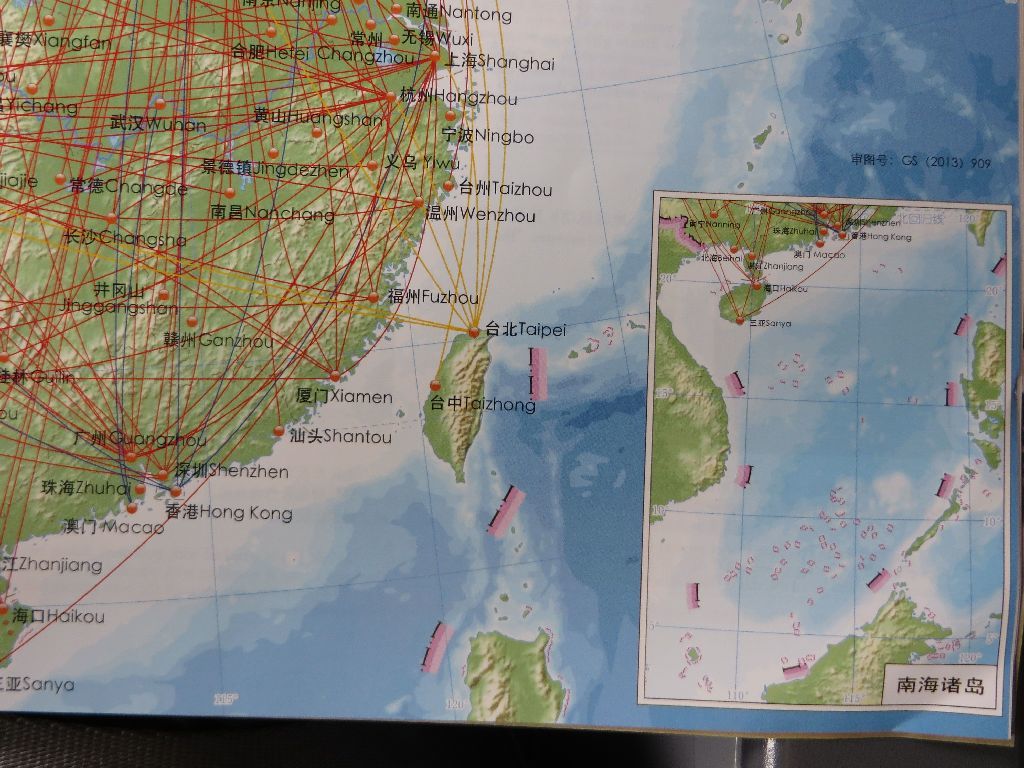
The international route map is interesting too: there are flights to Europe and North America, but none to Africa.

And only one reaching South America, in continuation of a flight to MAD
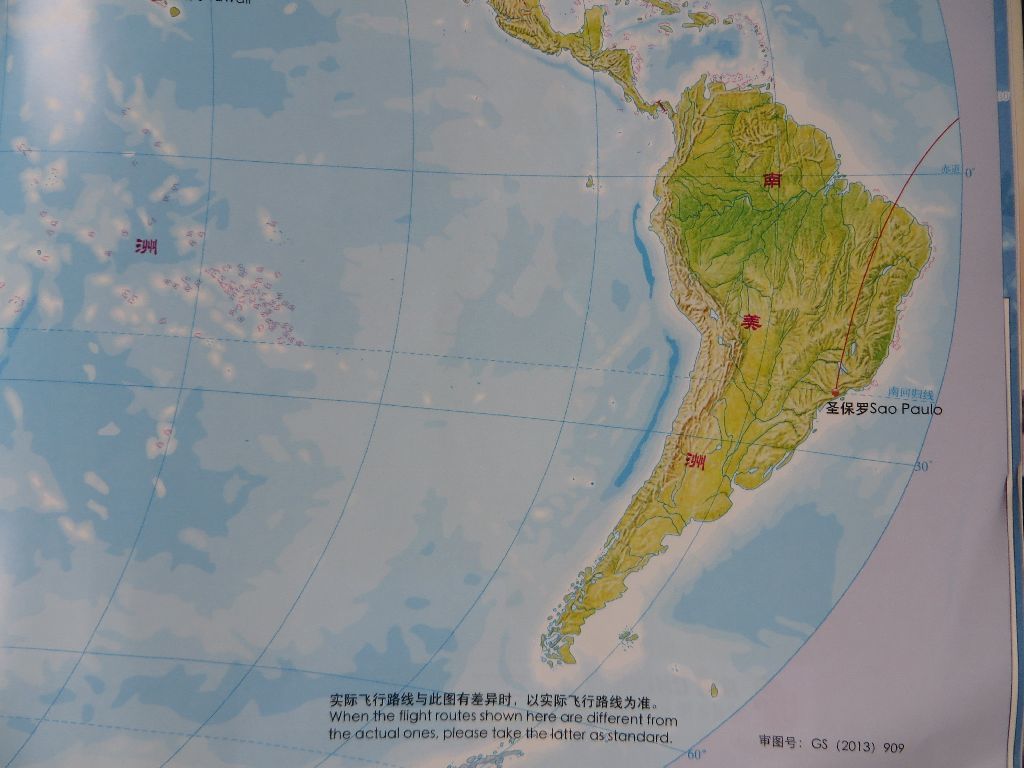
The planes parked at the terminal:
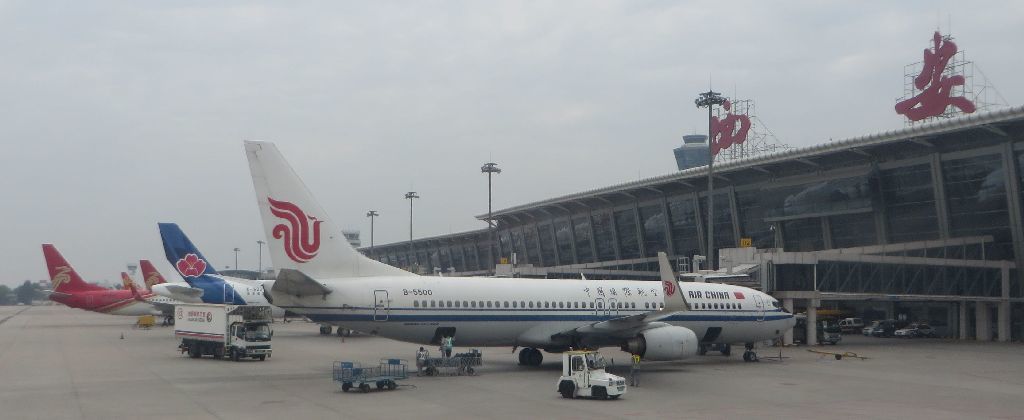
This aircraft is really from her hub: Kunming is the capital of Yunnan Province, in the extreme south of China.

A more commonplace CZ A320

Dornier 328-300 Jet belonging to Hainan Airlines.
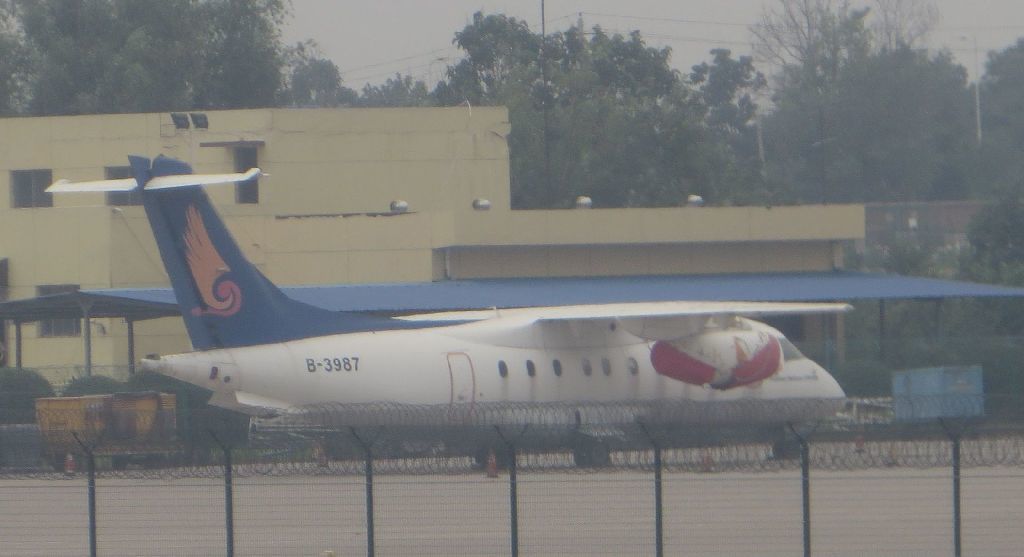
An A330 belonging to I-Fly, a Russian charter airline

Take-off is right on time
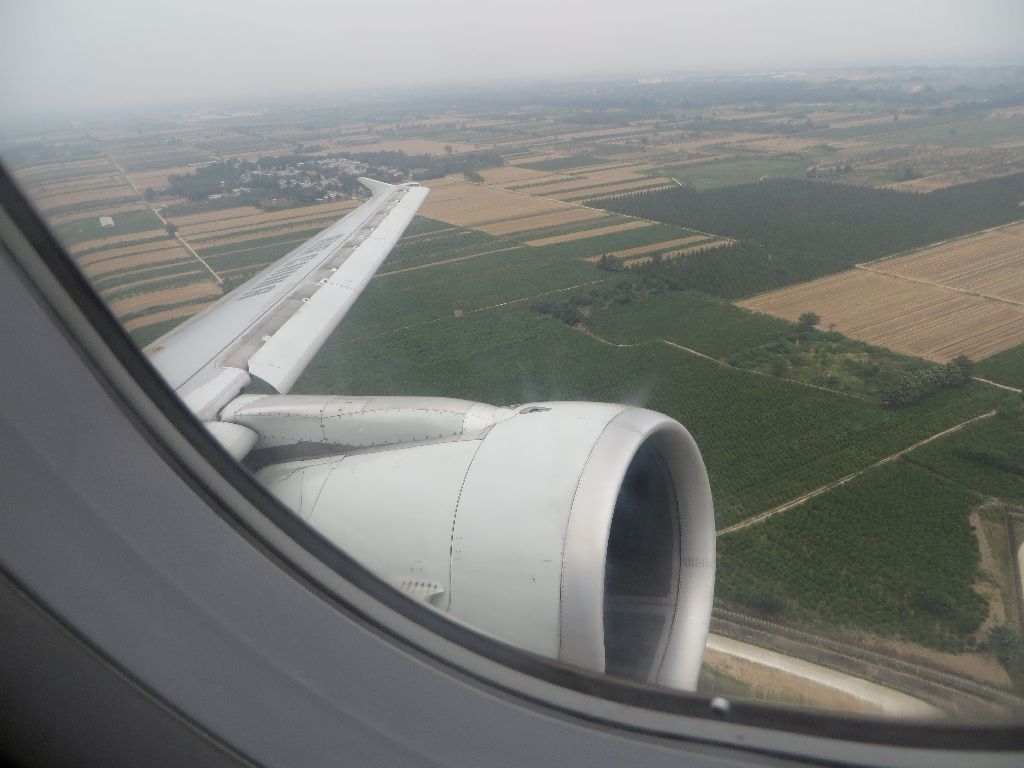
This viaduct crossing a valley: a high speed line?
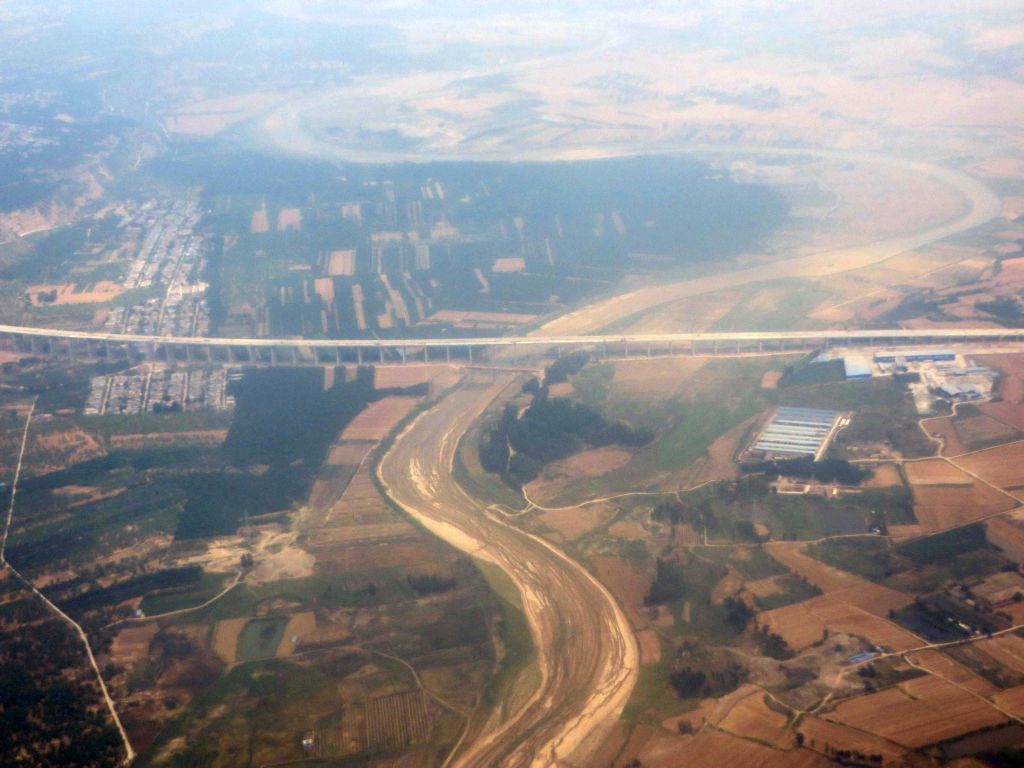

No, a future tollway, because there is future rest area here
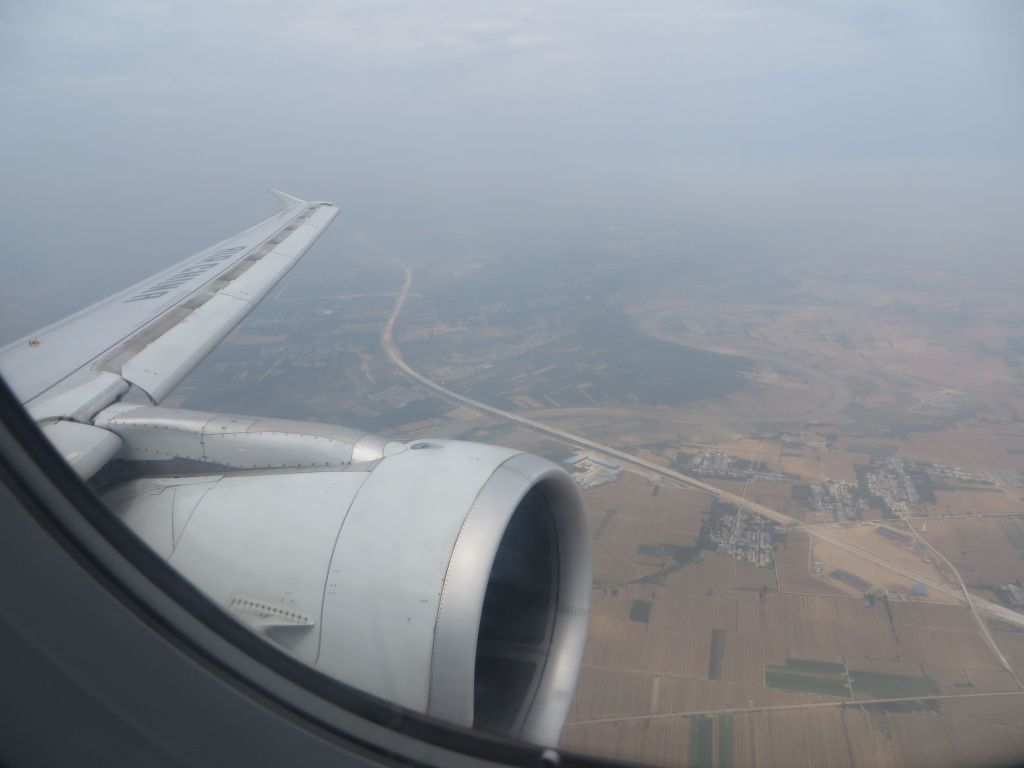
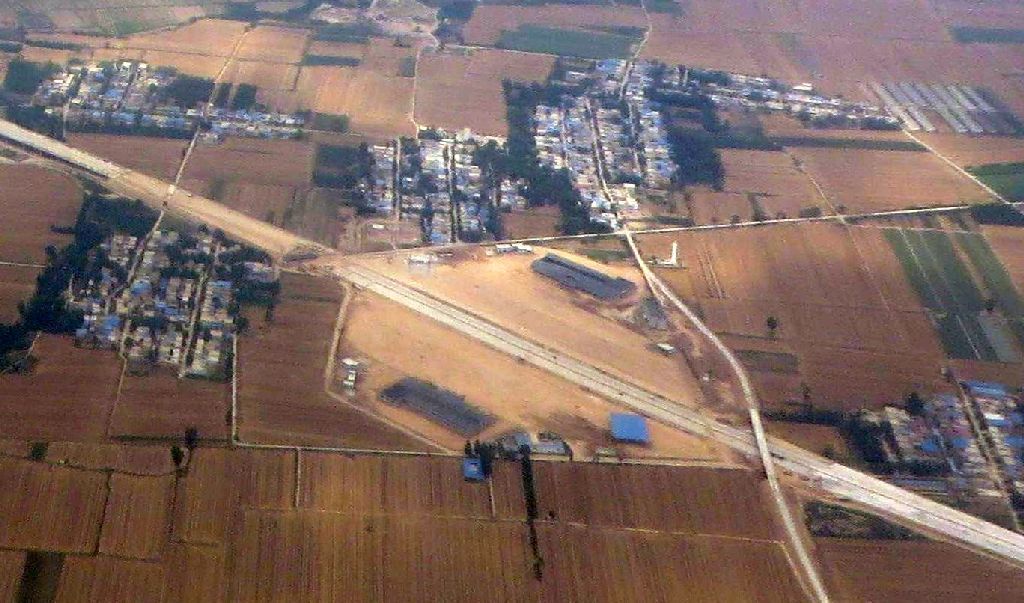
Tollway exits and toll gates of a standard design, later
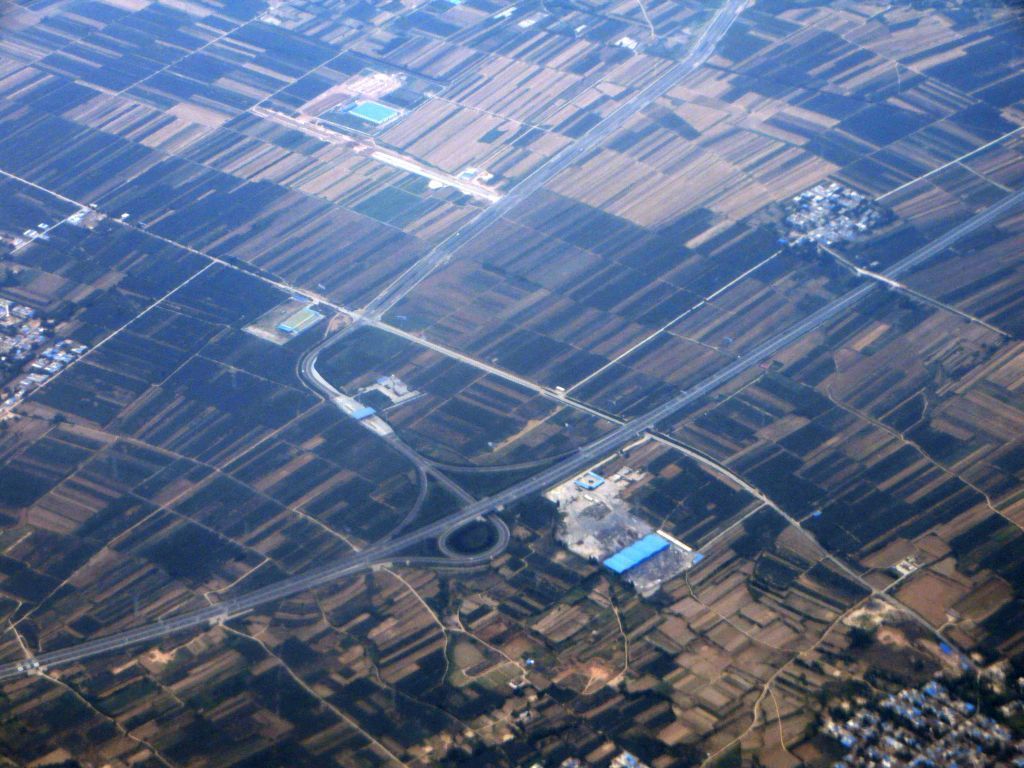
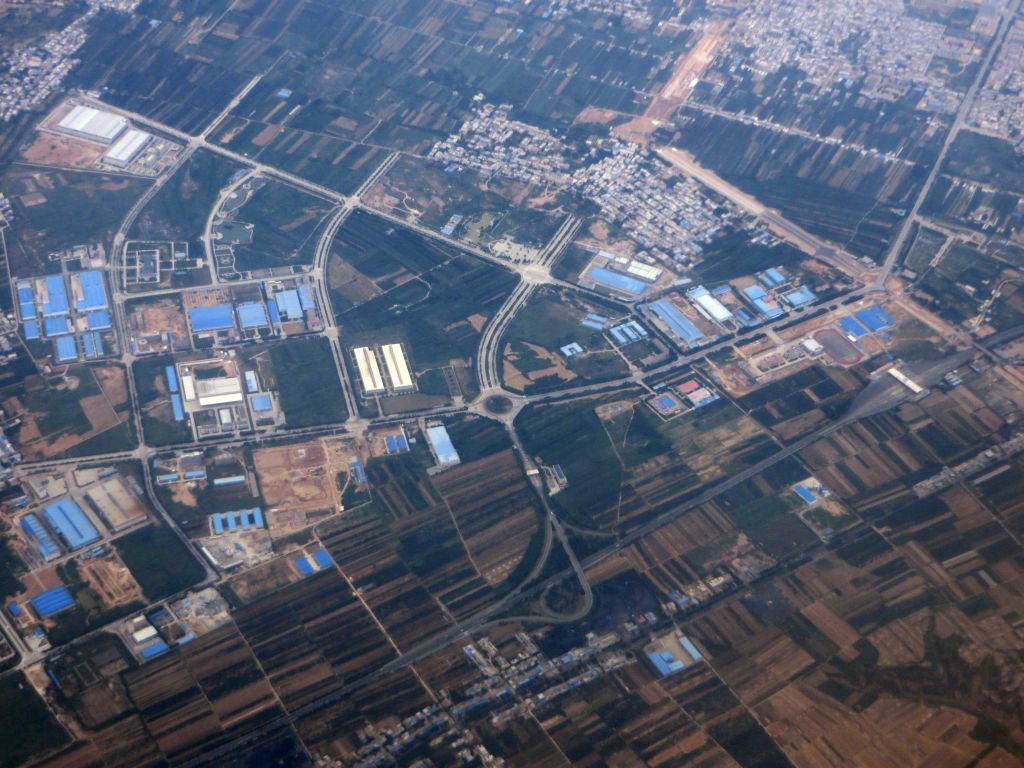
The countryside is still very dry
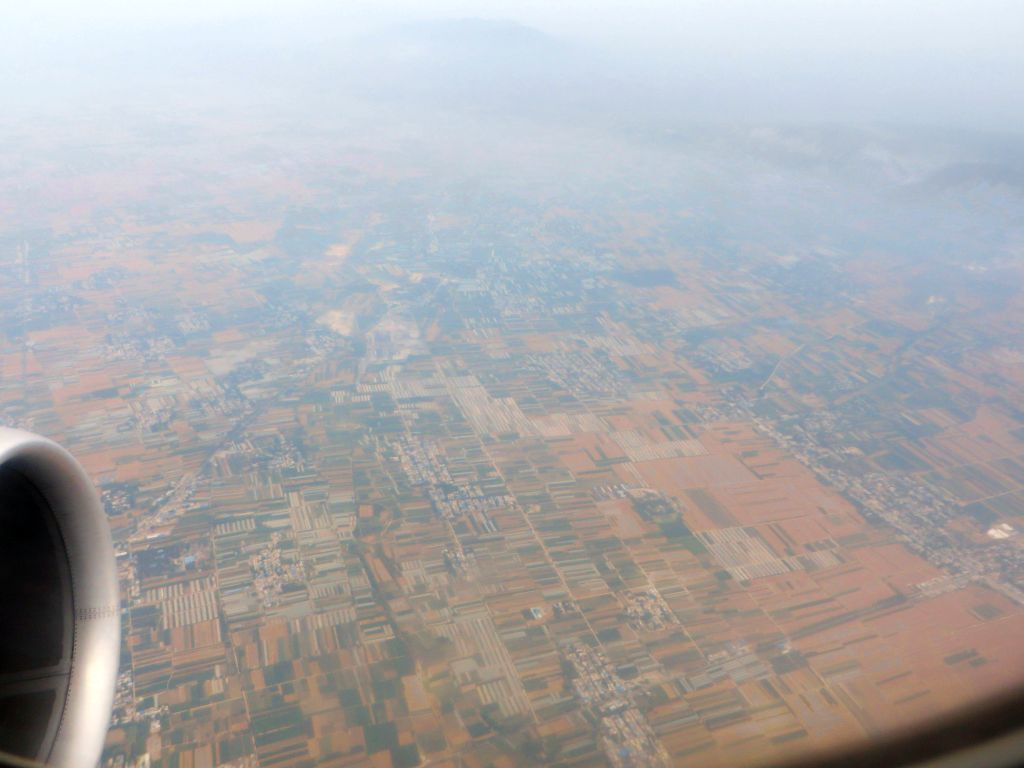
Low quality headphone are distributed
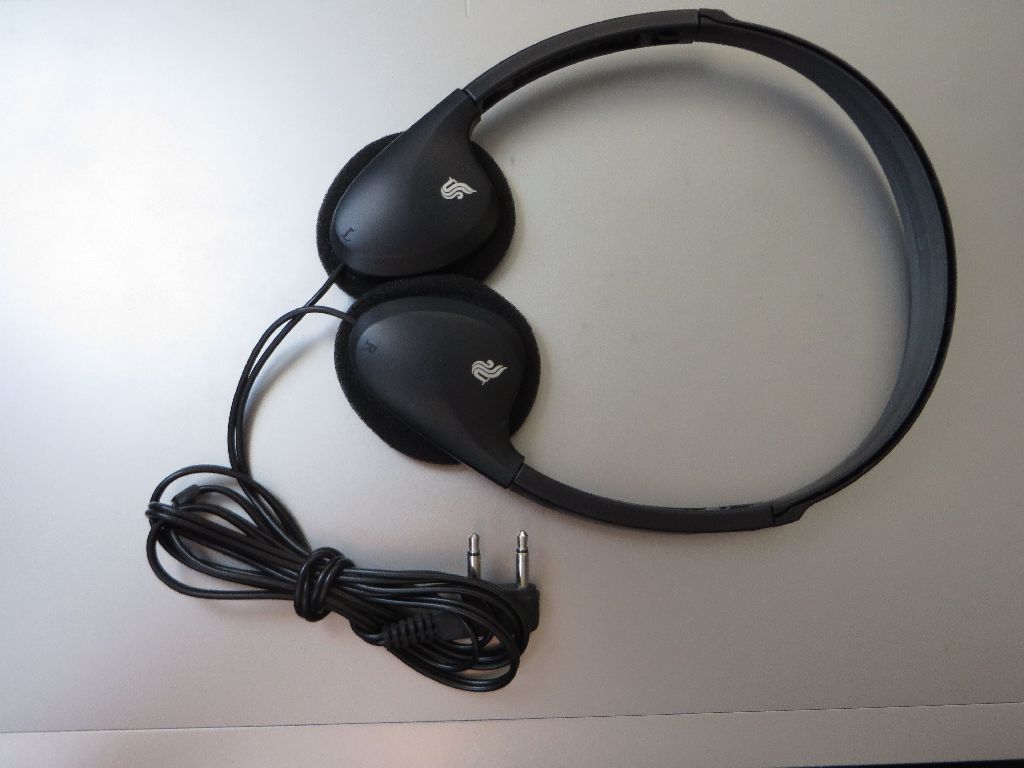
… but the only audio channel is that of the IFE’s program
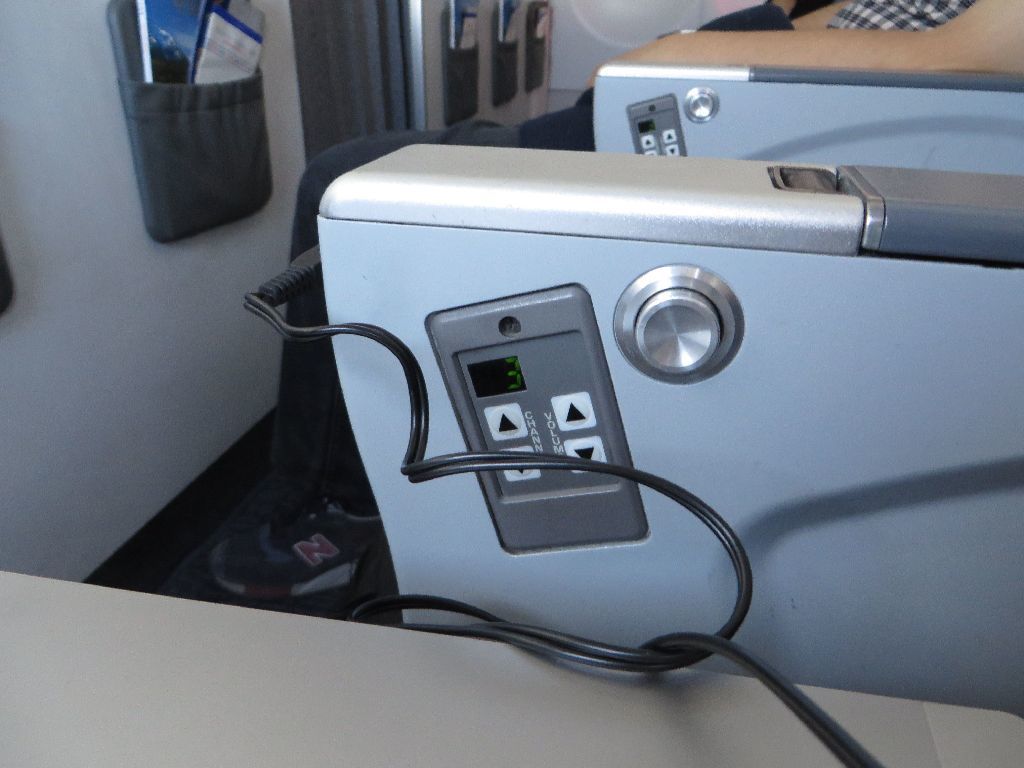
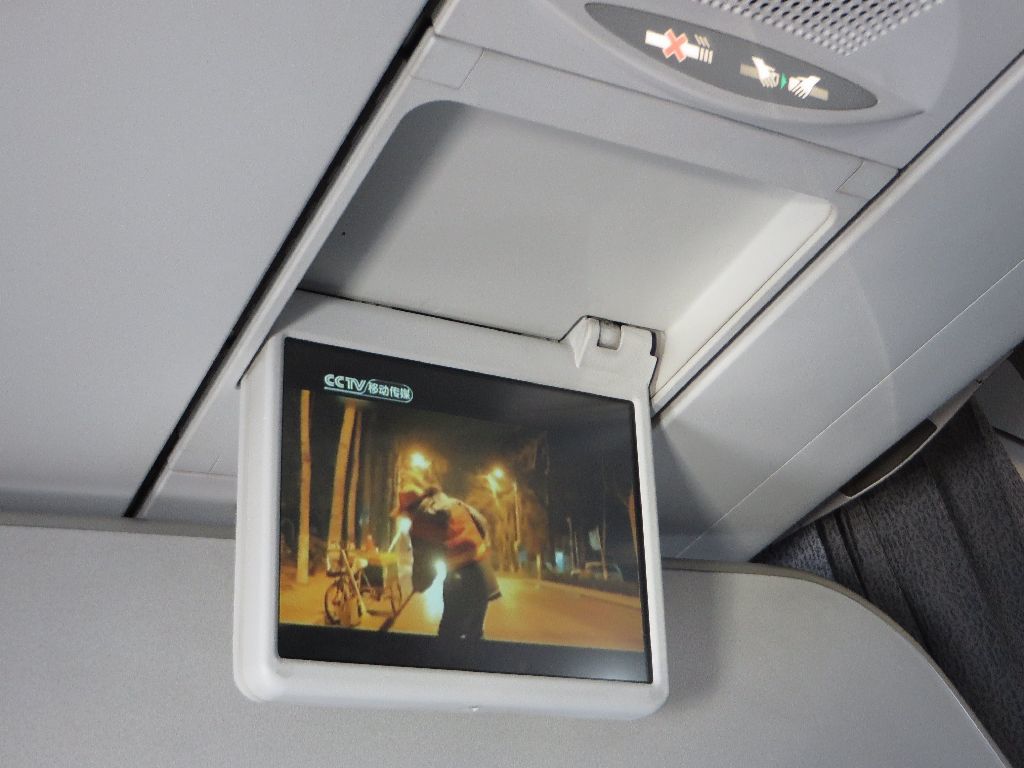
Distribution of the catering
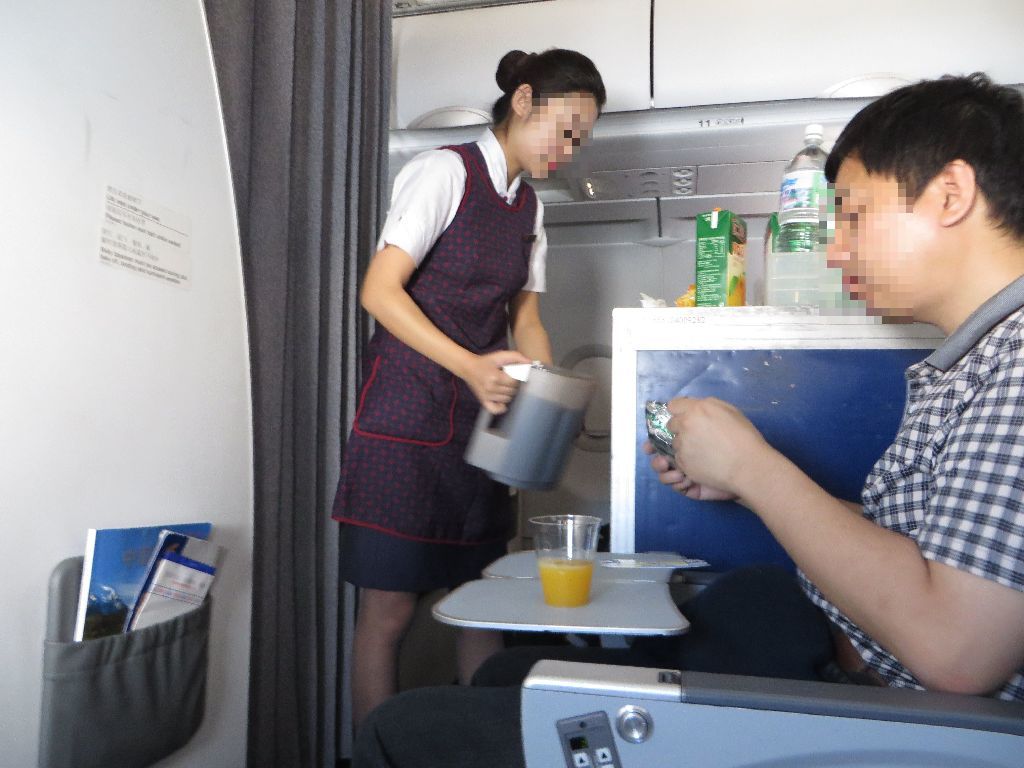
The catering is not what you would want to board this flight: you only get this small sandwich and a drink.
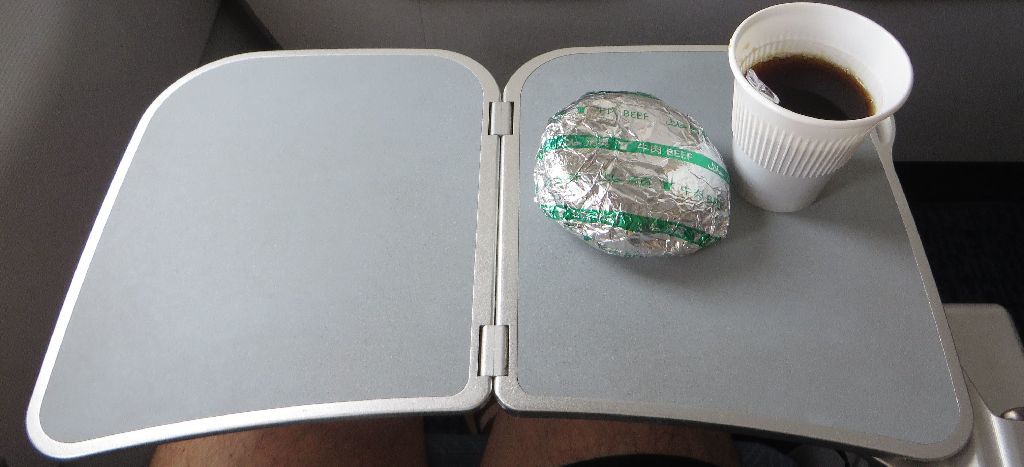
The coffee… is Air China coffee: not very good, but could be worse
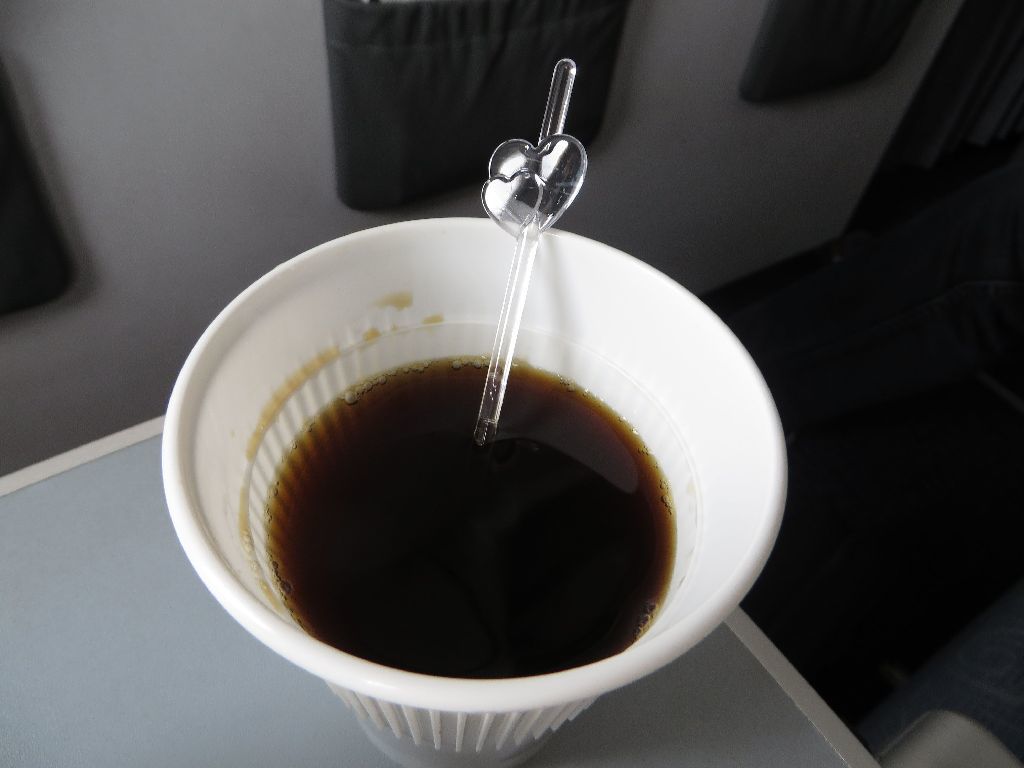
The sandwich is a Chinese kind that I had already tasted and which I found quite stodgy. A coffee, even one provided by Air China, was useful to help eating it.
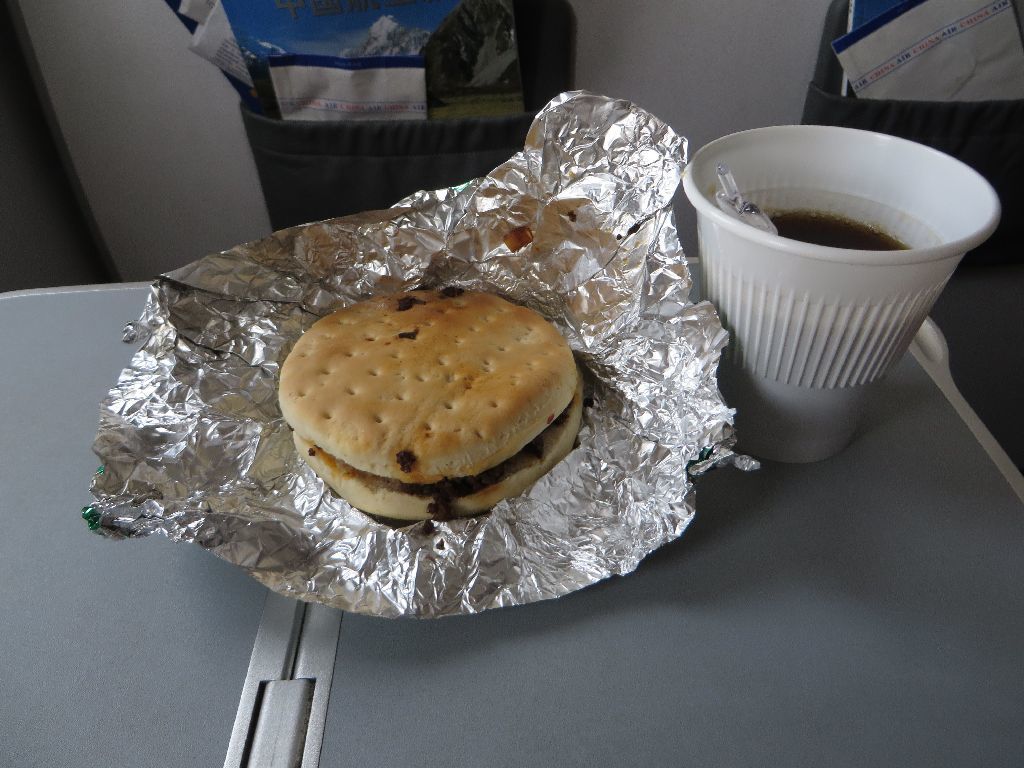
A reservoir that I have not identified
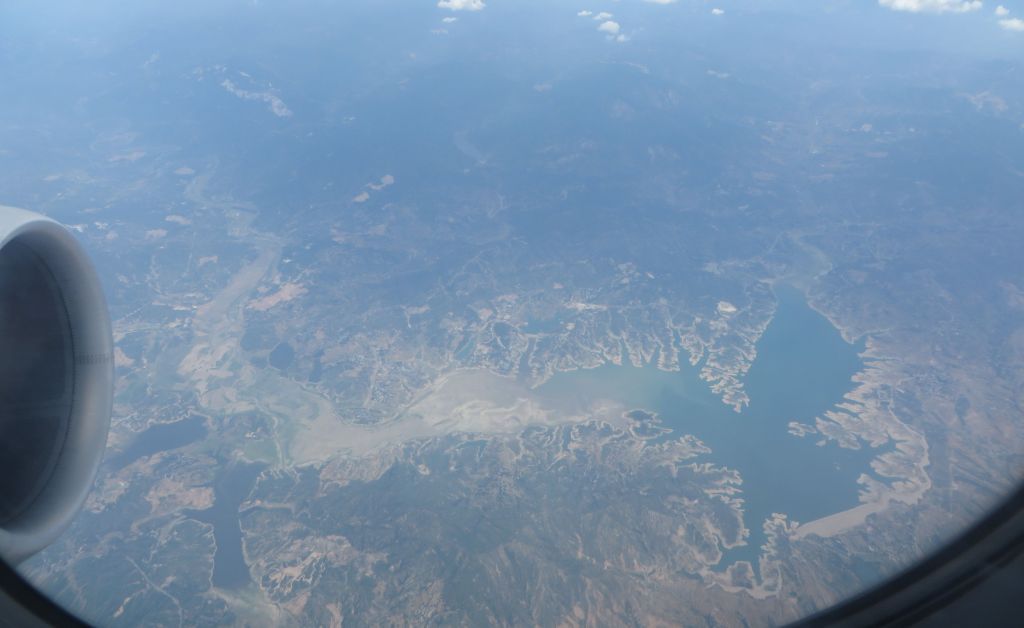
Air to air with a Sichuan Airlines A32x with sharklets

She was going to turn towards the north when I saw her
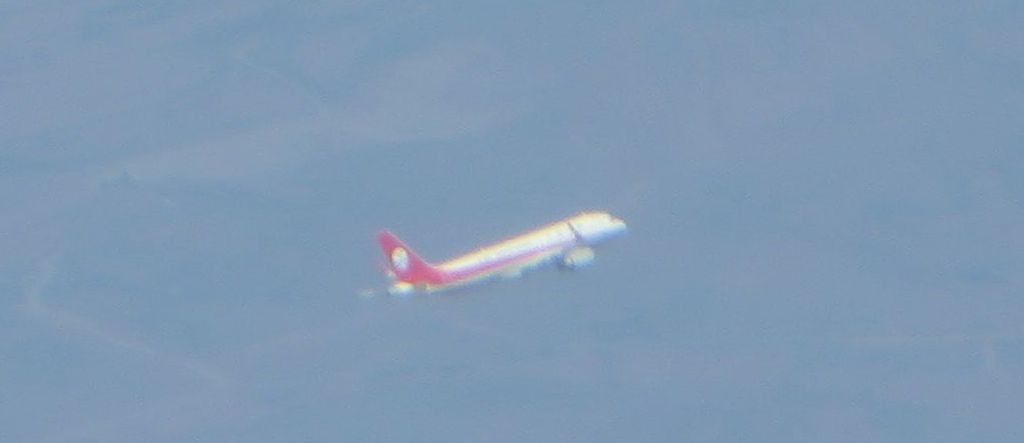
The plane reaches the Henan and Hebei plains somewhere near the border between these two provinces.

This countryside is both very fertile and heavily populated: see the density of the villages there!
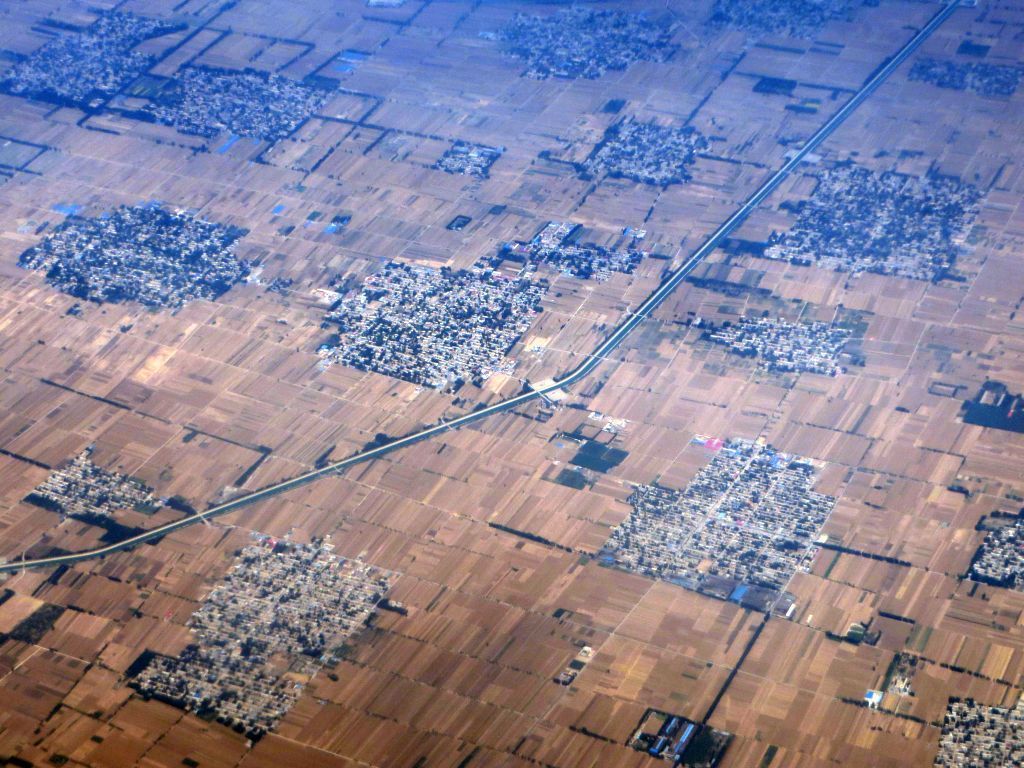
A PLA (People’s Liberation Air force) airbase near Dingxing 定兴
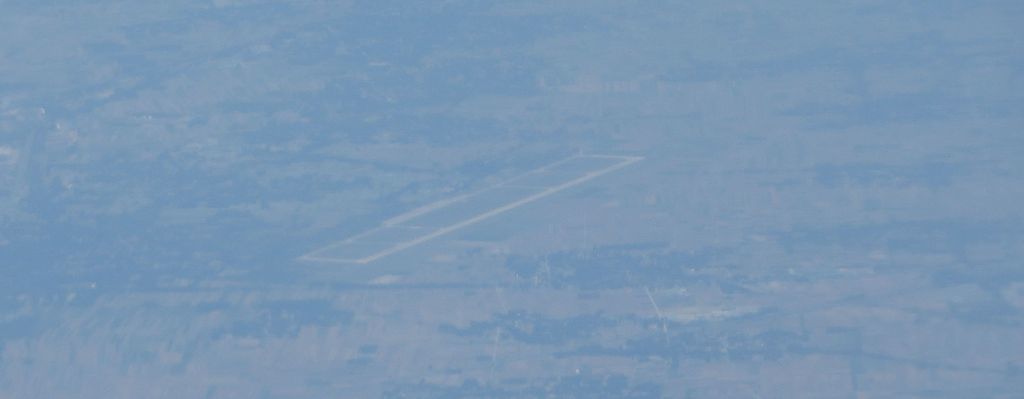
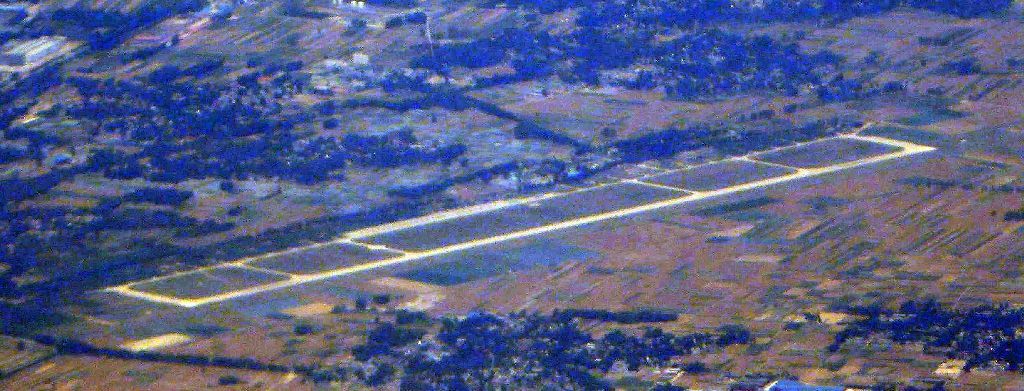
On the other hand, this looked somewhat like an airfield from a distance, but it appears to be nothing but fields.
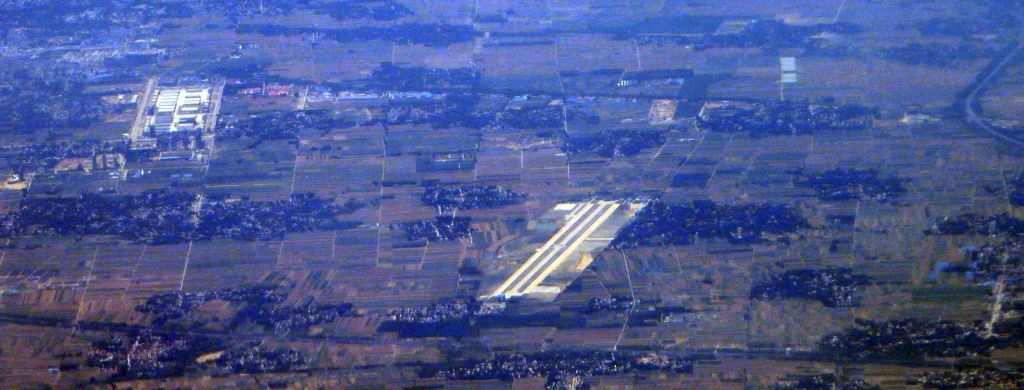
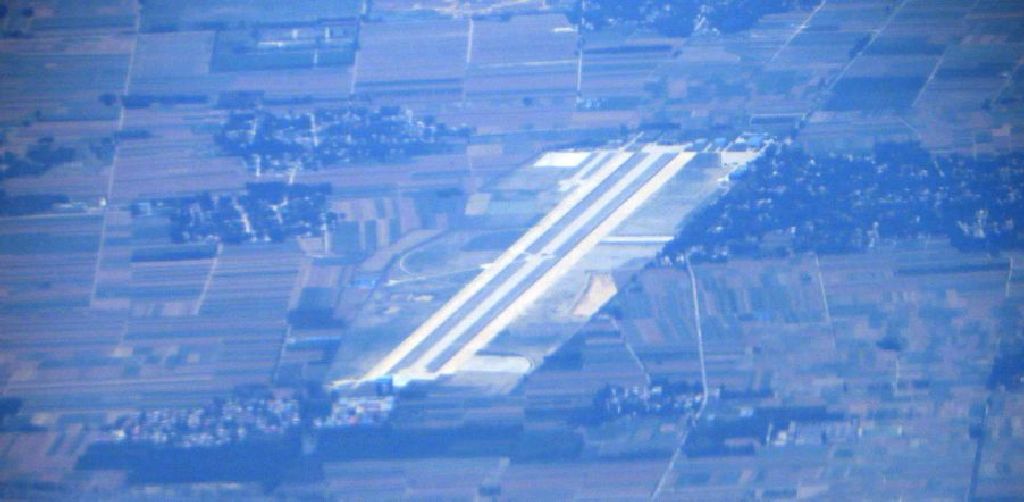
Again the Chinese countryside, again heavily populated when it is fertile. In the distance, towards the left, there is an airstrip located next to Gaobedian.
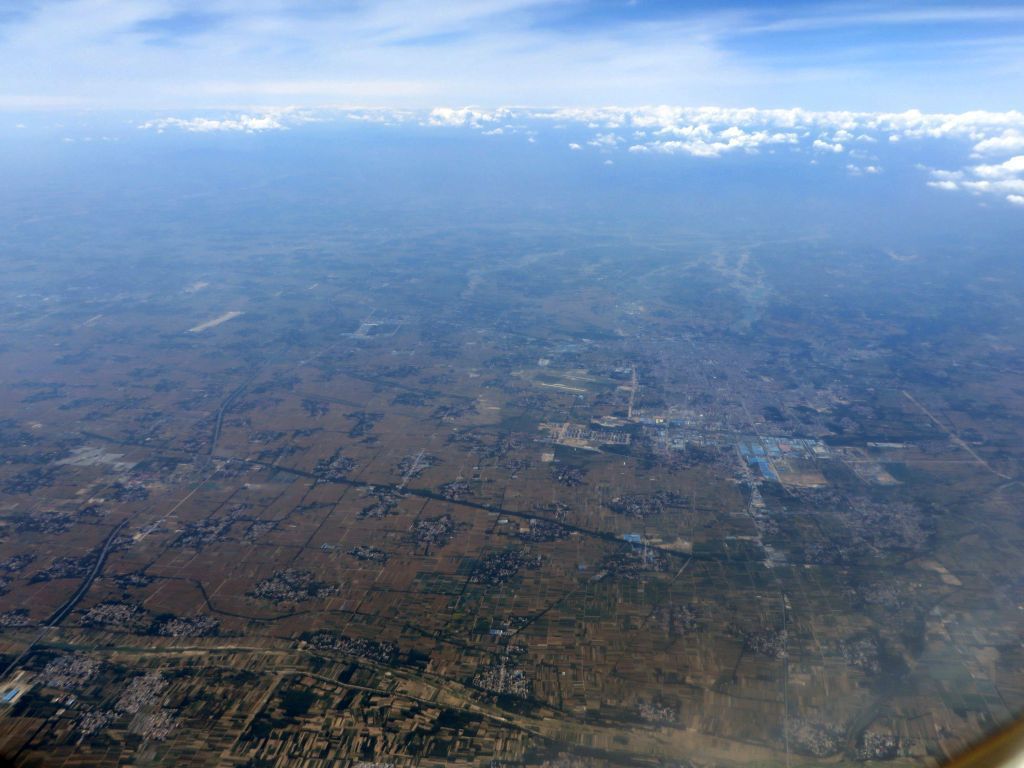
I spent hours on Google Earth looking in the wrong places, until I found this airfield with a rather unusual layout, in Zhuozhou 涿州, some 130 km south-south-west from PEK and 32 minutes before landing. That is how I managed to reconstitute the route I took on this part of the flight.

Two identical and rather short runways and taxiways, inside a perfectly circular perimeter. There is nearly no building; my best hypothesis is that this is a sky-diving field, but I found no confirmation after limited research on Chinese websites.

The plane follows a rather unexpected route, flying north beyond PEK to turn then south and line up with one of the 18x runways. The Hebei plain where Beijing is located is surrounded with small mountains, crisscrossed with winding roads,
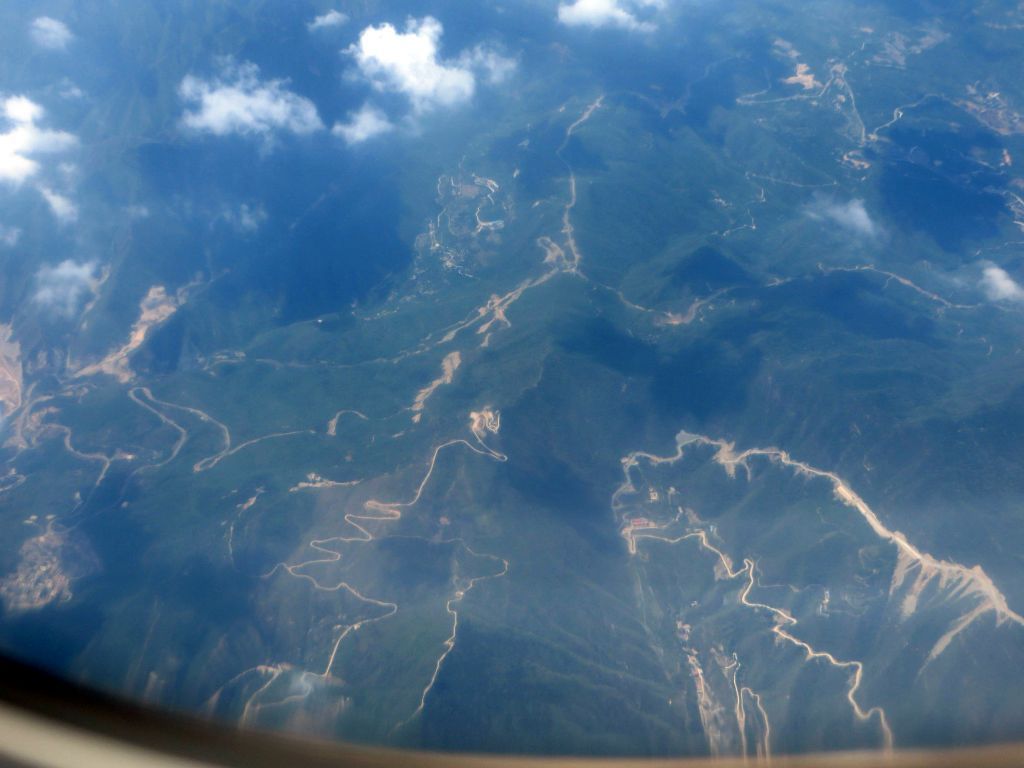
… and with rather deep valleys
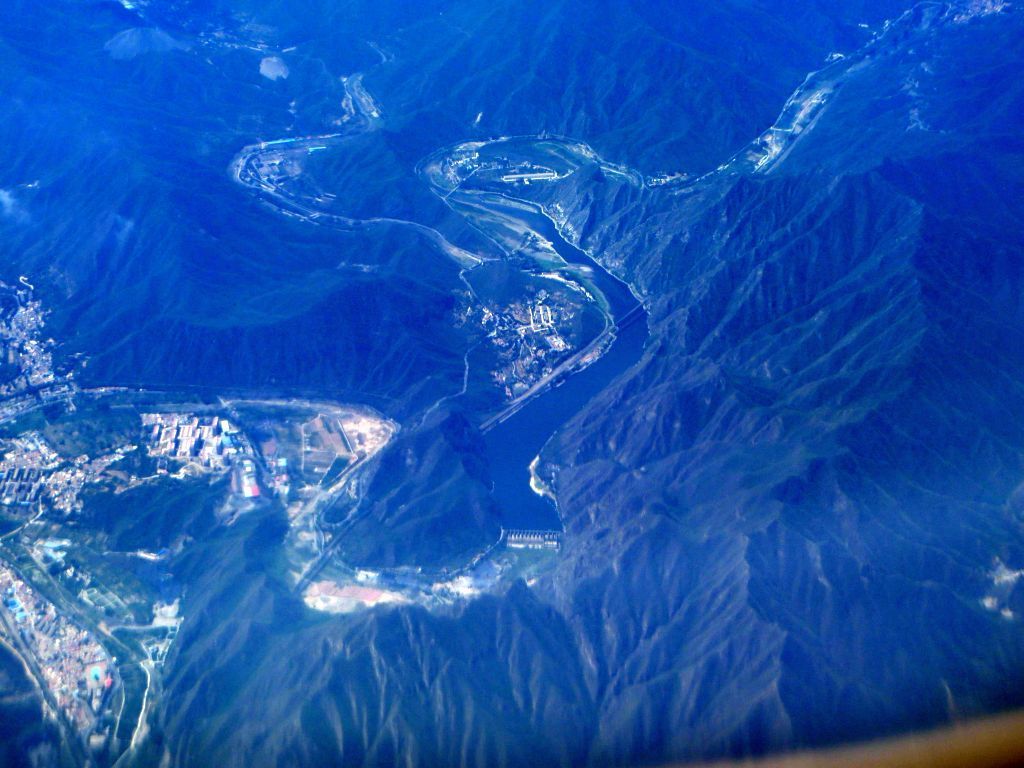
This unexpected route provides me the opportunity of a spectacular view. This raw picture is not very legible,
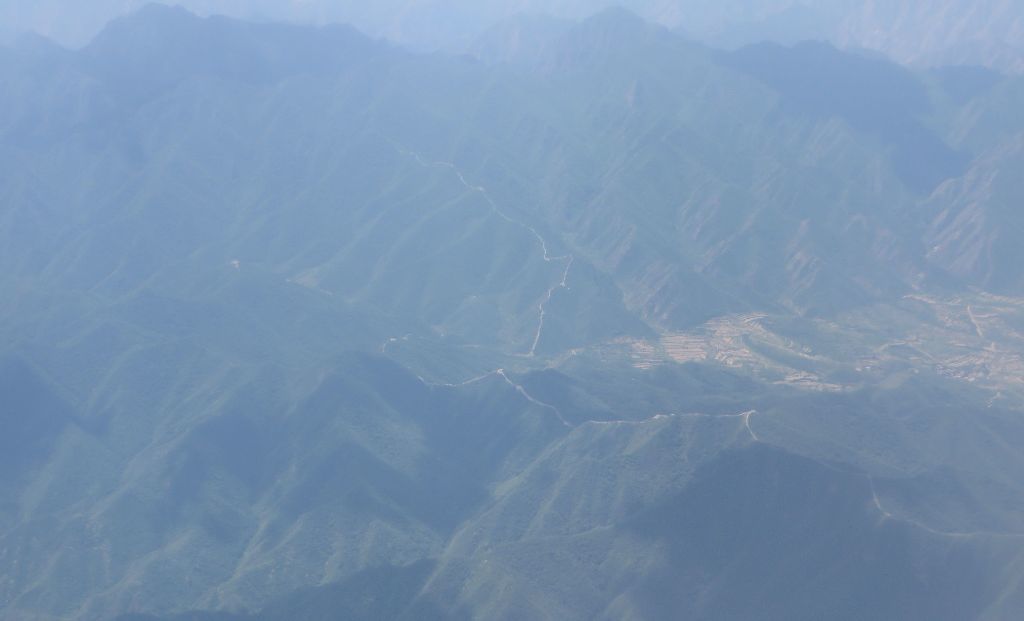
… but look once it has been processed: the zigzagging line on the crests is no other than the Ming Dynasty Great Wall. This section is probably located just north of Lake Zhenzhu’s leisure resort.
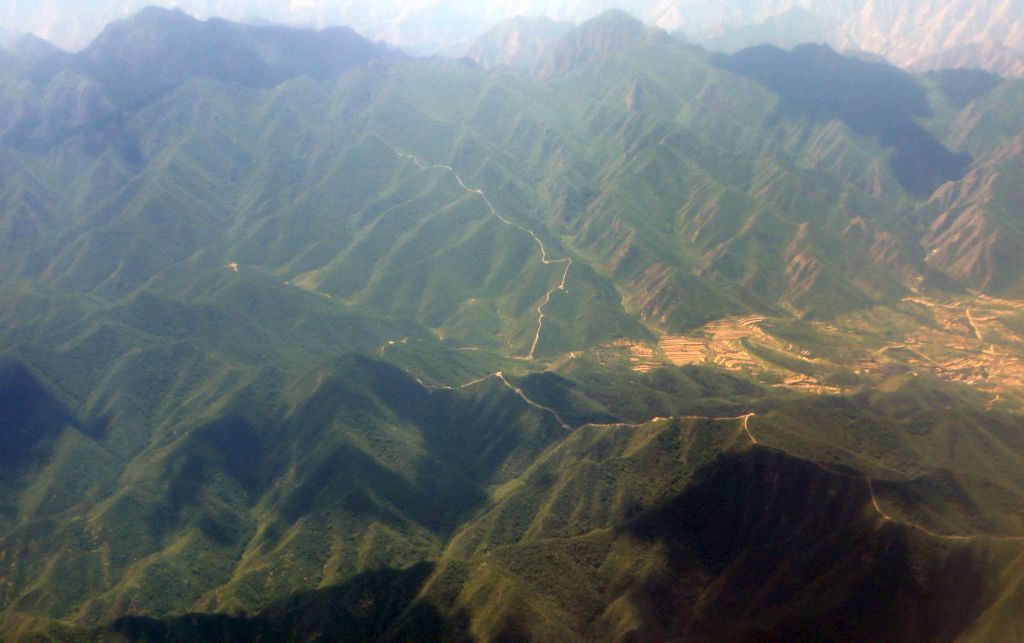
But this is not over, because beyond Guanting Reservoir 官厅水库
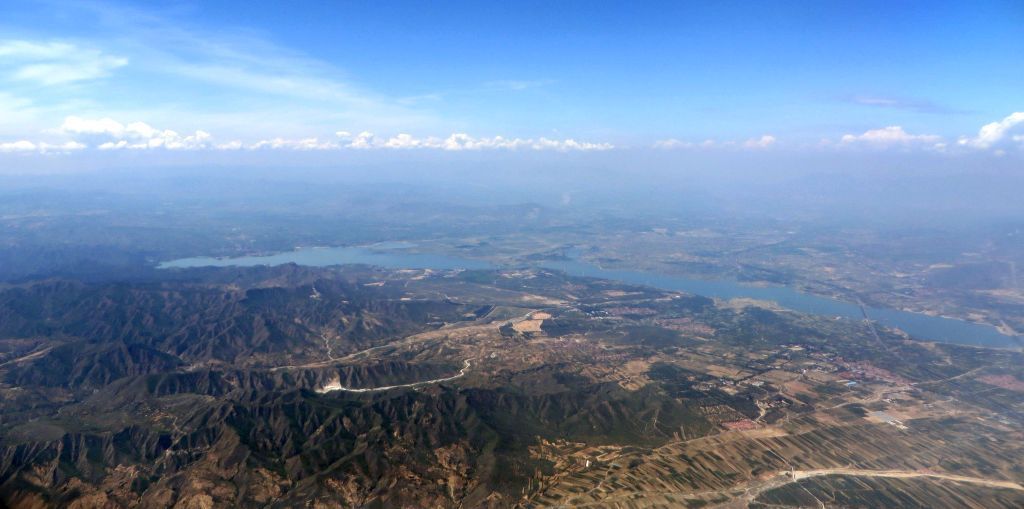
… and the mixed civilian / military Yongning 永宁 airfield and slightly upstream from this reservoir

… we see again the mountains of the northern edge of Hebei Province
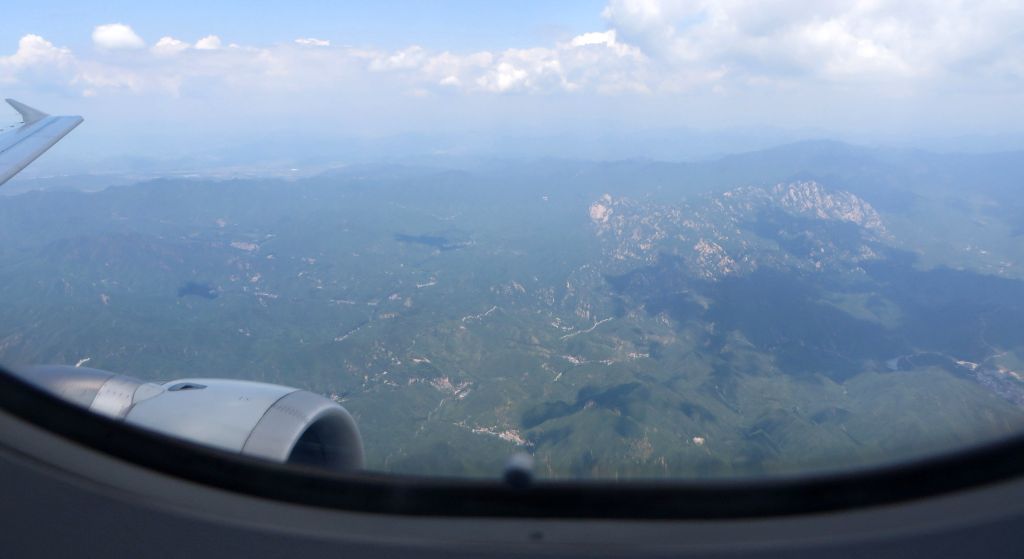
… and again the Great Wall, in a rough landscape, here in natural colors
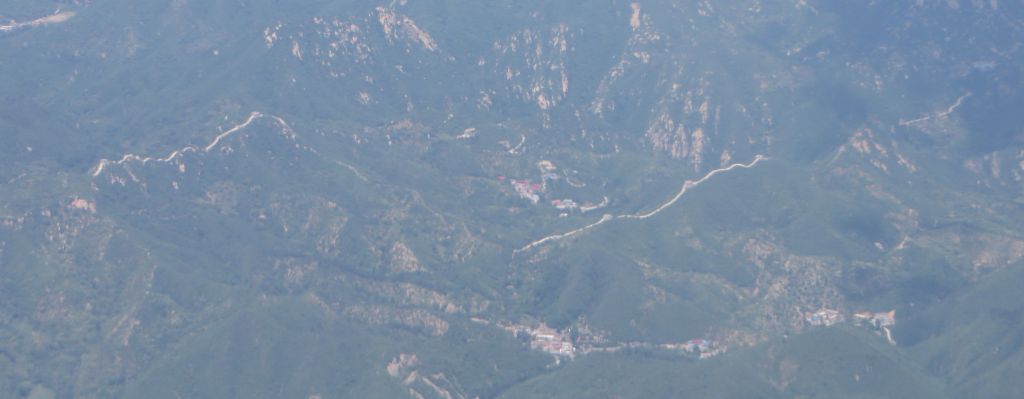
… and after color enhancing to make it more visible
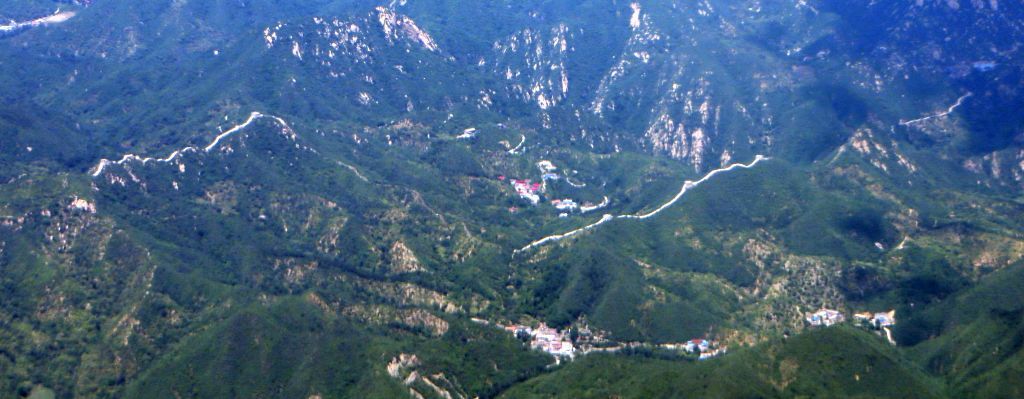
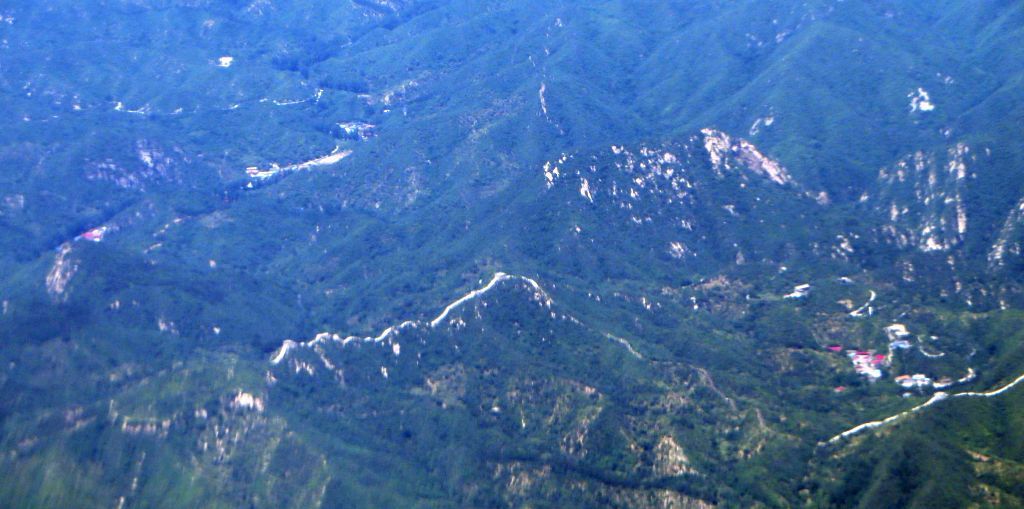
The most extraordinary view to my eyes – maybe not to those of my readers – is this one:
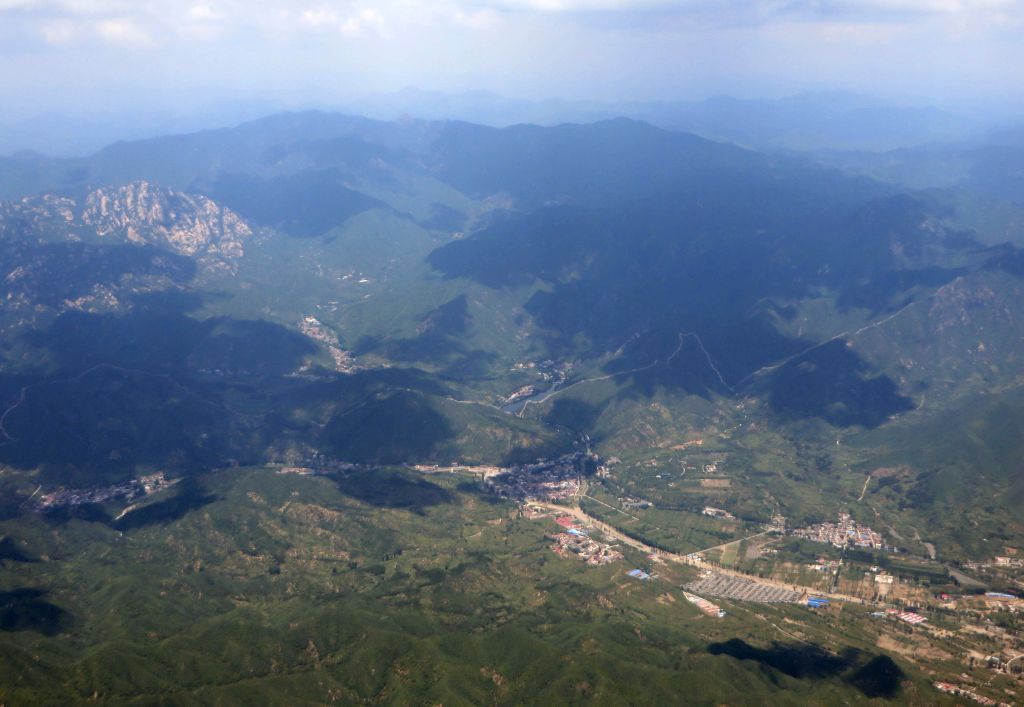
I thought I recognized the Great Wall site of Simatai, which has the peculiarity of the Wall crossing a valley where there is an artificial lake behind a dam built later. I first saw the Great Wall when hiking on it from Jinshanling to Simatai, which was the fulfillment of a dream which I believed to be impossible when I was a kid, because China was so remote and inaccessible at the time.
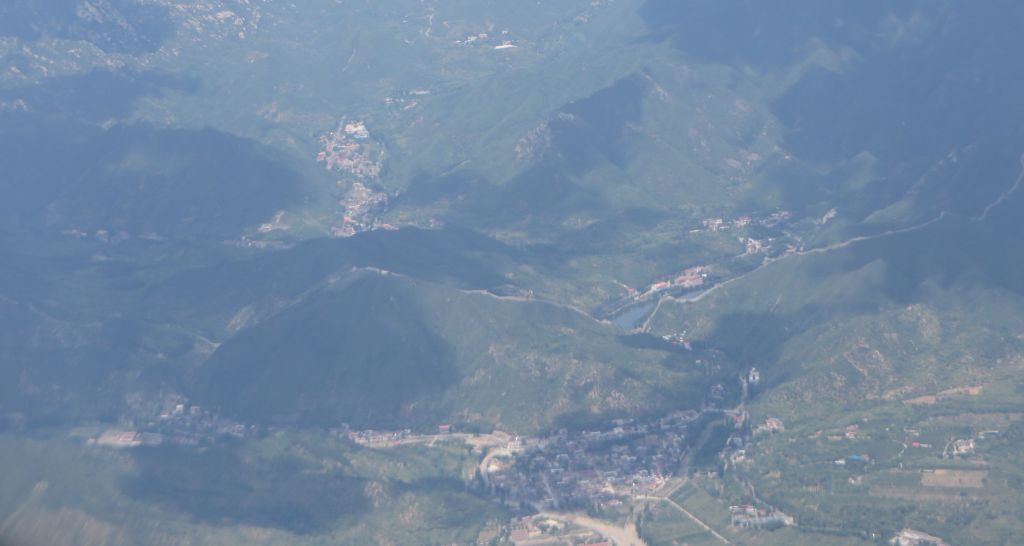
Having the impression of seeing again Simatai from above made me feel again the emotion of being in a place which I had thought to be forever out of reach.
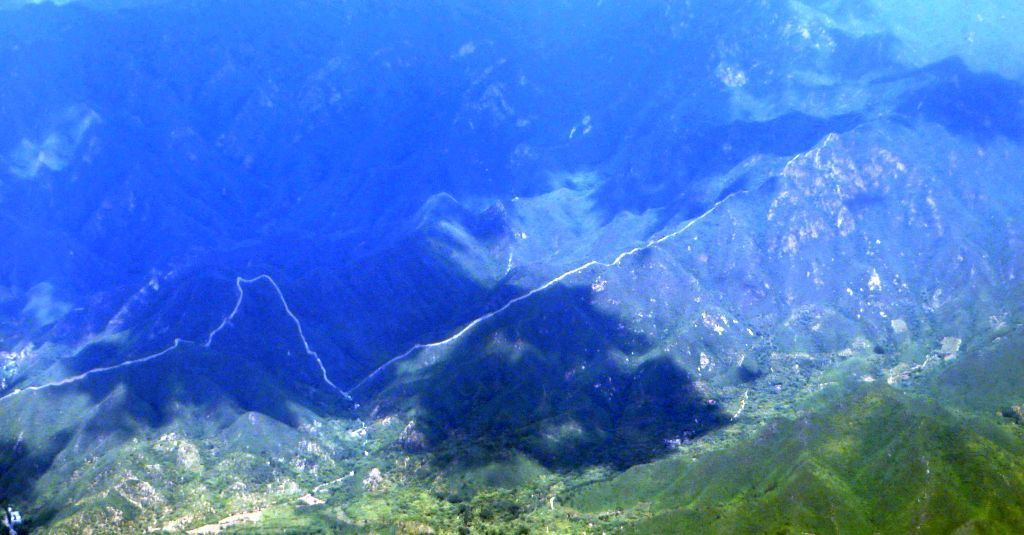
I was actually wrong ; after a long and tedious research to identify the above mentioned air strips, I realized this was really the Great Wall site of Huanghua 黄花 where I have never had a chance to go. This name means « Yellow Flowers » because these mountains are covered with yellow flowers in the spring, according to a Chinese colleague from a time I was stationed in Beijing.
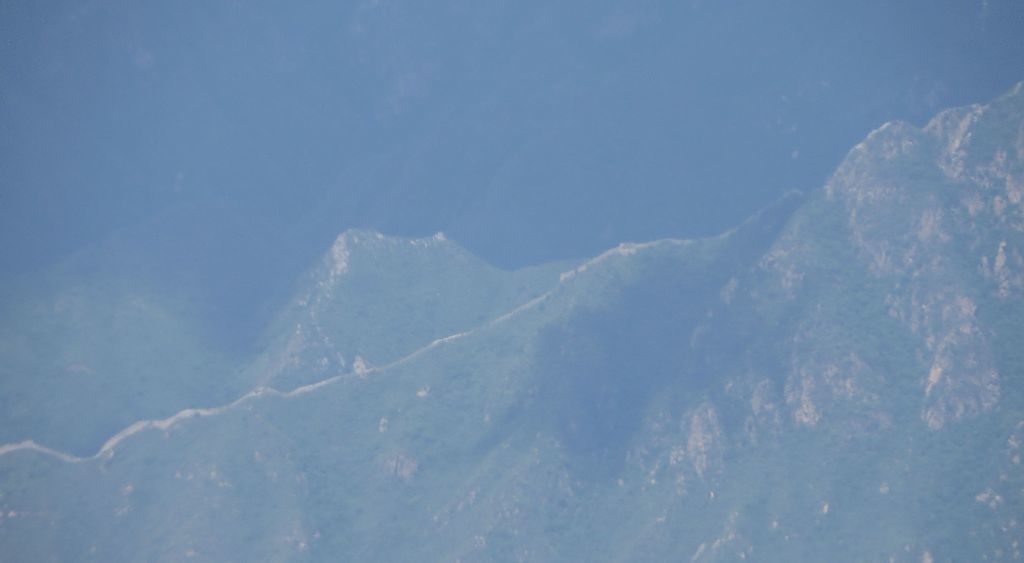
Maybe one day, I’ll go to Huanghua. Now that I have seen it from above, this section looks worth it too…
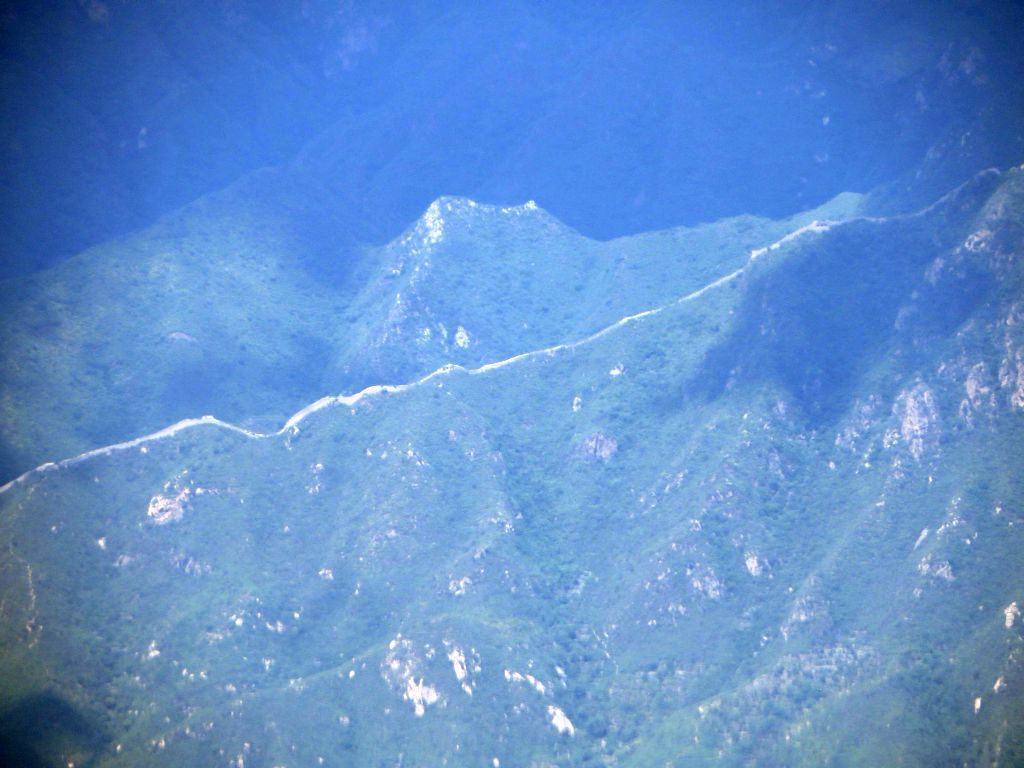
This childhood memory vanishes with the landscape, as the plane enters the Hebei plain, heading towards the airport.
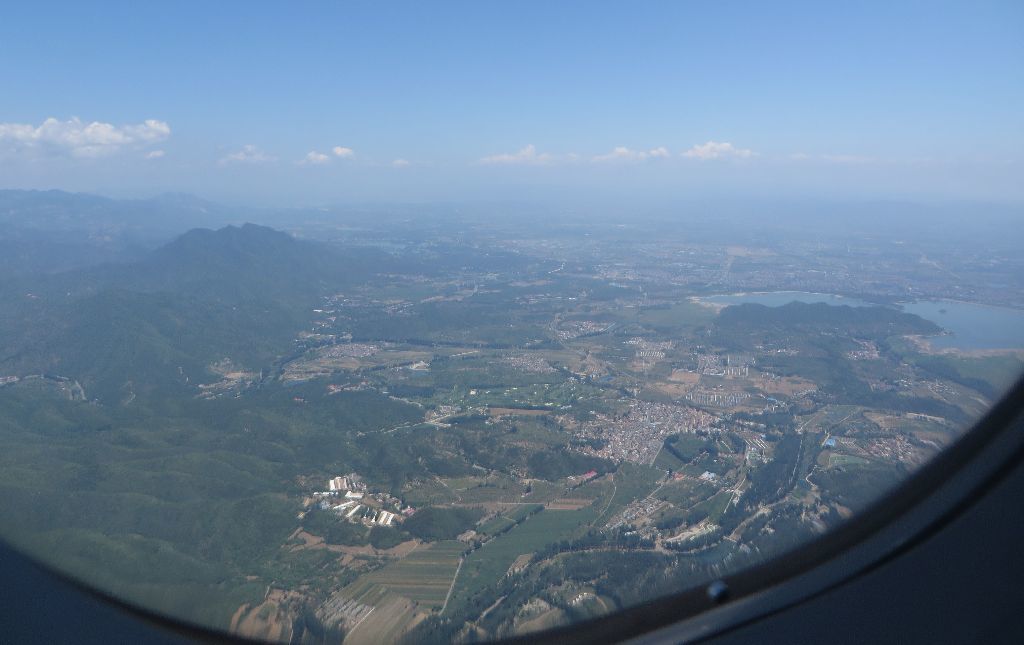
Huairou’s reservoir
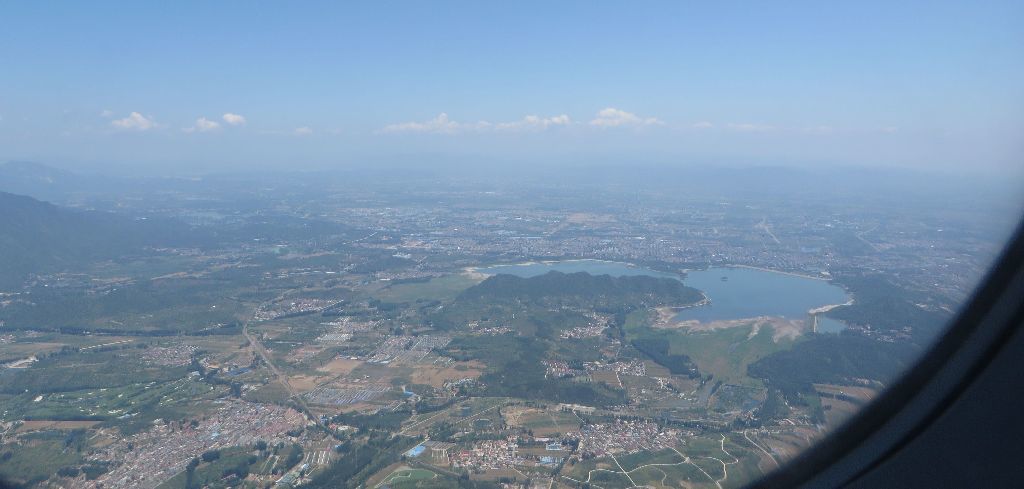
Huairou is the city where you should go by bus from Beijing to reach some of the best (and least visited) Great Wall sites.
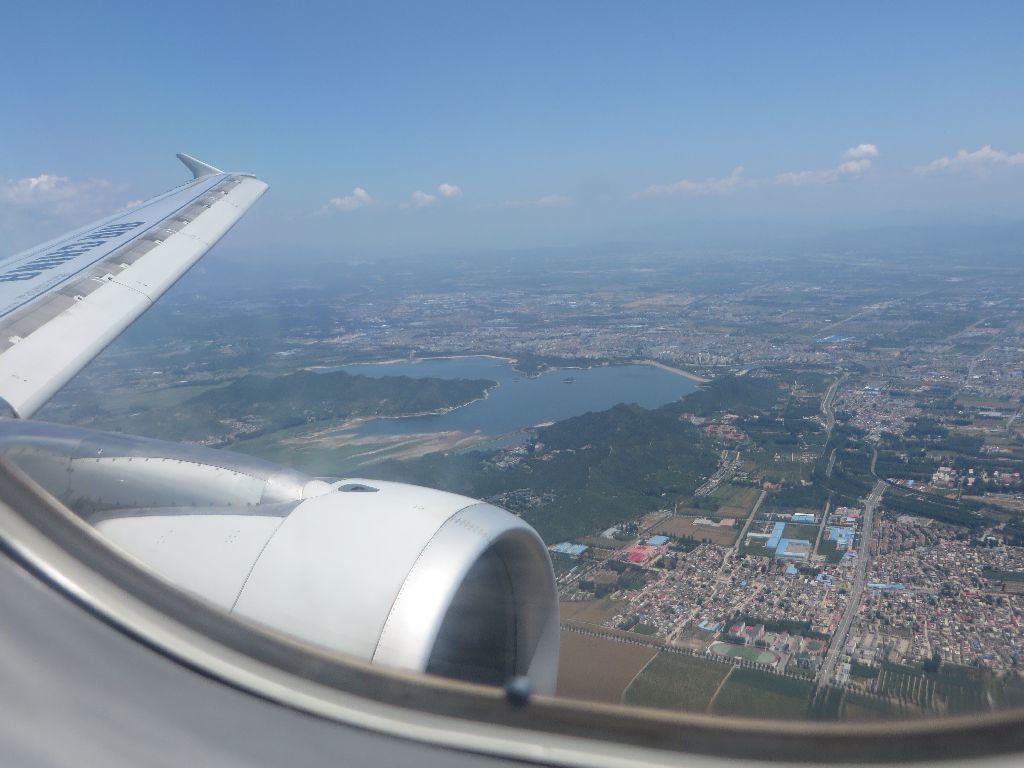
Final descent
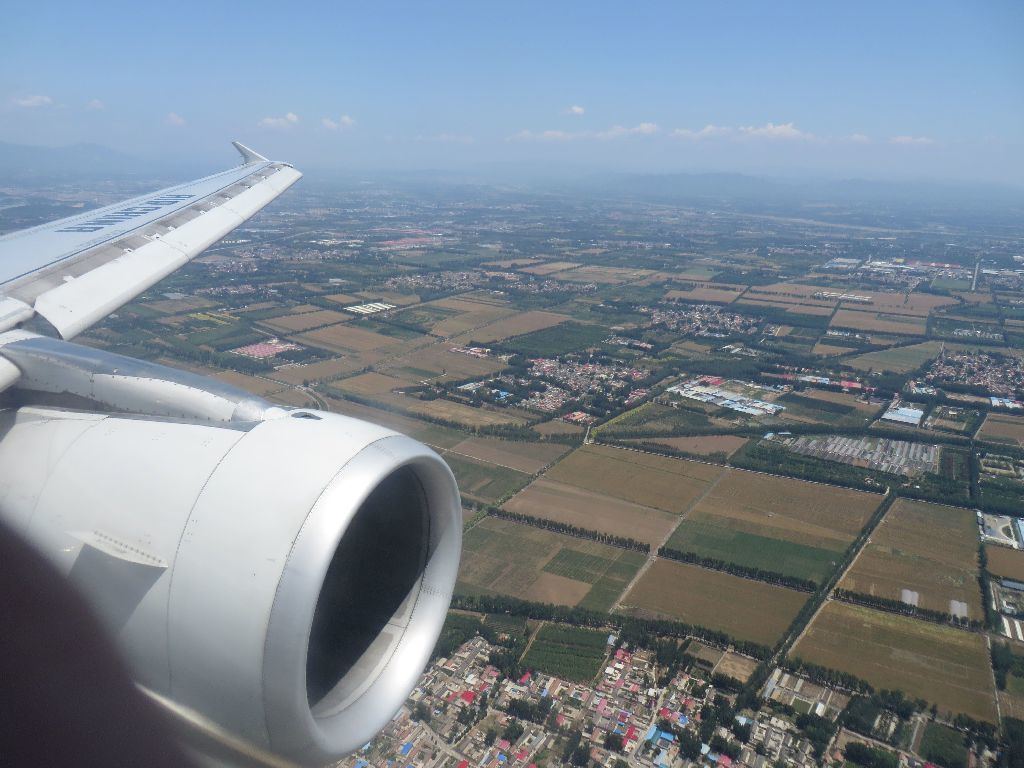
The expressway and the Airport Express line which serves the Dongzhimen – Sanyuanqiao – T3 – T2 route.

We are close to landing, with an aircraft waiting next to the runway threshold
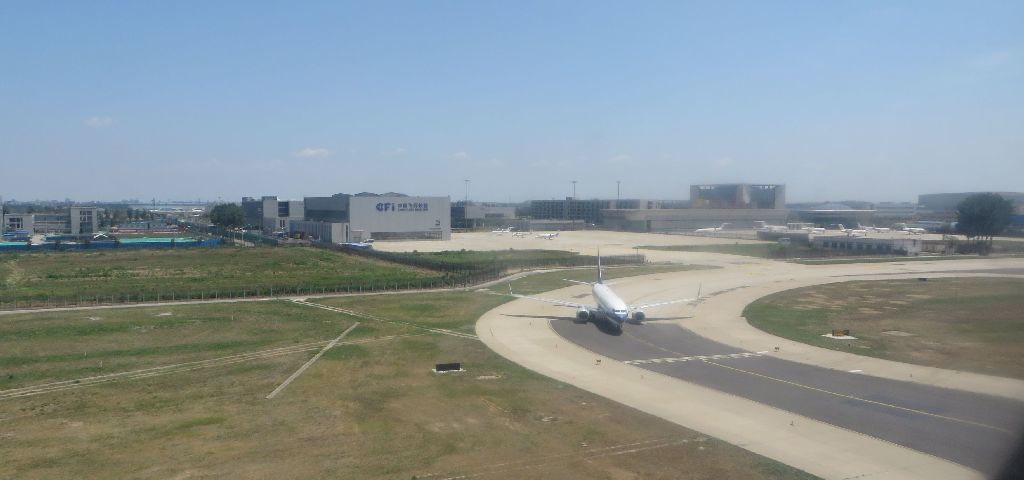
Not much wind, according to this windsock. The flight time is 2h05’ according to the schedule, but only lasted 1h32’ from takeoff to touch down.


Cargo aircraft: SF Airlines,
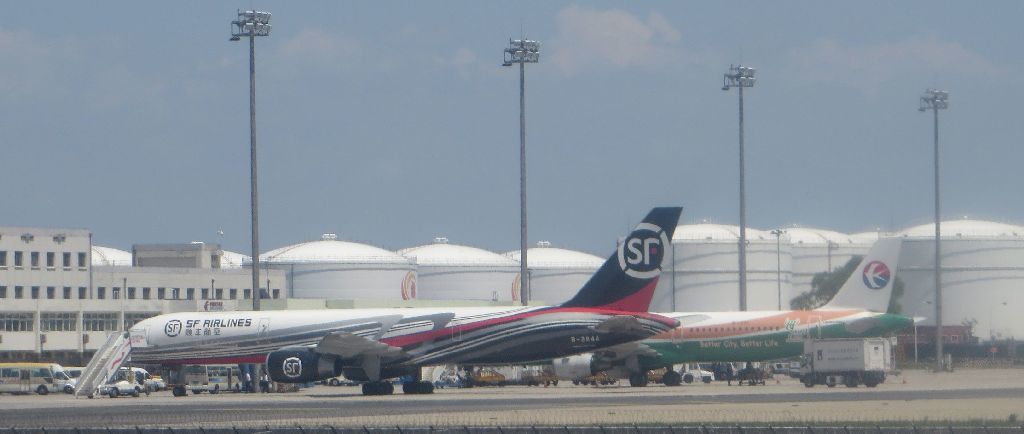
Grandstar Cargo,
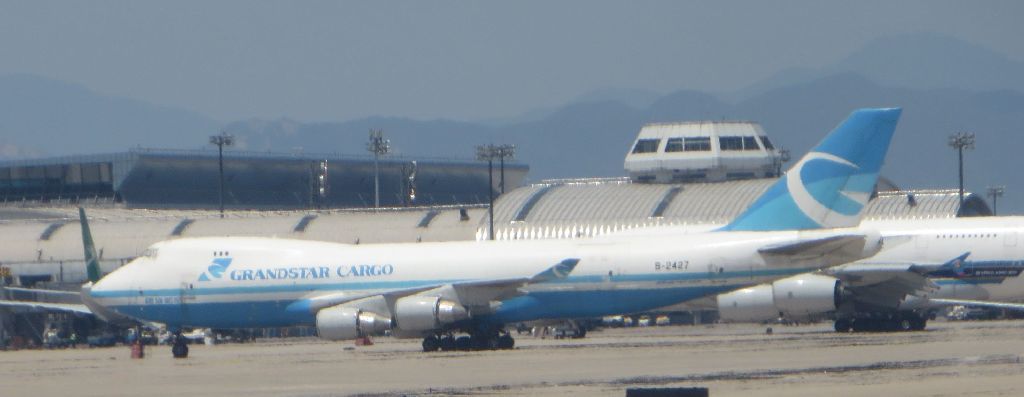
… and EMS (the Chinese Post)

A Hainan Airlines 787 in front of an A330-300
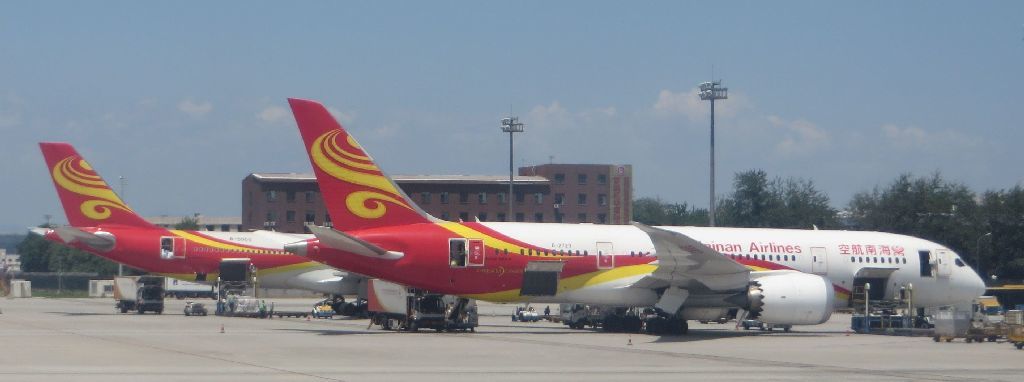
Hainan Airlines 333

MU A321, in the old livery
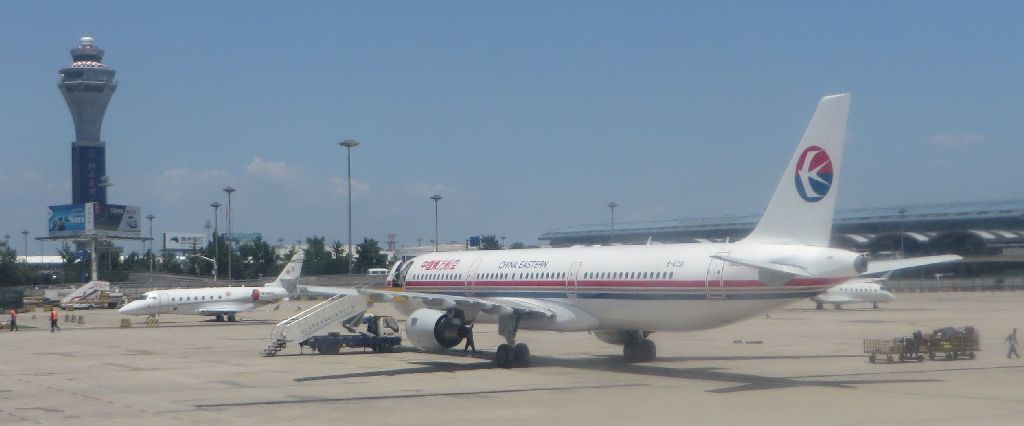
Two Falcon 7X
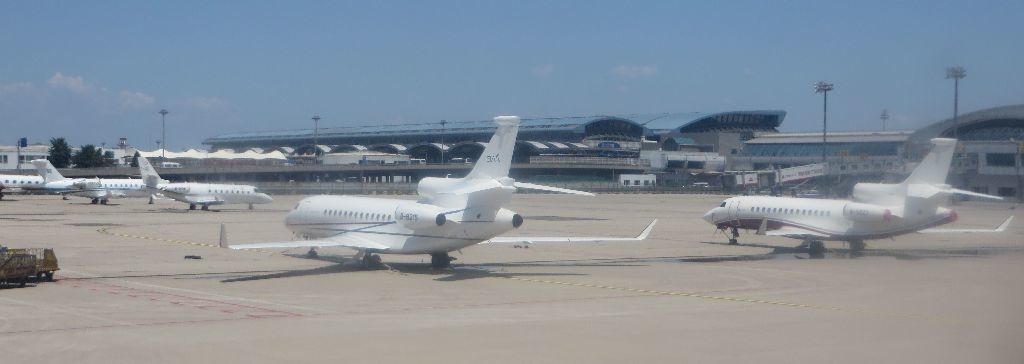
A Gulfstream G200 (B-8139) in the foreground

A rarity: a Turkmenistan Airlines aircraft. The only few flight reports posted on this airline were in French. Any English speaking volunteers?
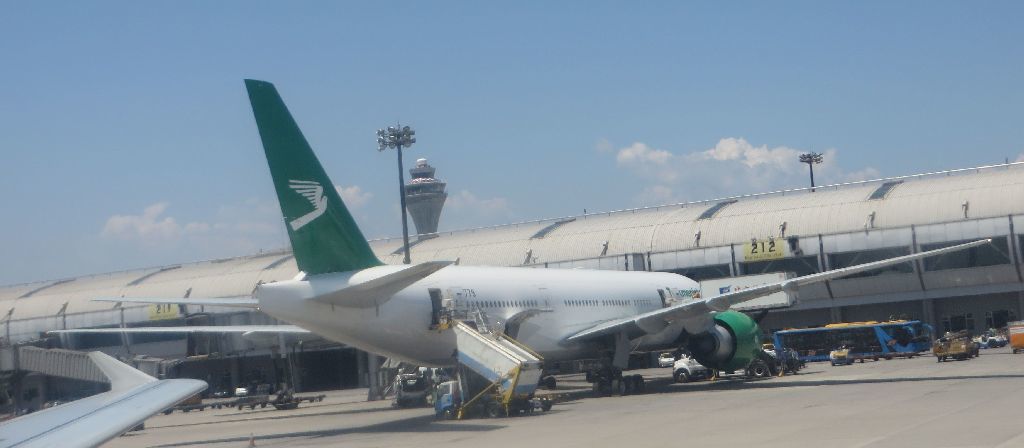
A Capital Airlines A320 with sharklets. Five years ago, when I flew with them, this airline’s largest aircraft were CRJ-200. Times, they are a-changin’.
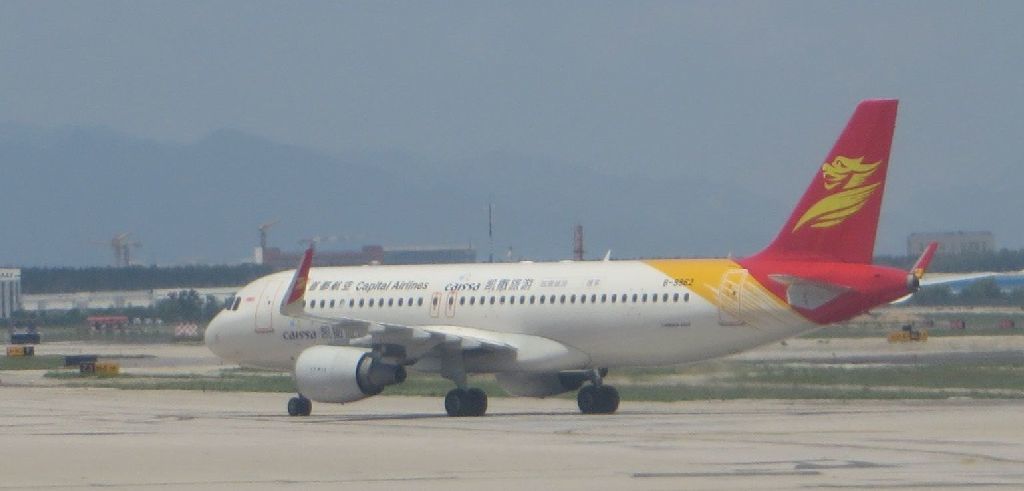
Terminal 3C, for domestic flights, and also the only passenger access to/from landside, by road or rail.

Terminal 3D is domestic too, but it is separated from the two main terminal buildings by taxiways

A Tibet Airlines A319 leaves her parking space,
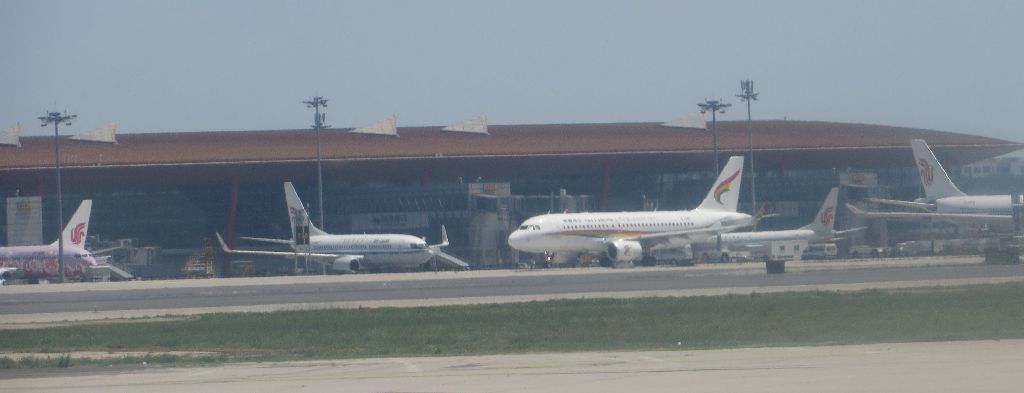
… taxiing to the runway …

… and takes off soon afterwards. She is not flying to Lhasa directly, but will stop over in CTU or CKG, the two gateways to Tibet.

A general view of Terminal 3, with the domestic and international terminals


I had lots of trouble getting an acceptable (?) picture of this one in the distance, but did not identify her.
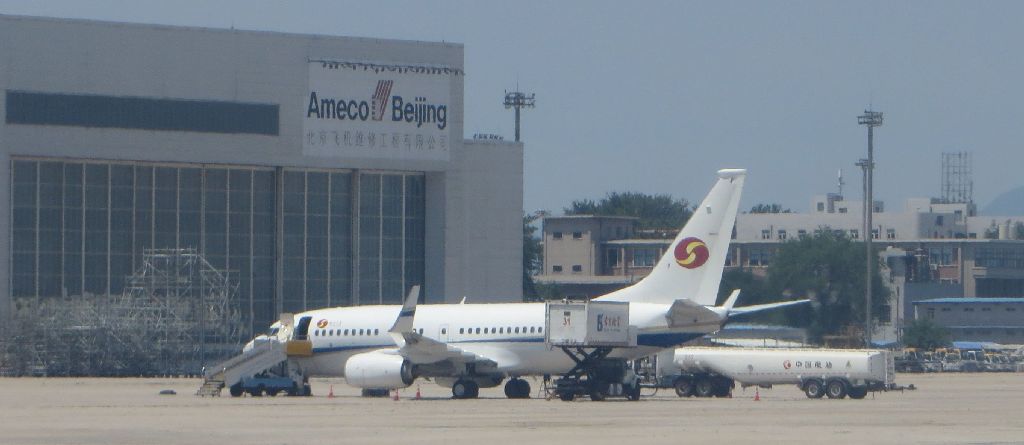
A CZ A321 takes off
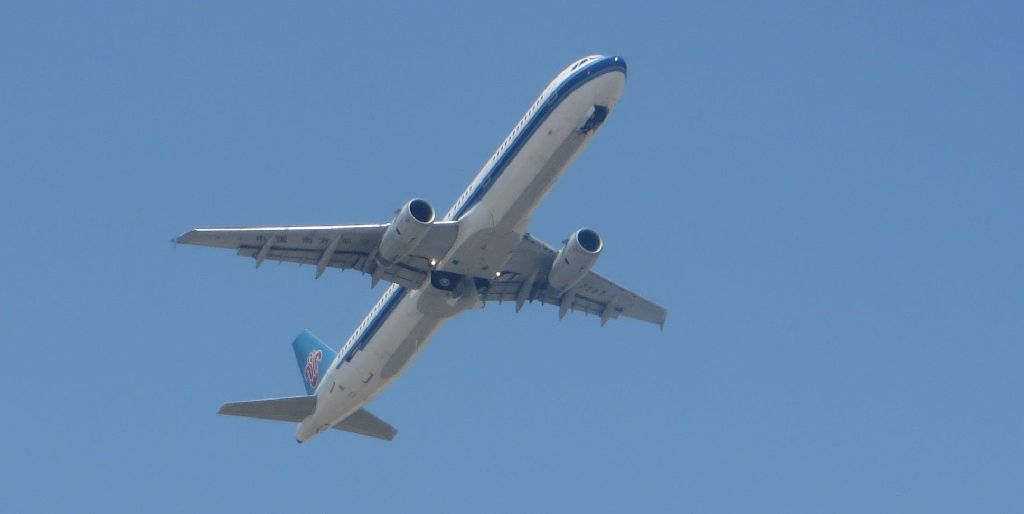
The jetbridge approaches
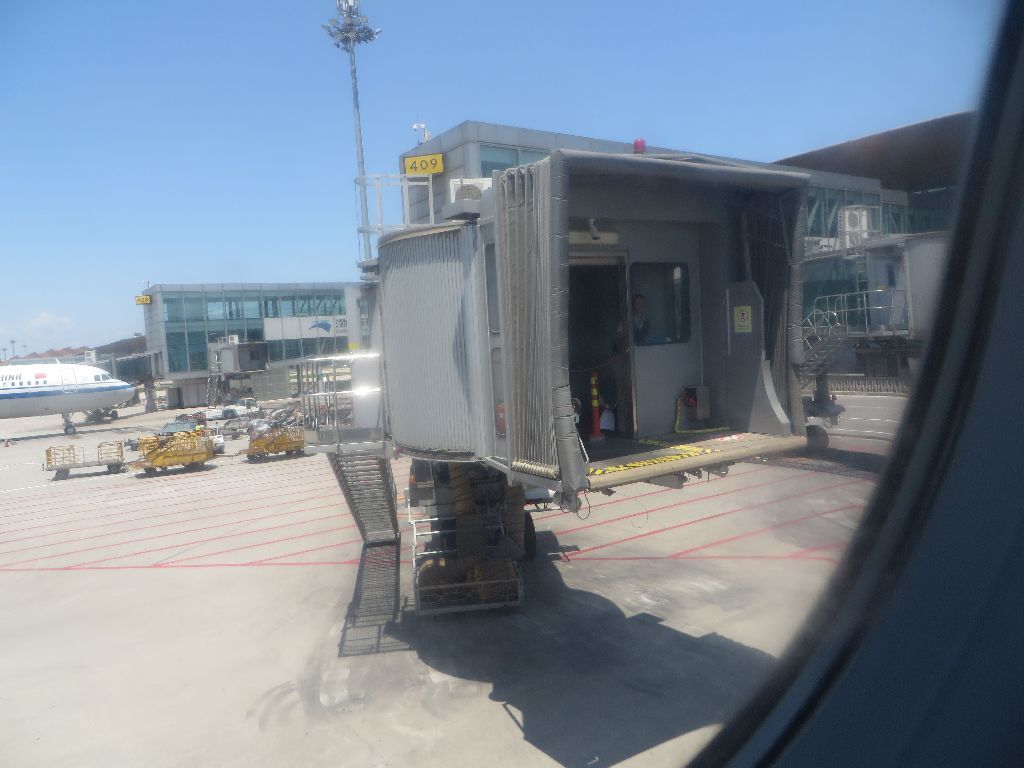
An Air China 737 in flowered livery 737
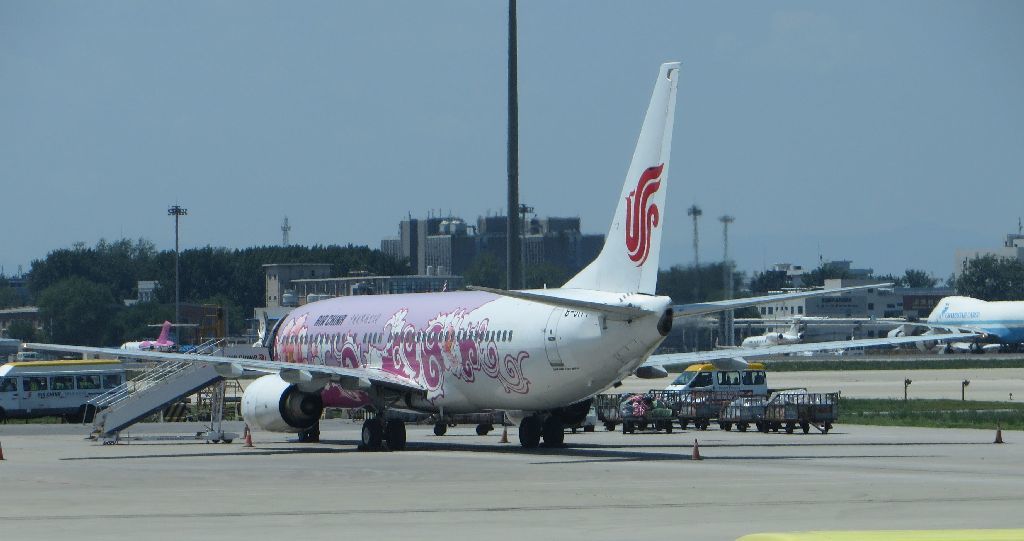
Air China A321
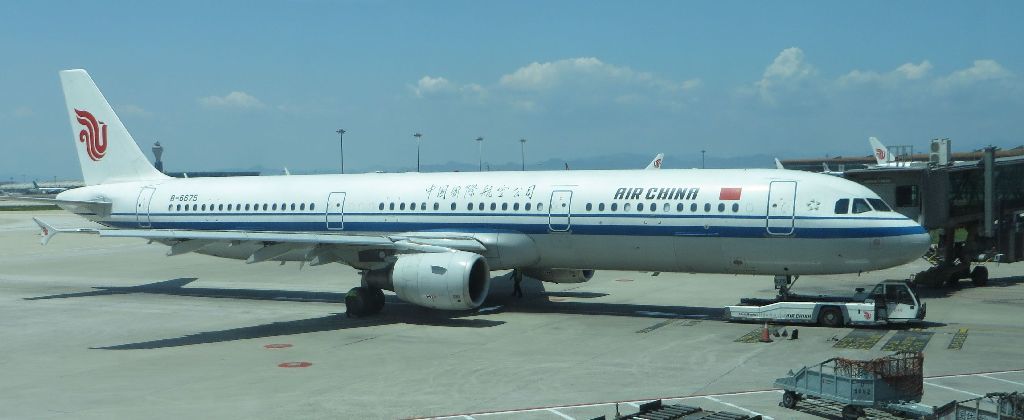
A Sichuan Airlines A320 takes off
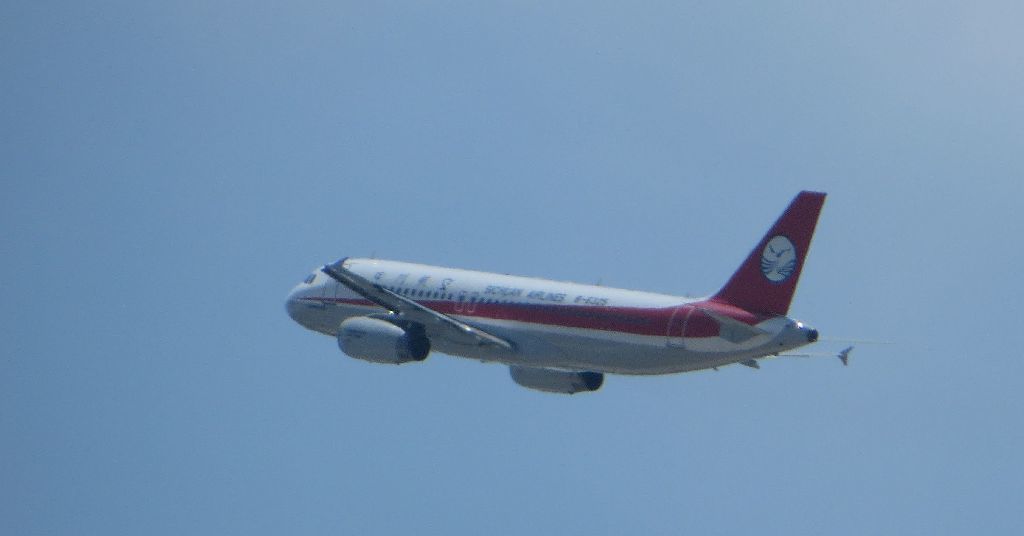
Going up to the Arrivals level
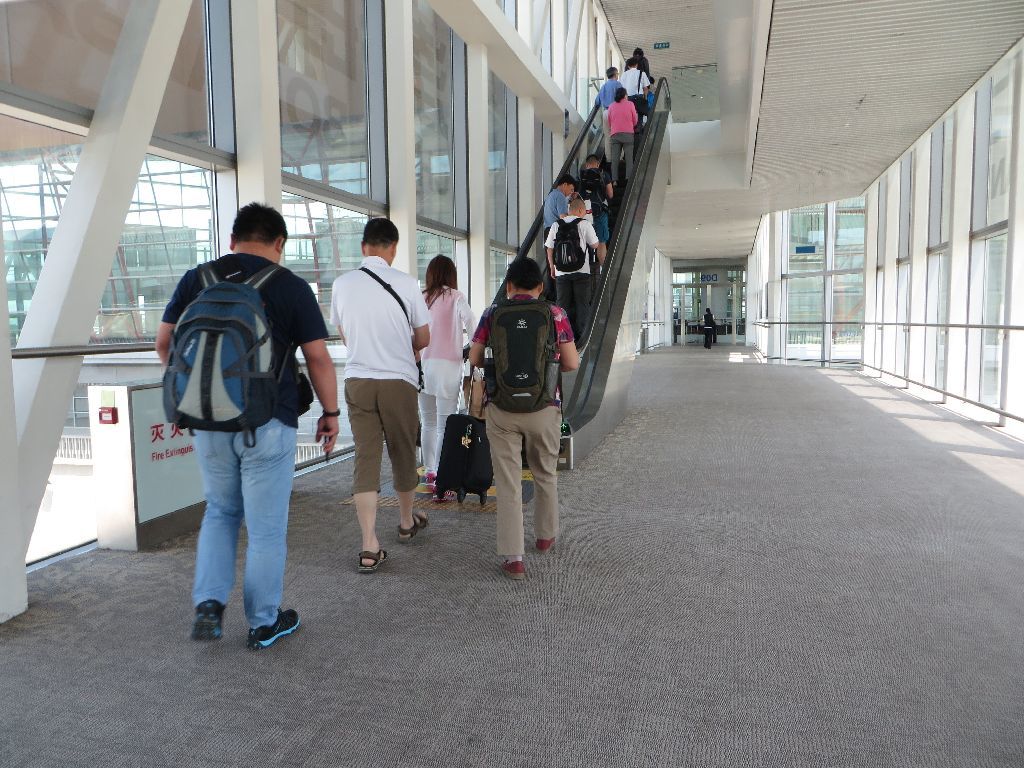
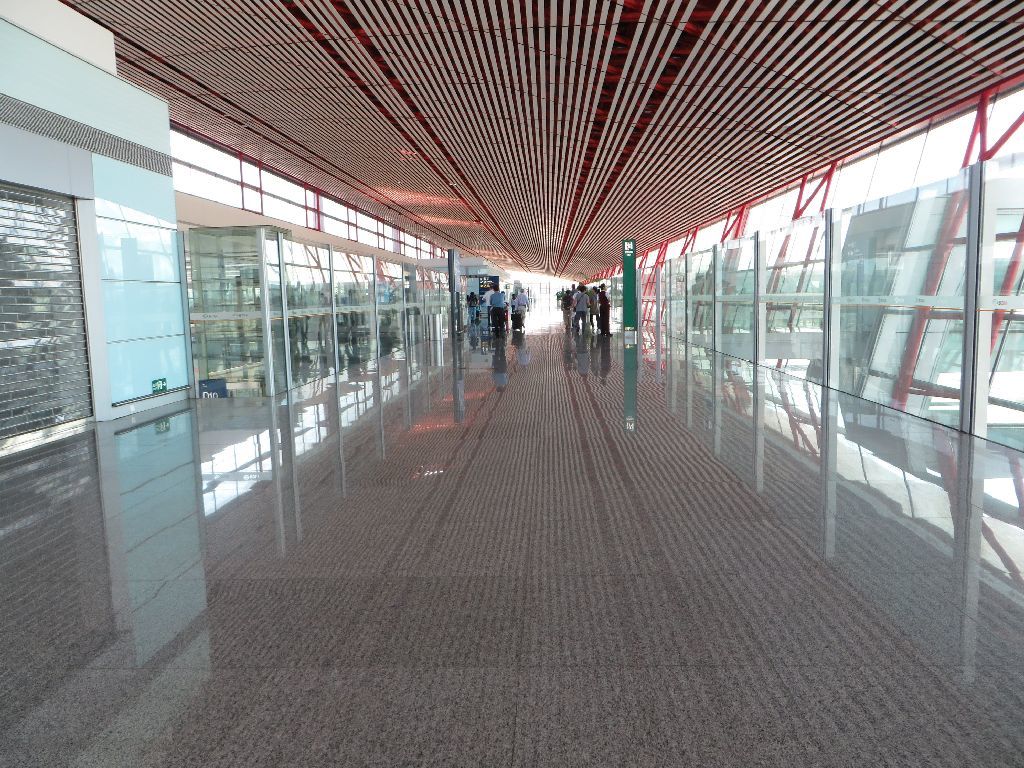
A last look at the aircraft which brought me here
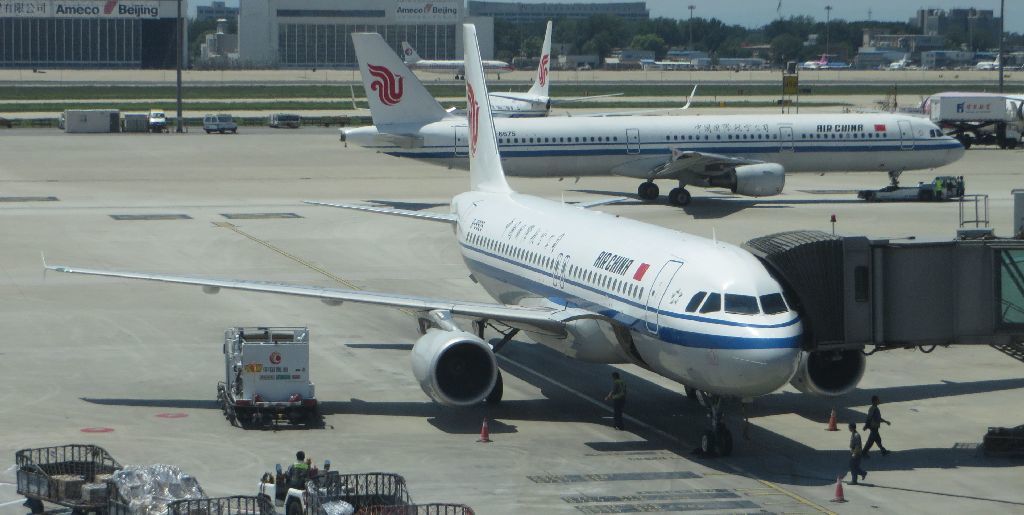
A « blue flower livery » CA A330 CA
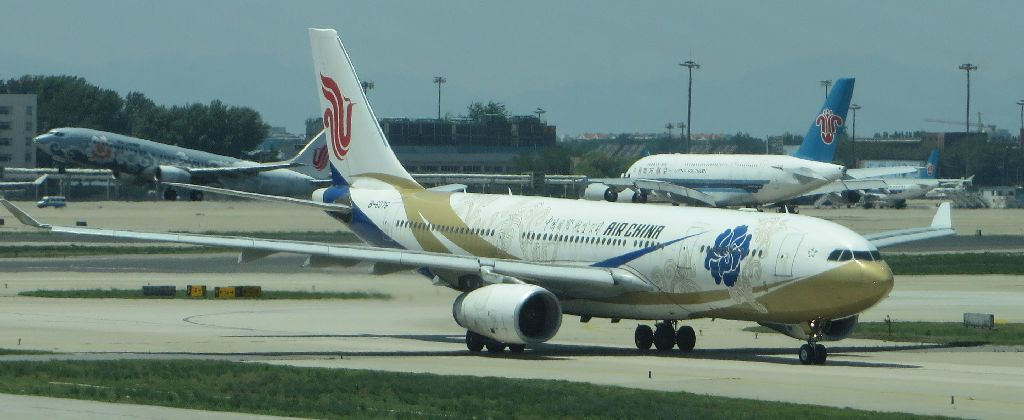

A CZ A380 in the distance
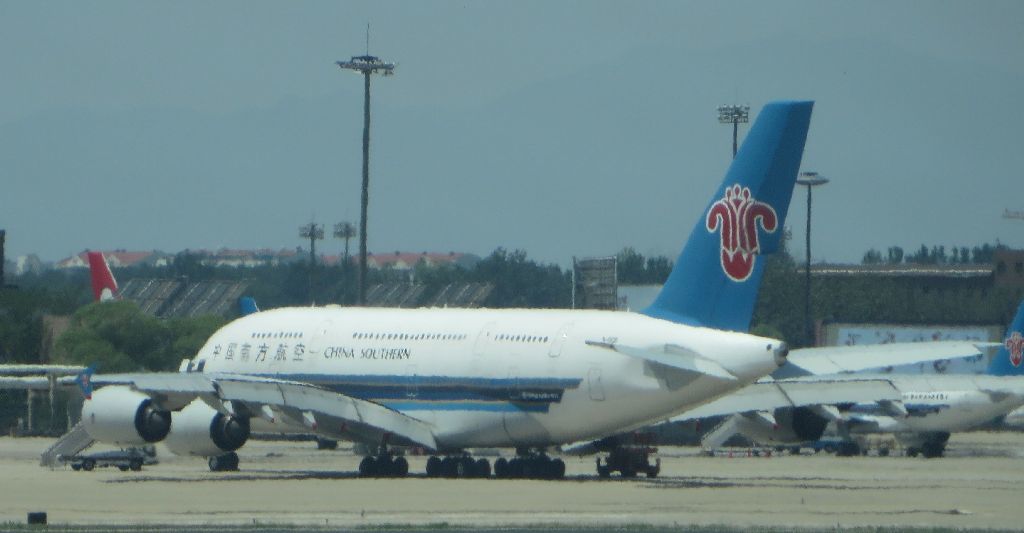
Water fountains are everywhere in Chinese airports
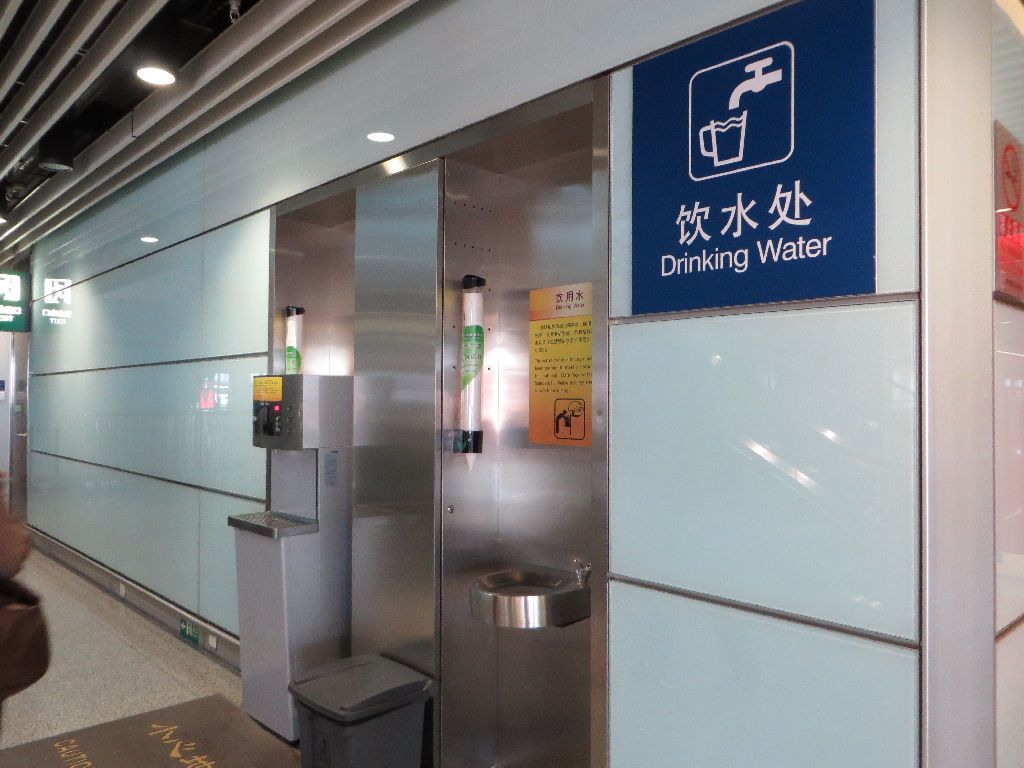
What about the toilets? Yes, they are clean,
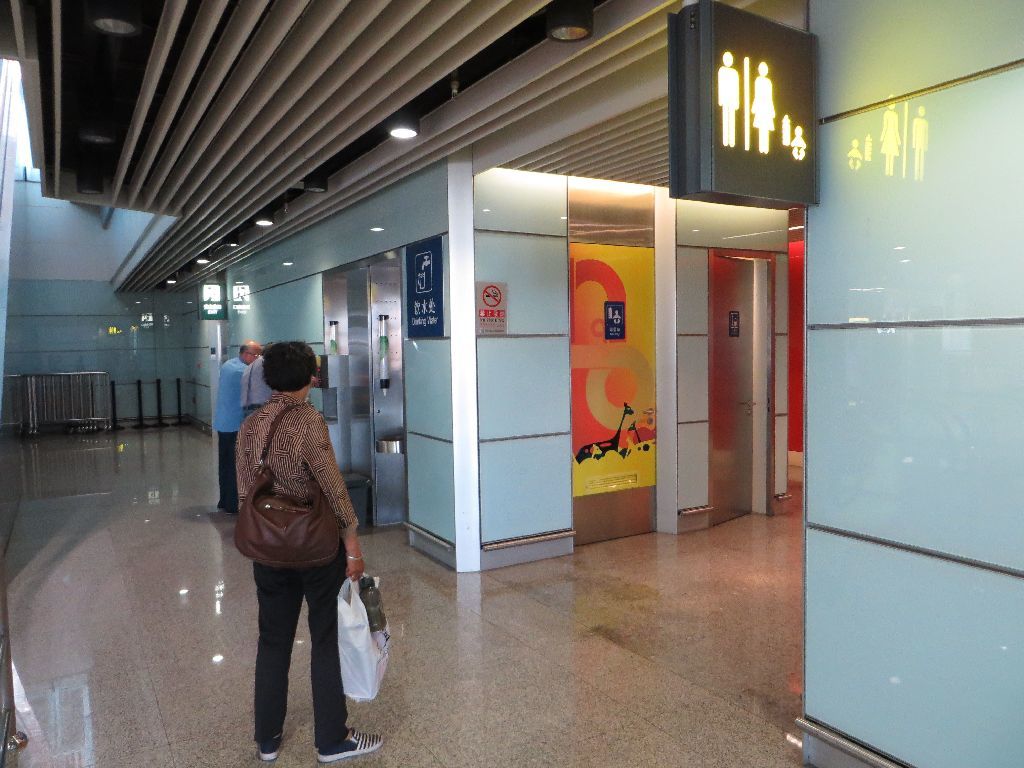
… with a flower decoration too.
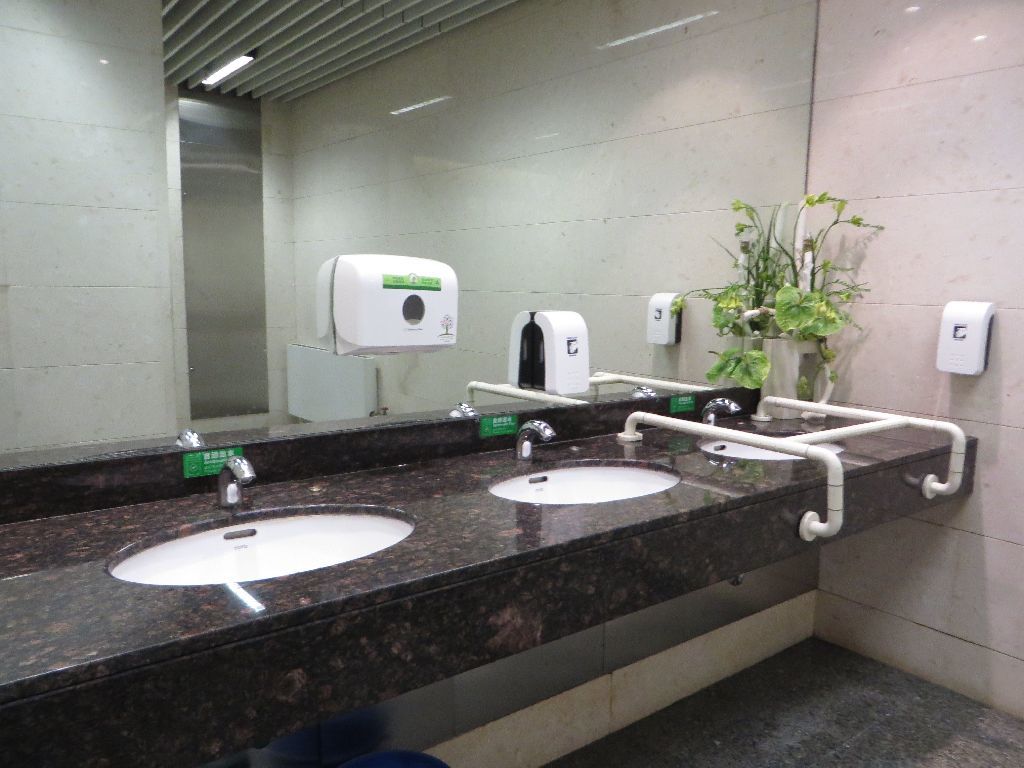
They are targeting a five star award, but that seems ambitious to me.
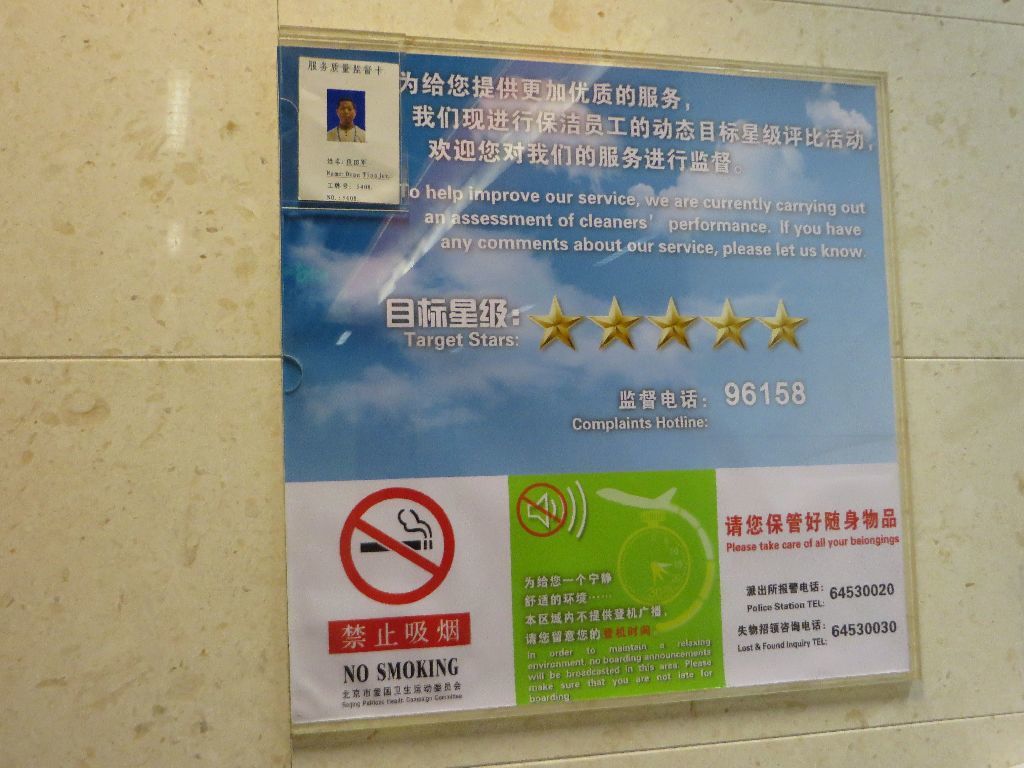
The flows towards the arrivals and the transfers separate here

… going through empty boarding rooms
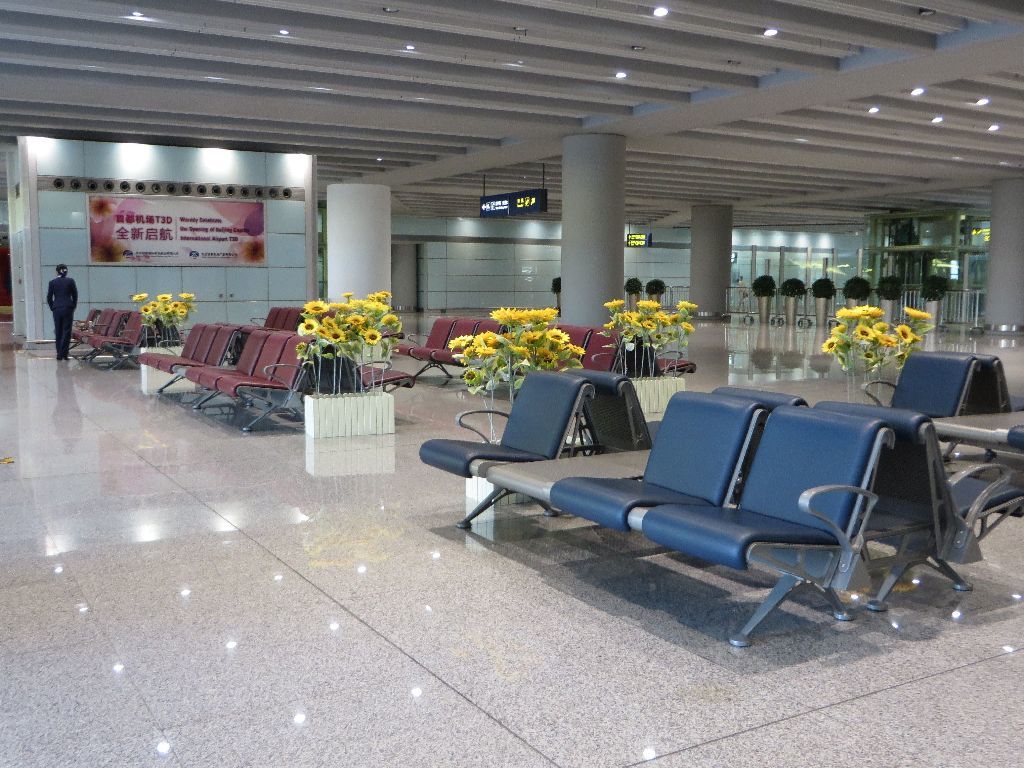
But whether PEK is your final destination or not, when your plane arrived at Terminal 3D, you cannot avoid a bus transfer which is the only way out of it.
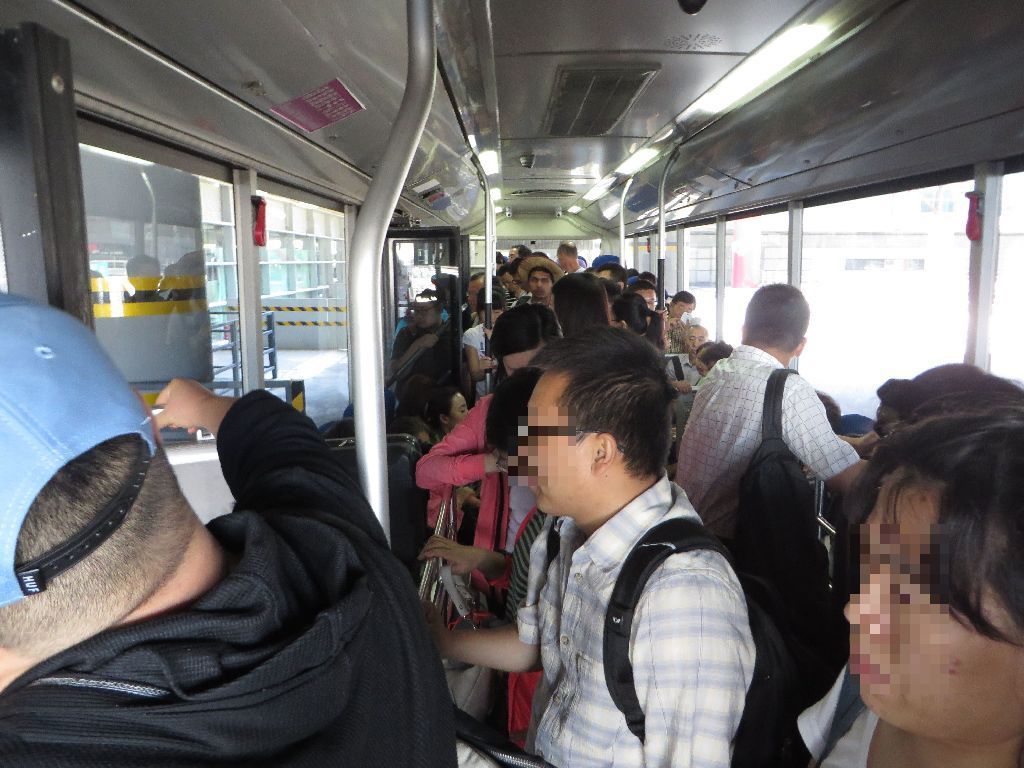
Plane spotting opportunities are few on the way: a CA A321 in standard livery
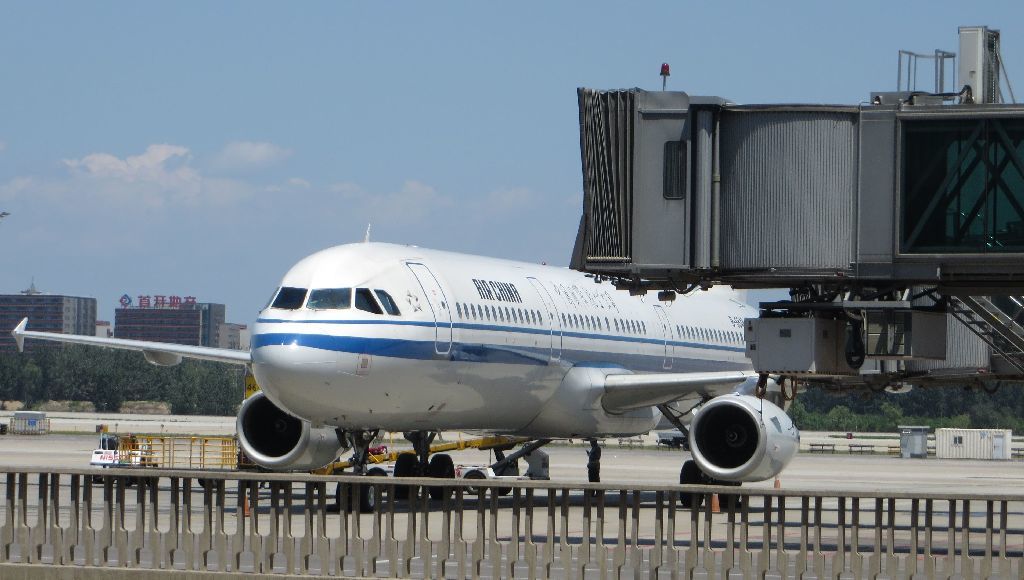
.. and another one in ocean livery. There is an ANA aircraft tail behind.

Not much more to be seen during the short bus transfer
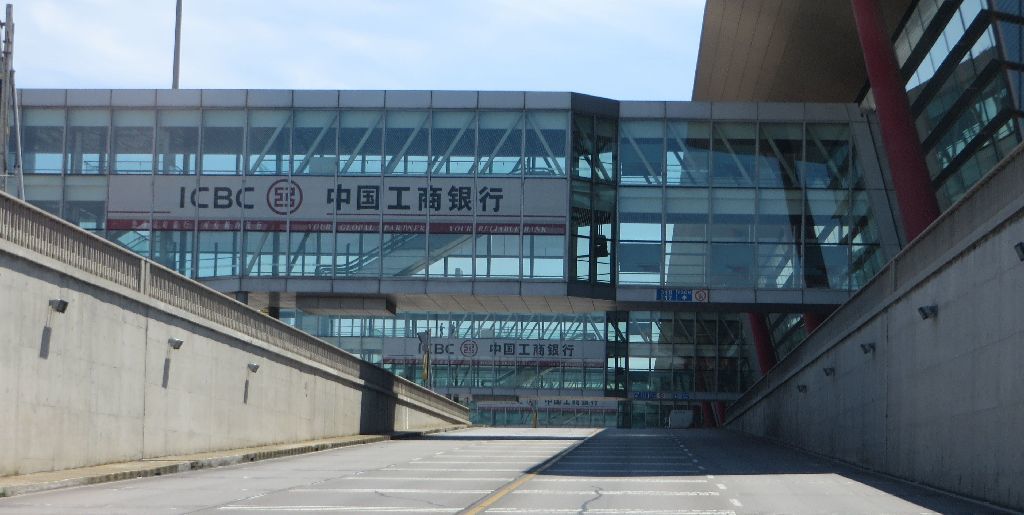
… apart from an outside view of this terminal 3D, which basically spells bad luck when you disembark there from a domestic flight.
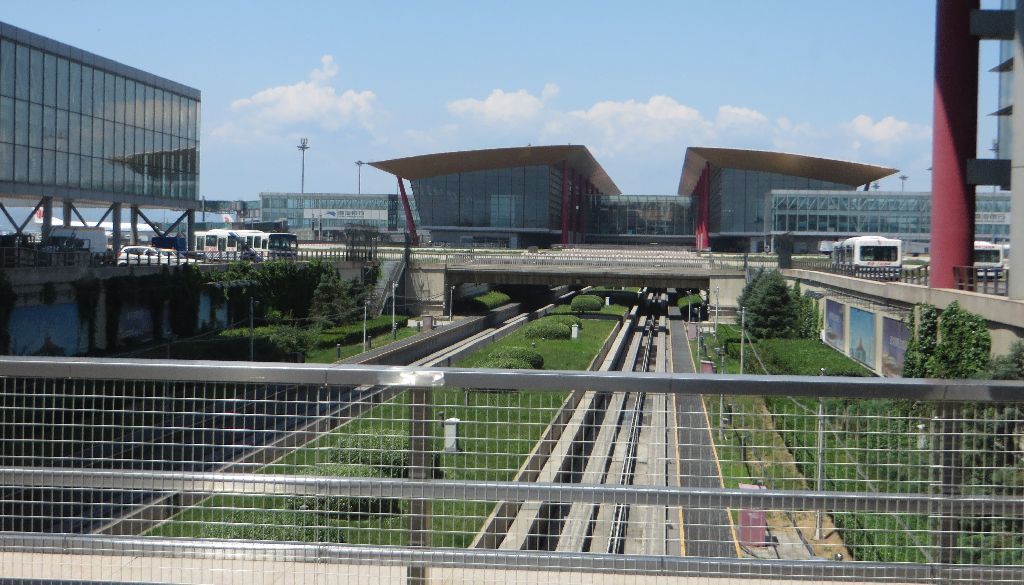
A longish walk in the domestic terminal. It is 13:05, i.e. my flight’s ETA.
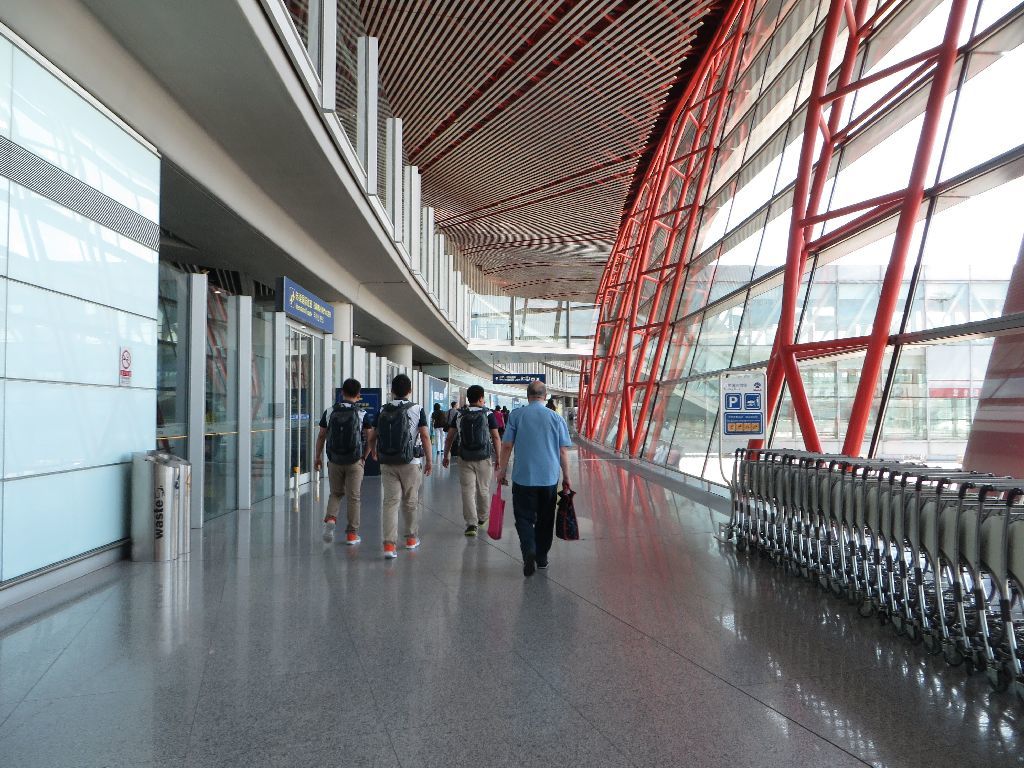
Arrival in the luggage delivery room
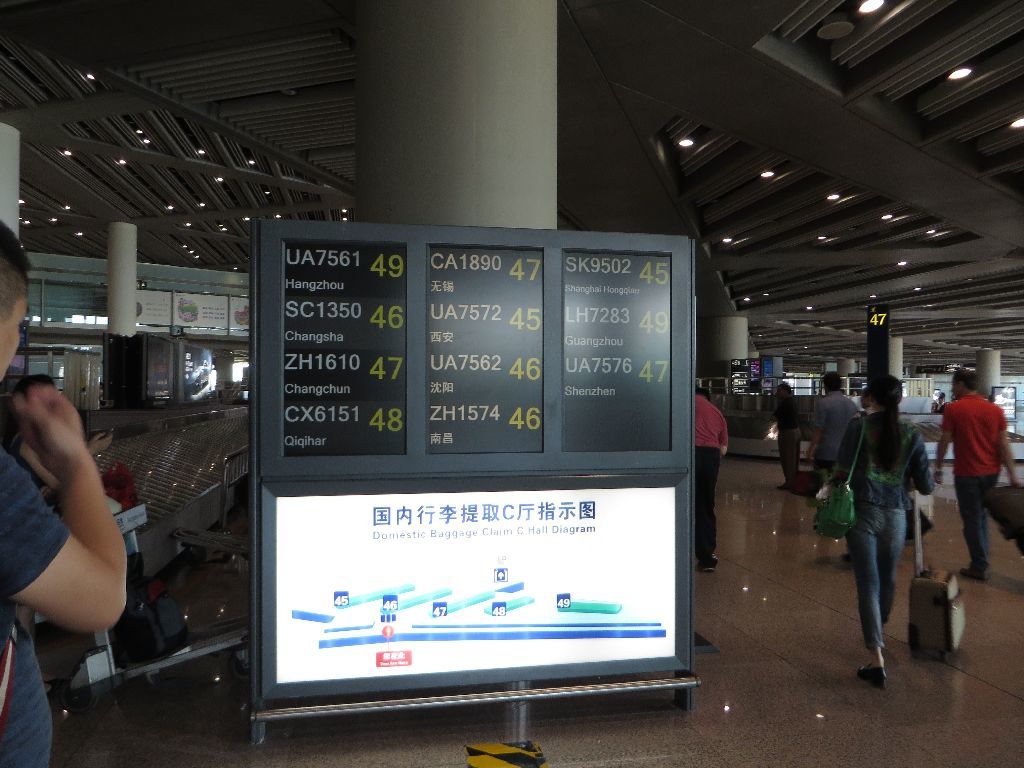
All told, 35 minutes elapsed from the arrival at the jet-bridge and the delivery of my luggage, including the bus transfer : this is not a very good performance by Chinese standards.
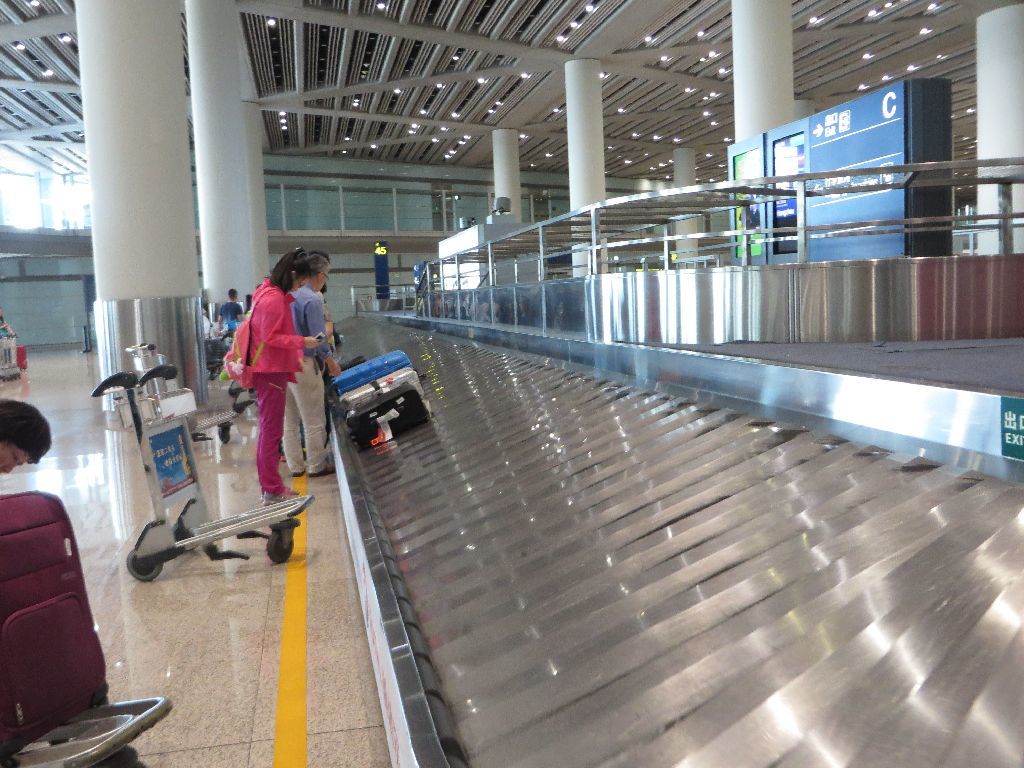
After leaving the luggage delivery area, but before reaching landside proper, there is a table with a small tray.
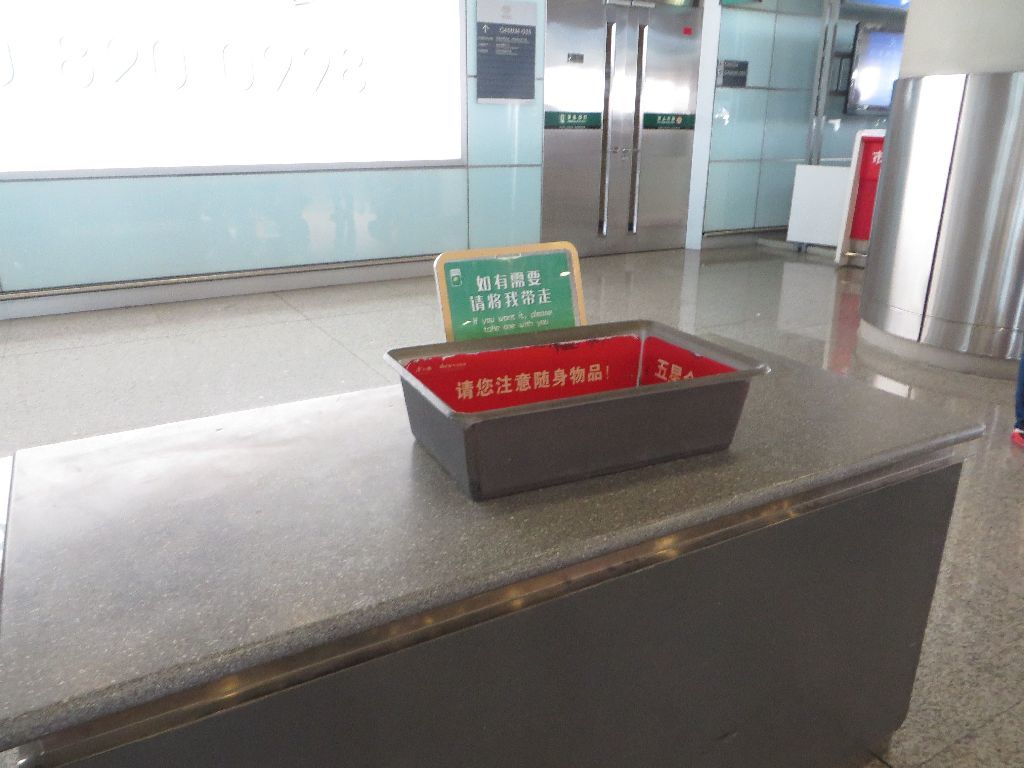
This tray contains some lighters which had been abandoned at the security check upstairs by passengers. You can thus replace the one you could not fly with, but there is not much choice today.
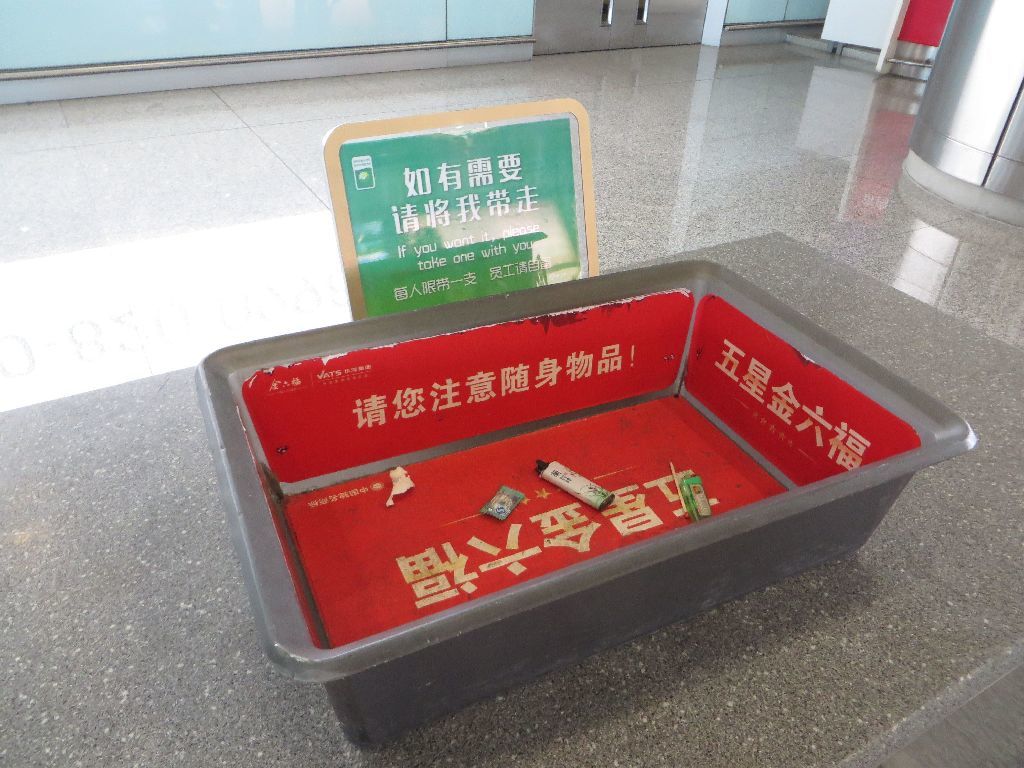
Waiting is as usual negligible at the taxi stand; what takes the longest time is reaching it, because you have the choice between undersized lifts where there is a waiting time, and very long travellators going down, or stairs. Nine minutes elapsed since the arrival landside.
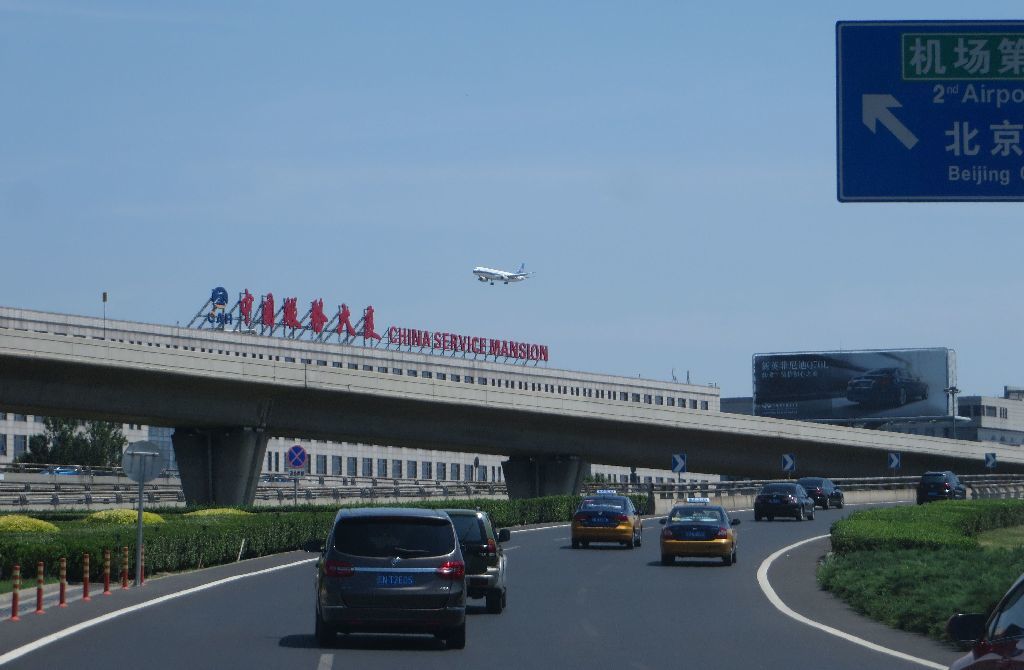
Arrival of a CA 737, seen just before leaving the airport perimeter.

There were some traffic jams as usual between the 5th and 4th ring roads. This olivgreen car which slaloms between the traffic lanes has a number plate with black characters off a white background, like all official vehicles, such as those of the army and police.
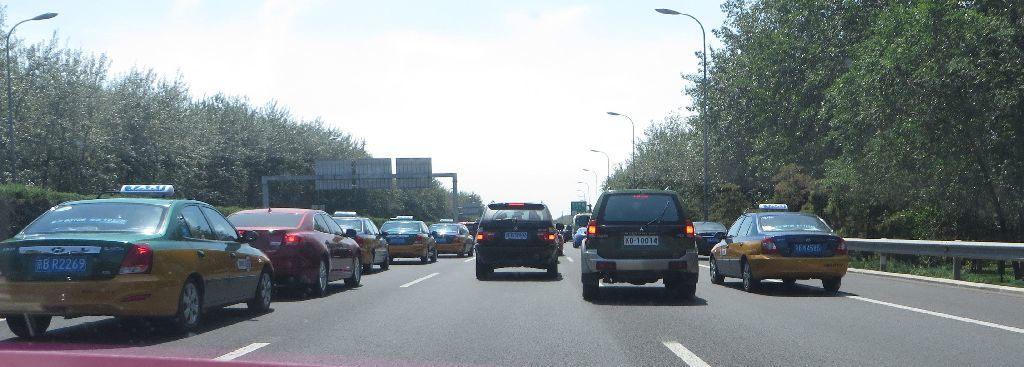
Its driver of course doesn’t feel constrained by this recommendation not to drive on the emergency lane.
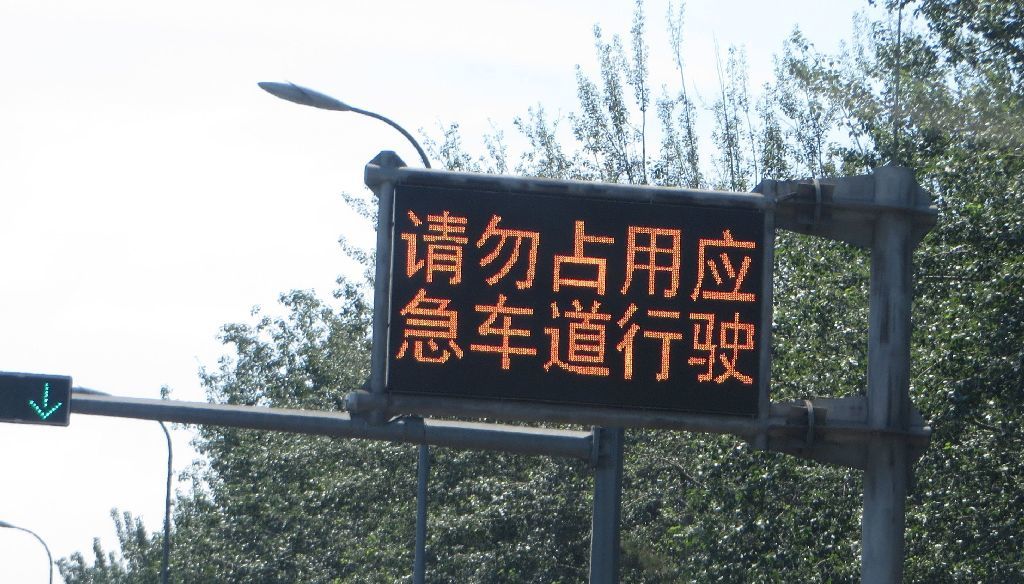
I wonder what this Justice Department (法司) car registered in Xinjiang Province was doing there… Ürümqi is 3,200 km away from Beijing on Expressway G30!
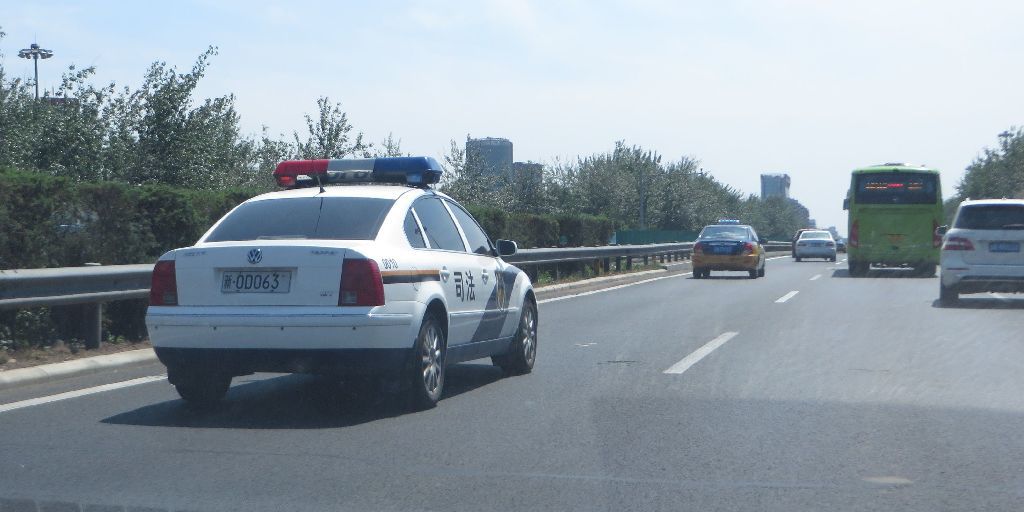
We are already leaving the air travel topic of this report. What follows is a long bonus on a first rate tourist site located outside Xi’an. No, not the world famous terracotta army, but Huashan, one of the five sacred mountains of Chinese Taoism, and by far the most famous of them.
Xi’an now has two subways lines (more to come), with Line 1 ending at Xi’an’s North Railway station, built in the outskirts of the city on the Zhengxi (= Zhengzhou – Xi’an) high speed line. The next stop is Huashan-North, 40 minutes away.
My business trip is organized with little more than a day advance warning, so I could buy train tickets ahead of time, but I have checked that there is ample space on the 7:53 train out of Xi’an North station.
I make it quite early to the station; not a bad idea, because there is longish line at the only manual counter for tickets sales.
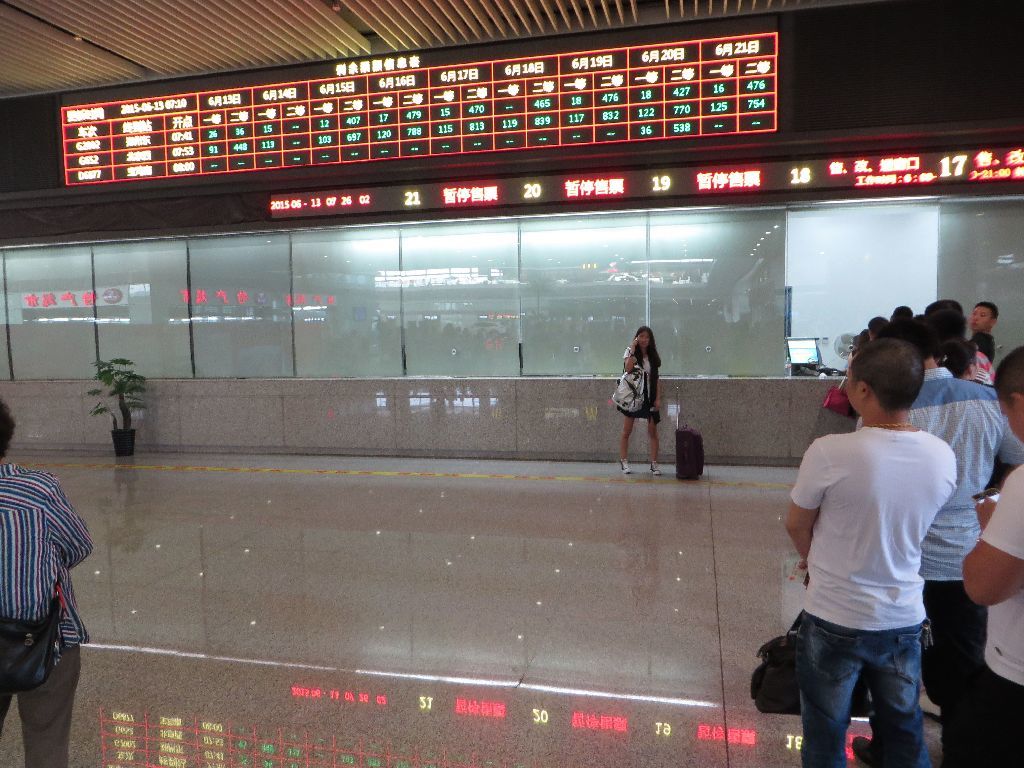
The information display overhead lists the number of seats remaining on the next ten days for each train and seat category. No problem for me: with 91 empty seats in 1st class and 448 empty seats in 2nd class, the train is going to be very empty on that 13th June.
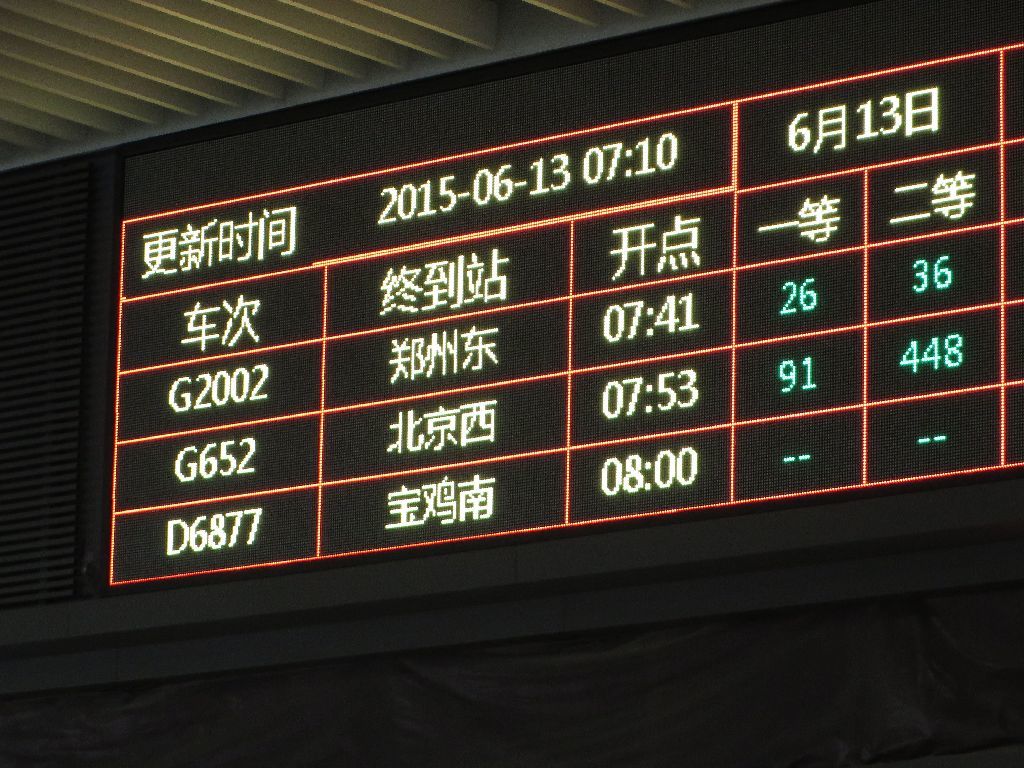
一张票到华山北 (One ticket to Huashan North) : little communication is needed, but the transaction takes more time than with a Chinese passenger, because I am not a Chinese citizen , and therefore I do not have a Chinese ID. In order to counter the black market in peak travel times (no Westerner can imagine what it means to have 1.3 billion Chinese travelling during Chinese New Year), train tickets are now nominative and must bear the name and ID number of the traveler. Issuing a ticket for a Chinese person is easy: the ticket clerk only needs to read the contactless chip of the ID card. But for a foreigner, you must type the name and the passport number, and foreigners always have improbably long and unpronounceable names.

I was not going to complicate matters further by paying with my credit card (but you saw that this was possible), the clerk typed my references with lightning professional efficiency and gave me back my passport, the change off a 100 yuan bill and the train ticket where I obscured my incomplete name which is unpronounceable and way too long for the maximum number of letters that the Chinese specify for this purpose in any official document.
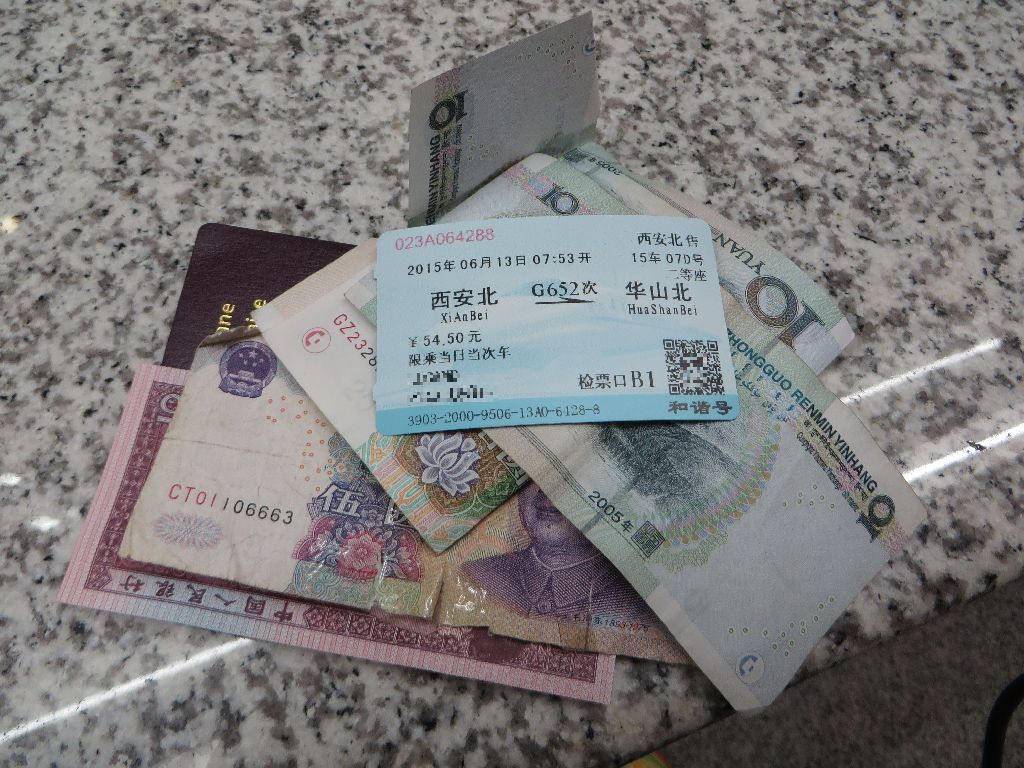
Nobody checks that I have a passport matching the abridged but still improbably long and unpronounceable name on my ticket when I scan it at the turnstile.
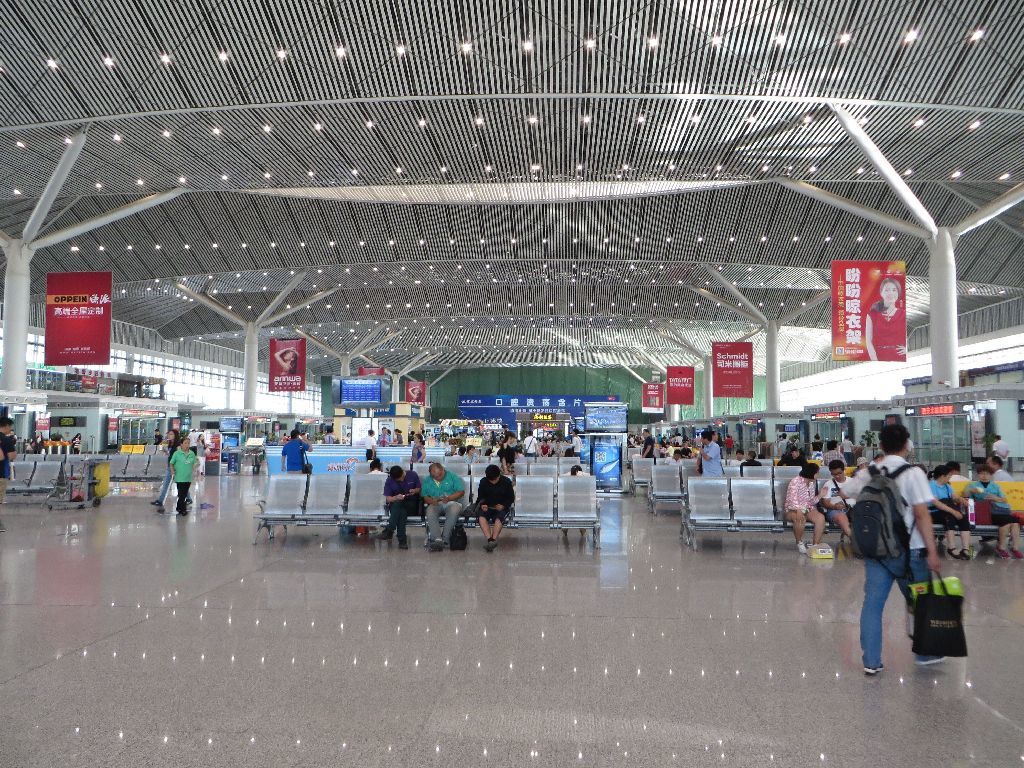
Once « railside », if I may say, I go to this kiosk received a small bottle of water which is offered to each passenger. One bottle only: the staff ticks the ticket when giving the bottle.
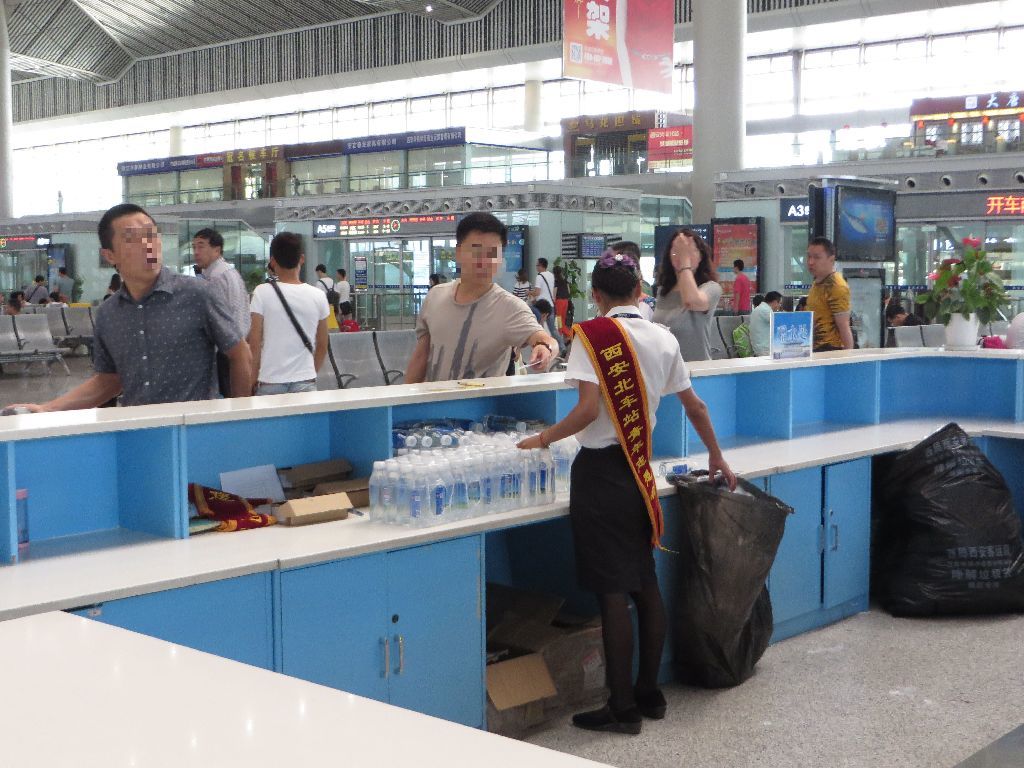
I have no time for train spotting, which is not easy anyway, because I only have access to the platform where my train is. This is another identical one, seen while departing from the station.
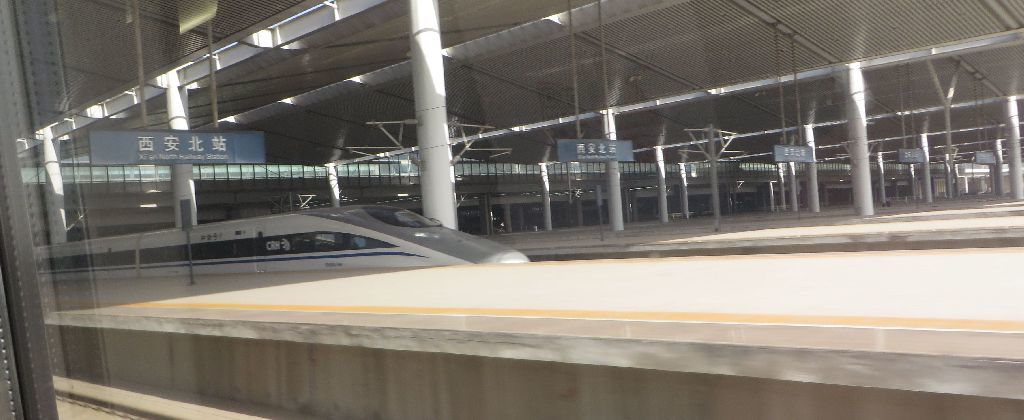
Forty minutes by train plus a quarter of an hour by taxi later, I reached my destination, i.e. this temple which is the starting point of the main trail up Huashan.
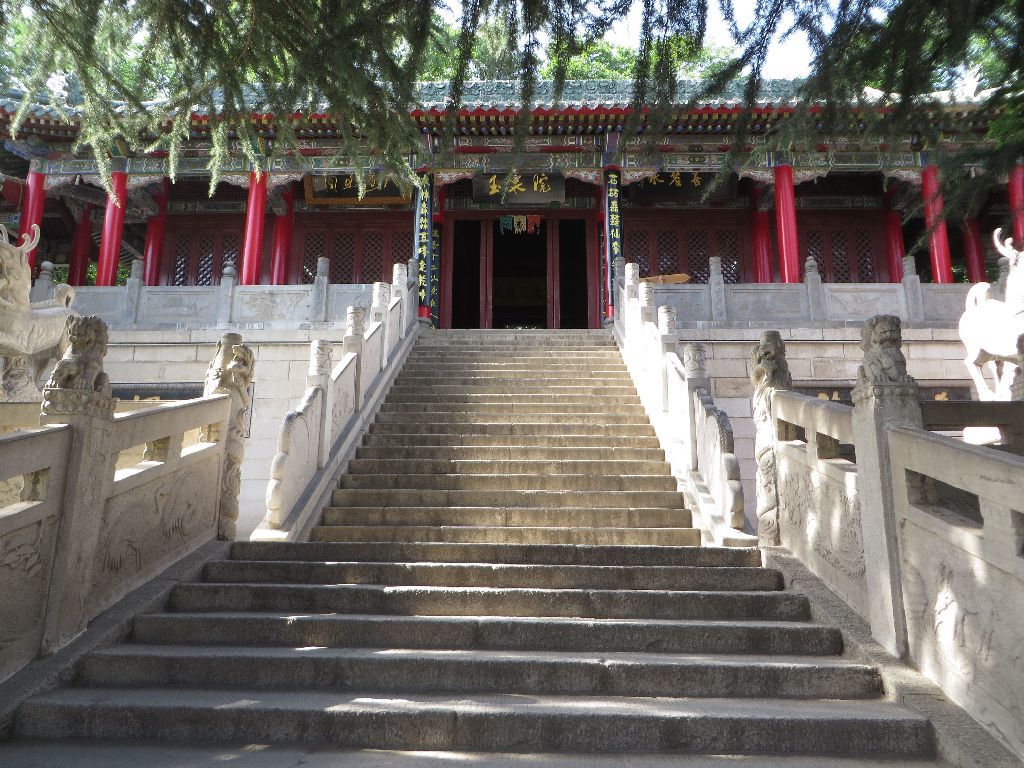
The ticket (which is quite expensive by Chinese standards) is valid for two days, and in order to deter ticket resales, you must record a fingerprint for reentry purposes. It won’t be useful for me, since this will be a single day trip.
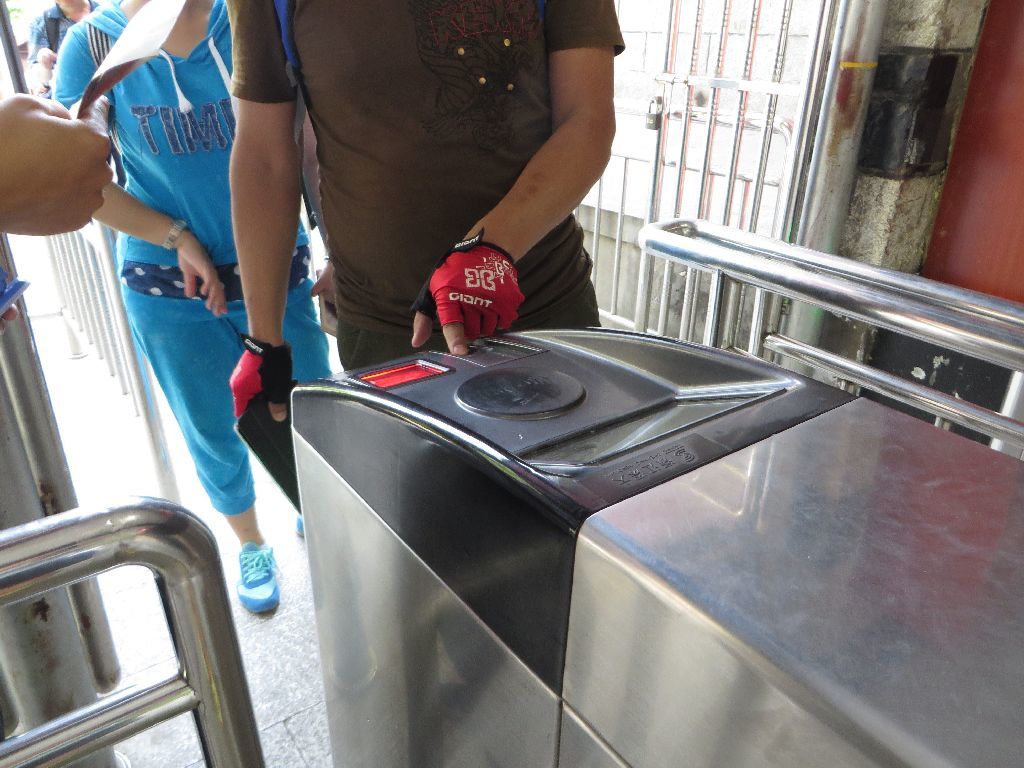
And that is the beginning of the ascent. In China, a trail up a sacred mountain is a solid construction made all the way of carefully cut granite slabs.
There are civic education signs along the way like this one
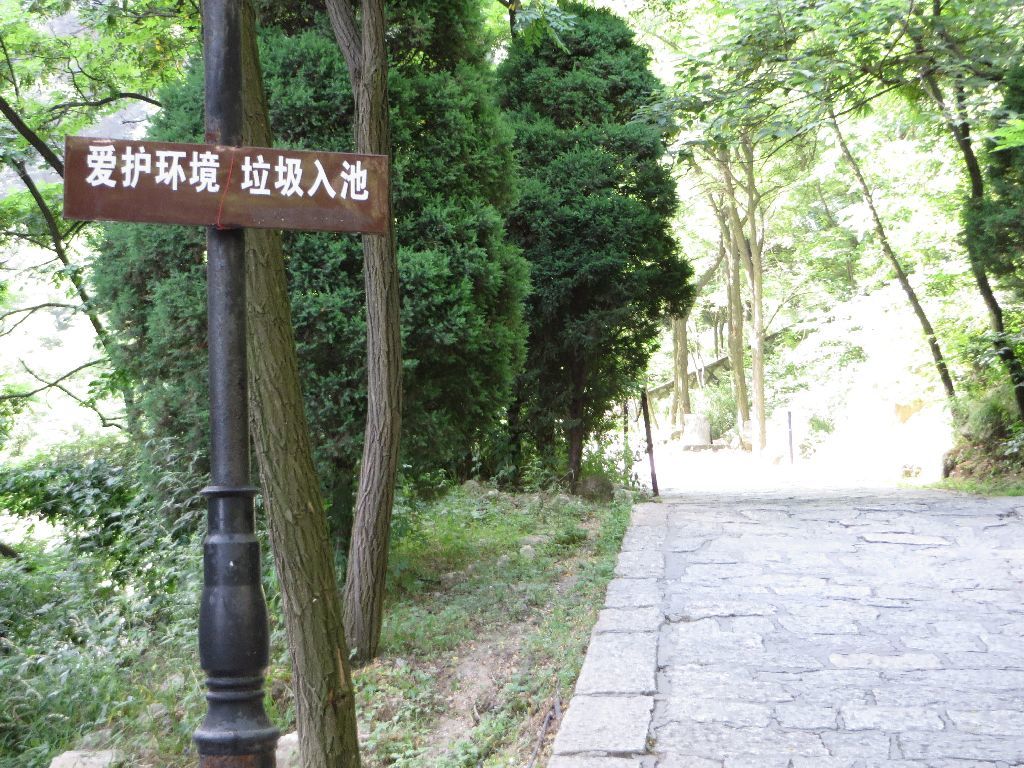
Respect the environment – Do not throw rubbish in the water streams
Since there are (admittedly few) foreigners, better translate in crude English the messages, in case they had not understood from the pictogram that throwing away a lit match is not a good idea.
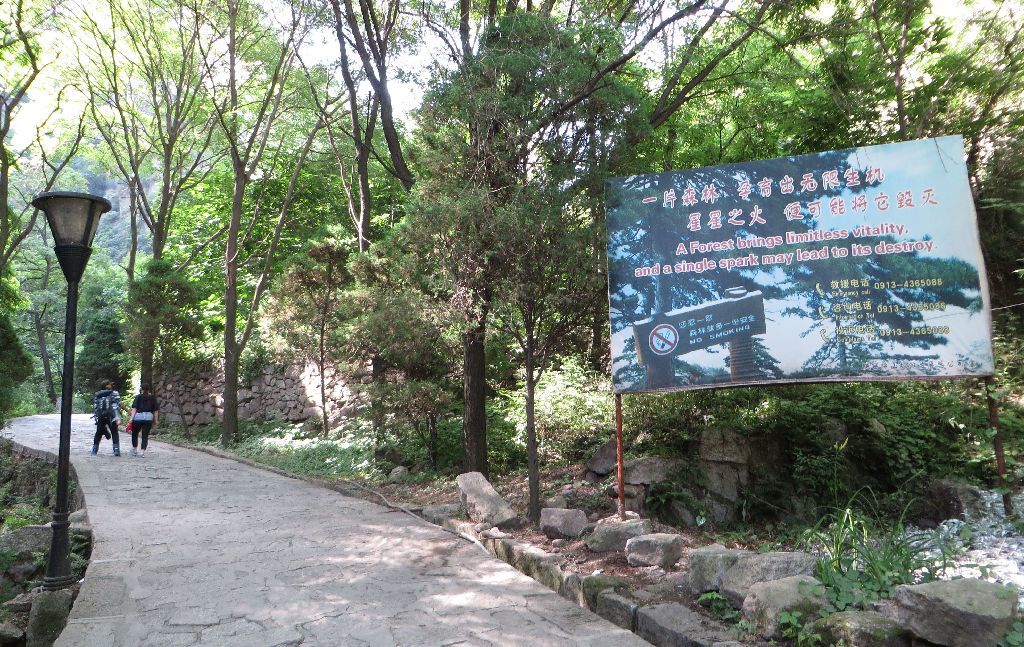
Seeing this unique chinglish on that sign justified hiking up the mountain, rather than using one of the aerial tramways.
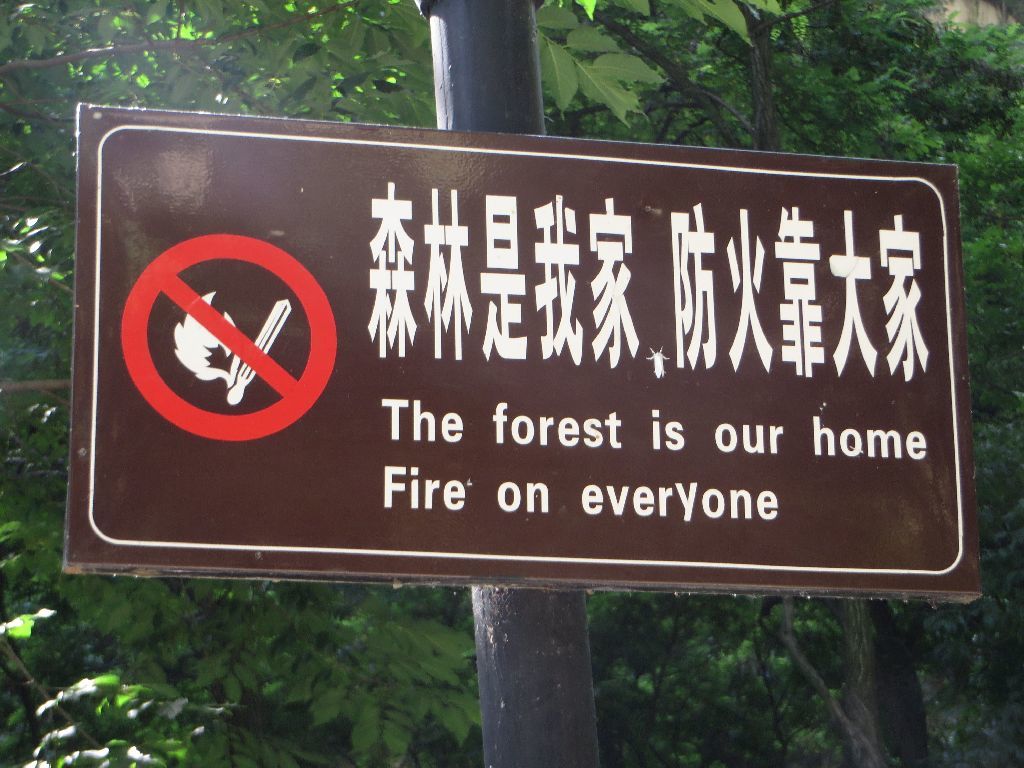
The second part of the message in Chinese actually means « Do not set fire to the entire household »
There are not only tourists on the trails up Huashan. All the souvenirs, the water, the food is carried up by often elderly men who carry loads up to 50 kg. I do not know if they also use the aerial trams for that purpose, after hours.
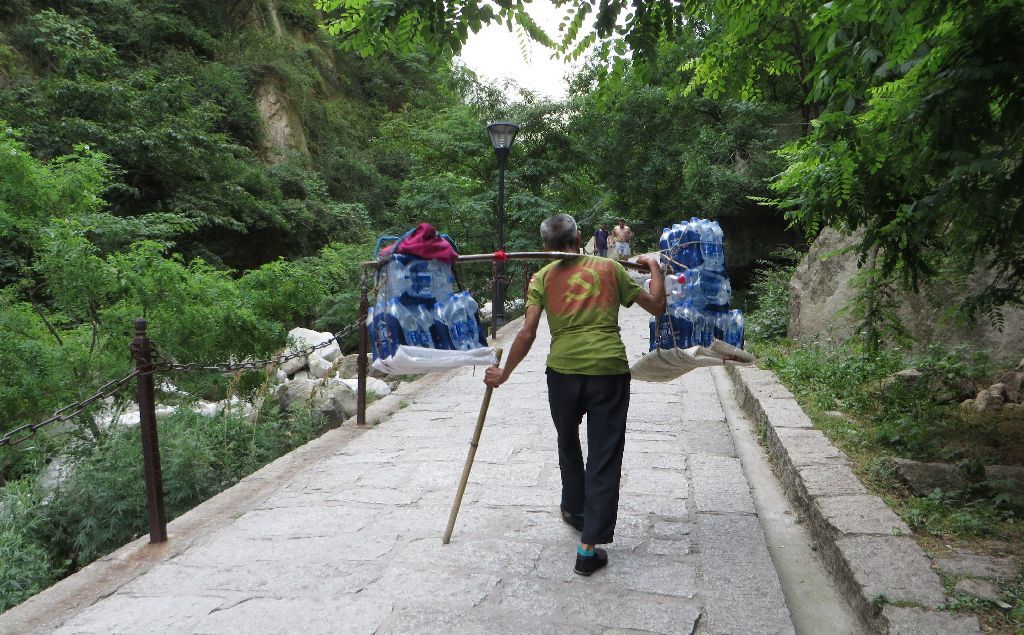
Apart from water and other drinks, you can find in these shops the padlocks that the Chinese love leaving behind them after engraving them with their names.
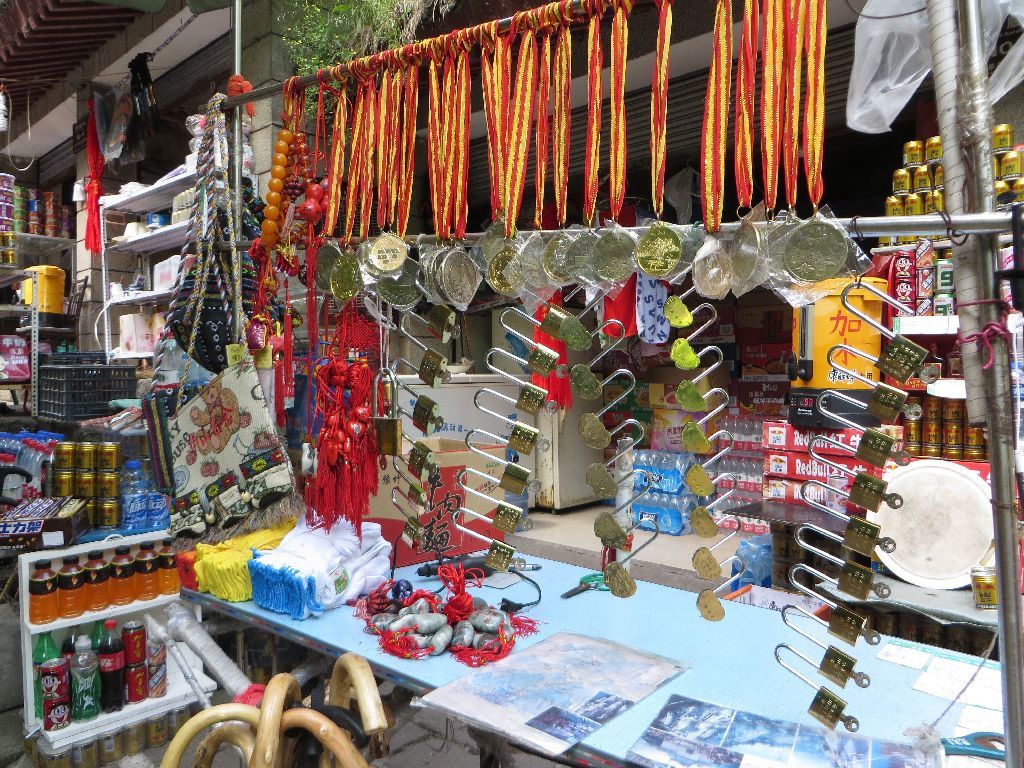
Climbing a sacred mountain in China means climbing granite steps. Lots of them. Most of the 1,800 m altitude gain is done on stairs, some reasonably easy like this one.
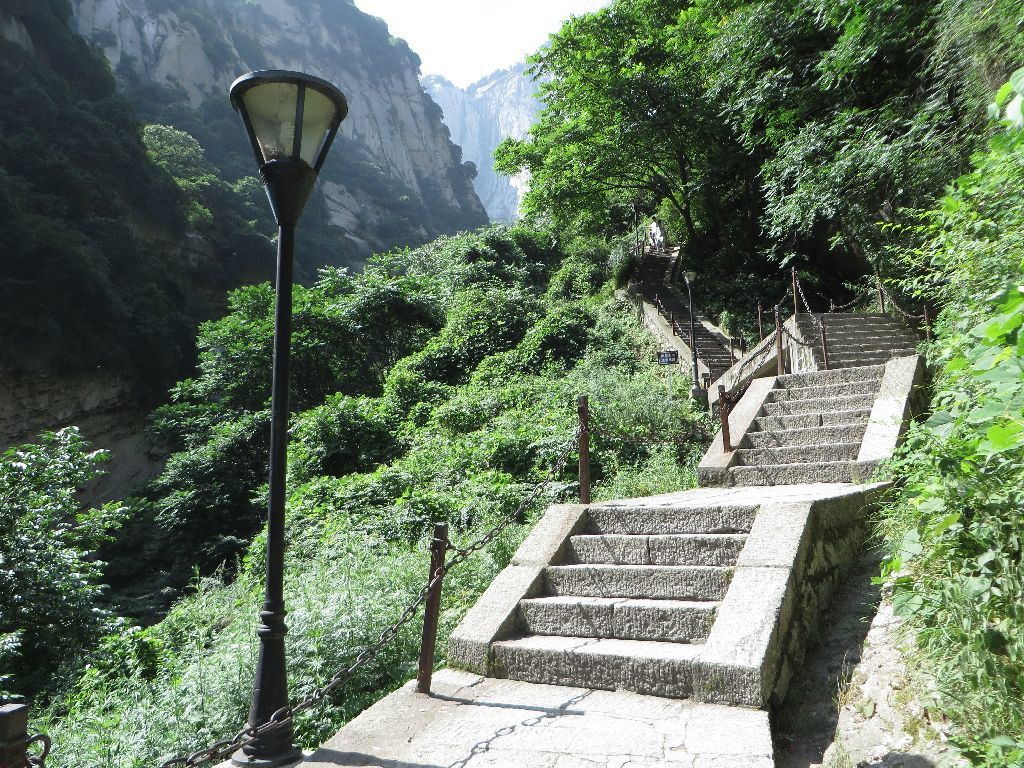
And others dramatically steep like that one
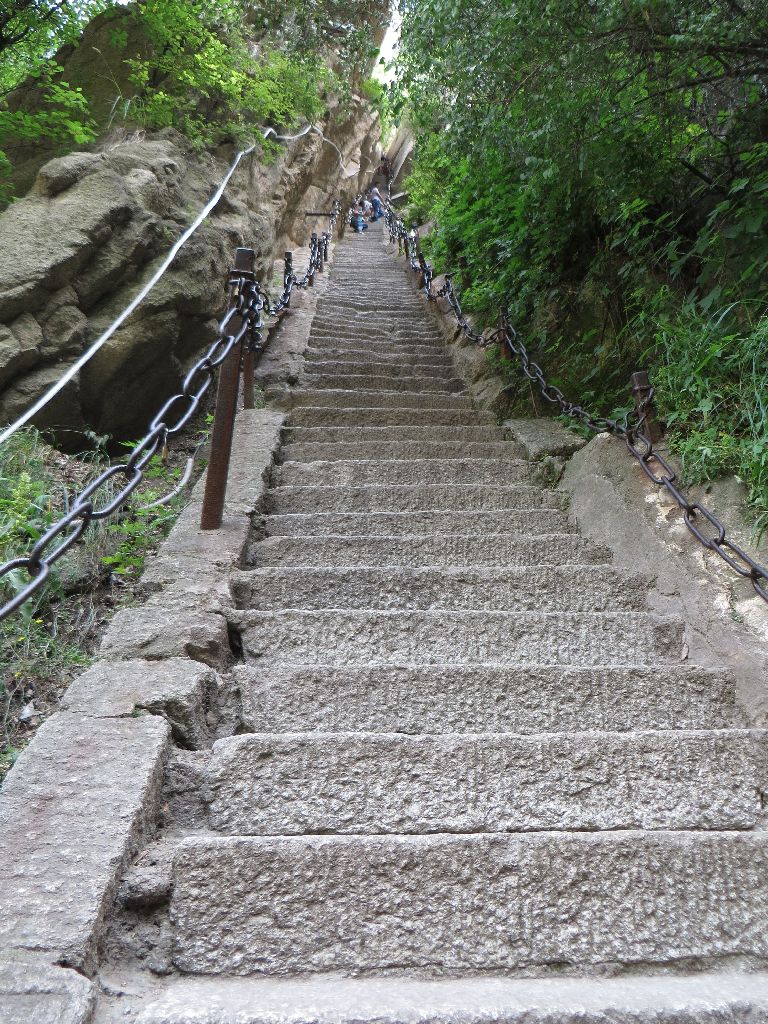
I had not brought my measuring tape, but see the width of the steps compared to the size of my shoes!
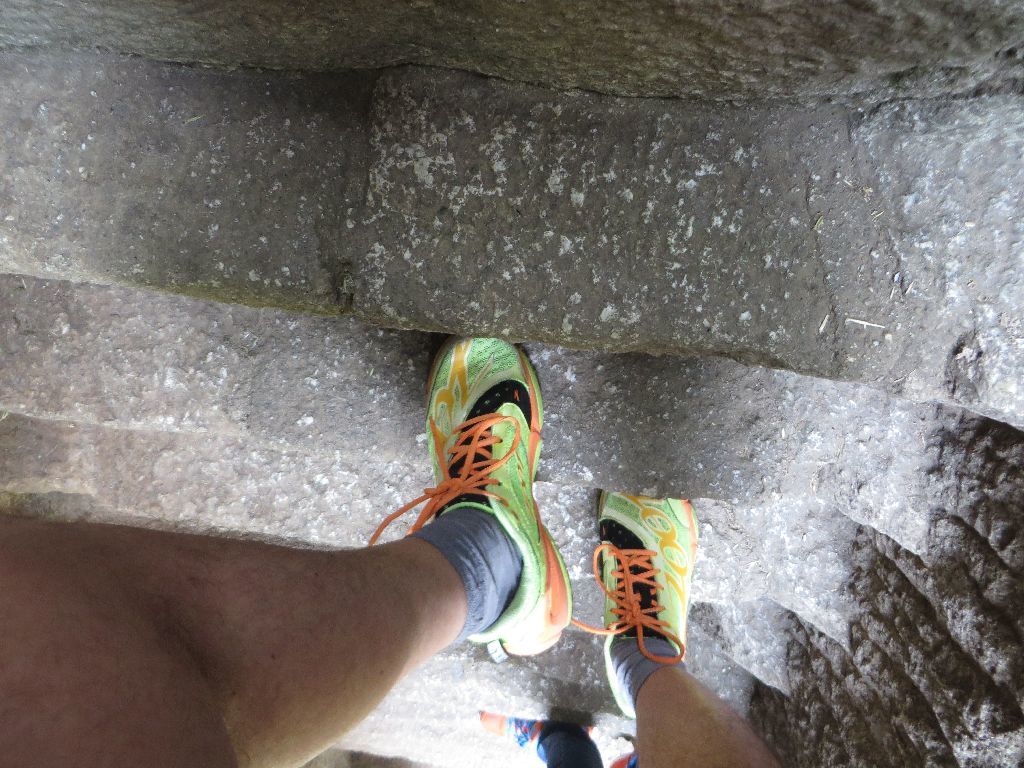
Once you reach the top, the visitor discovers razor sharp mountains on which temples have been built.
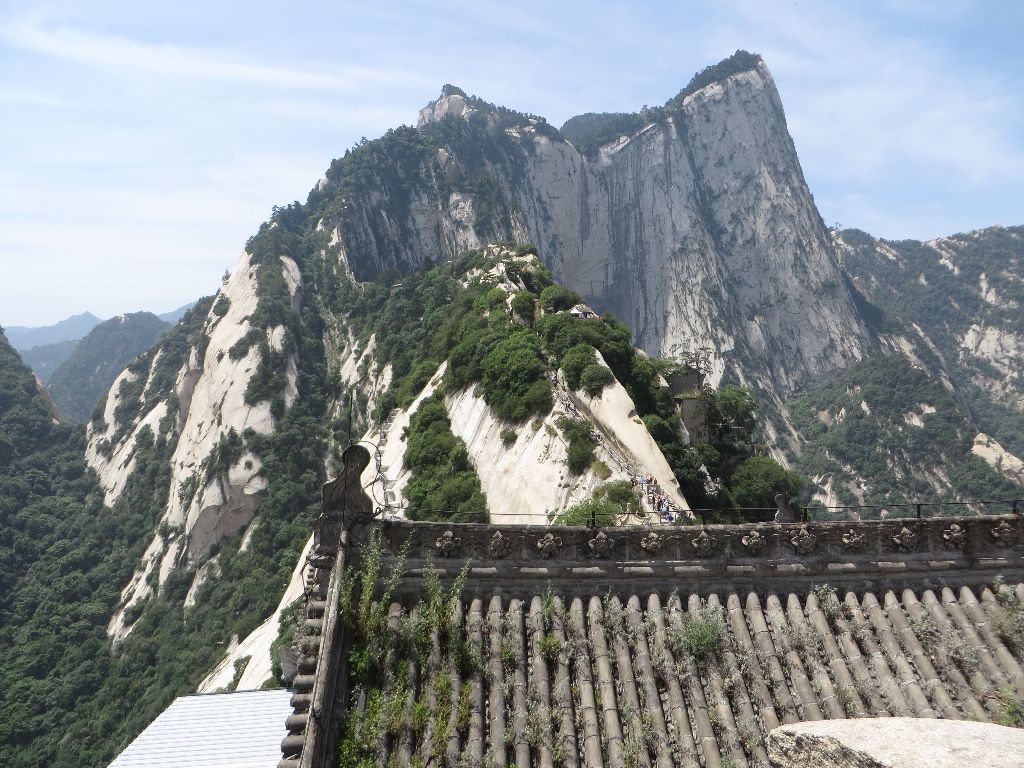
Many stairs have been hewn out of sheer rock
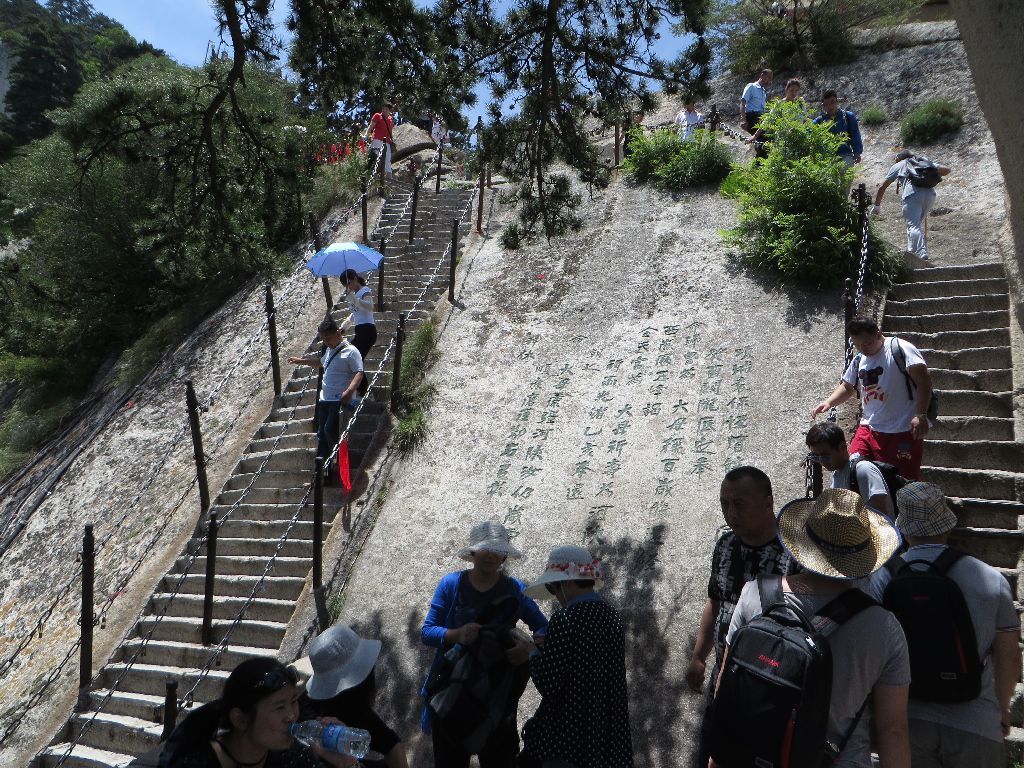
But here, a wooden staircase has been built to provide a way around a difficult section, since the last time I visited.
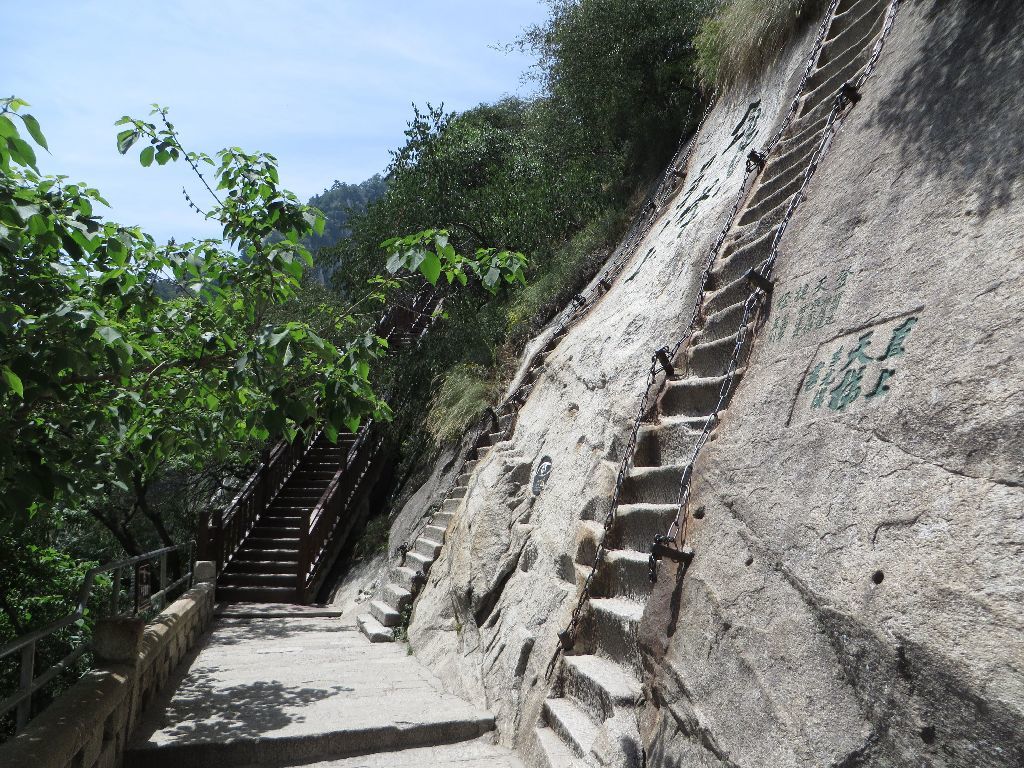
天梯 (« The Stairway to Heaven ») is the spectacular trail section from the North Peak to the South Peak of Huashan


During the ascension to Heaven

In the distance, the temples of the North Peak (on the left), and somewhat below, the upper station of the main cable car to Huashan, for the majority of visitors who do not climb on foot.
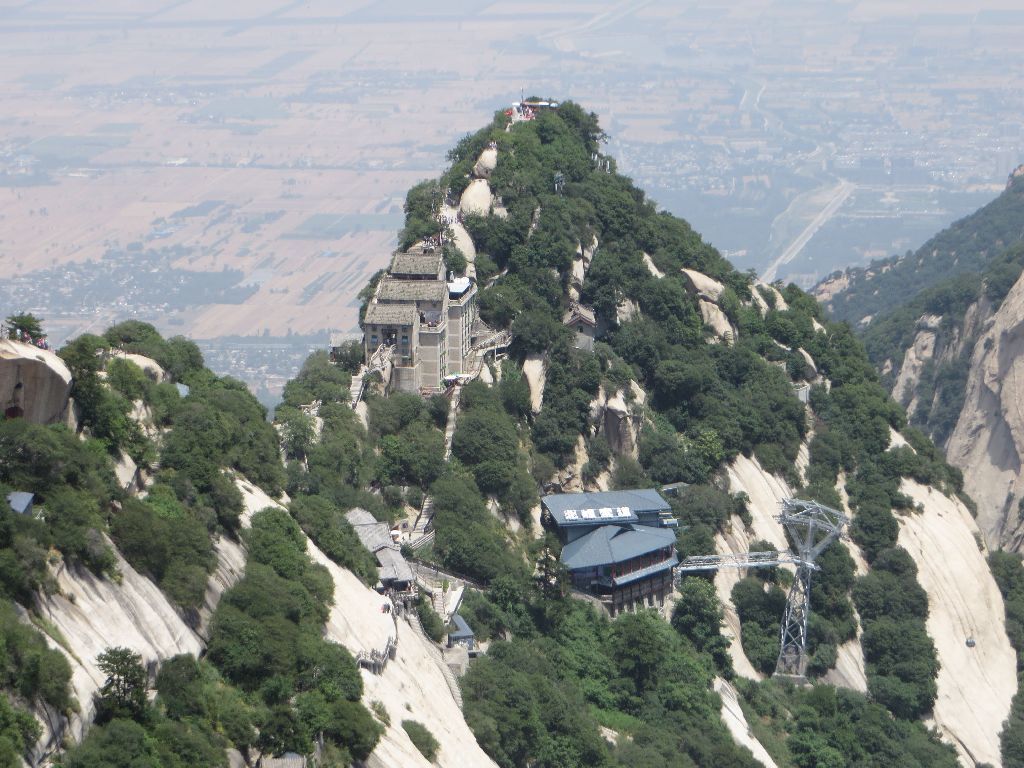
A sacred mountain is ideal place to leave vows ribbons. In order to facilitate the work of the gods, these ribbons are grouped according to the type of wishes: you have in the foreground the wishes of success at school exams, on the left wishes of a long life, and so on.
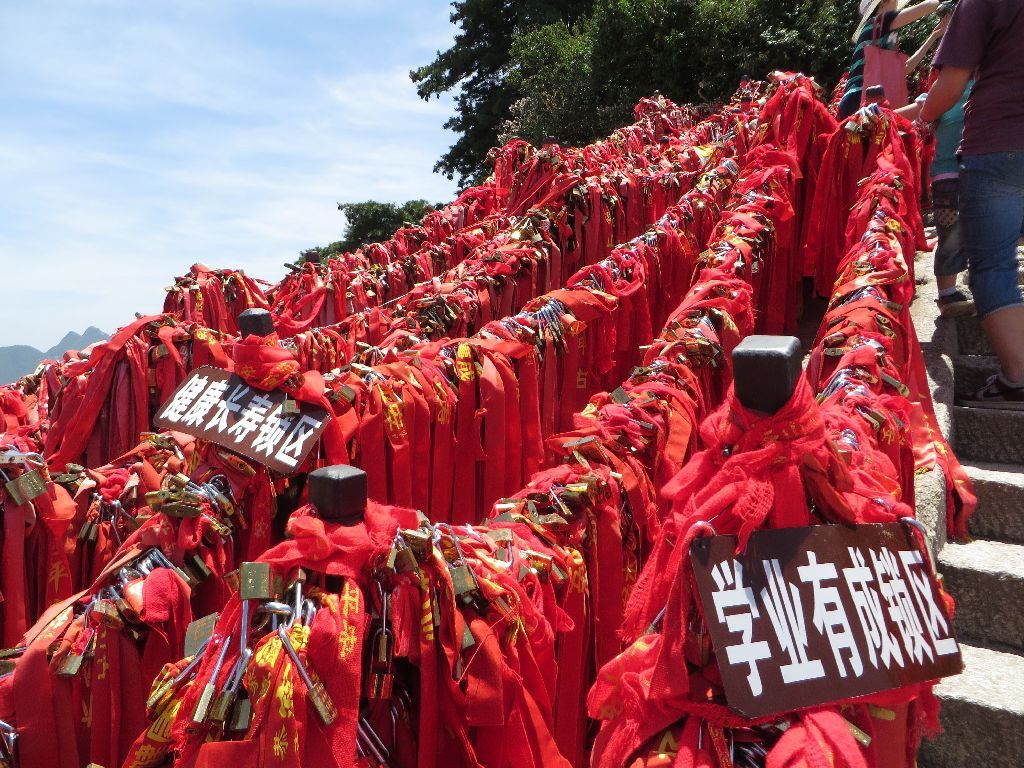
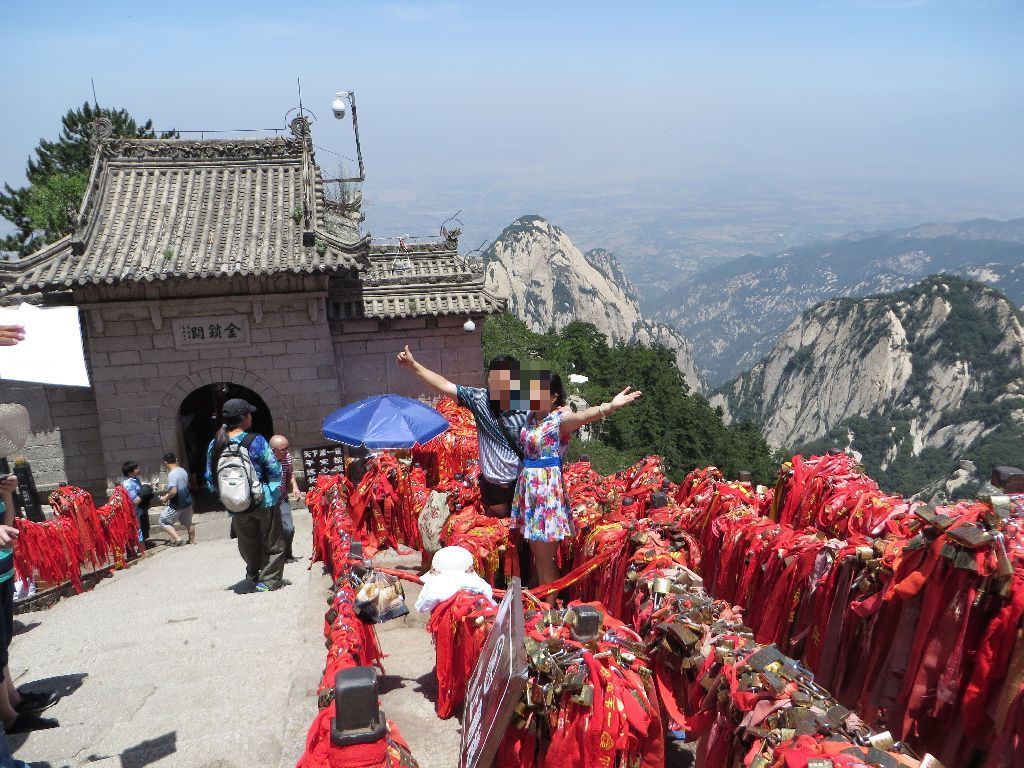
Another narrow peak of bare rock

… with stairs cut directly in the rock, seen here form the viewpoint in front of it
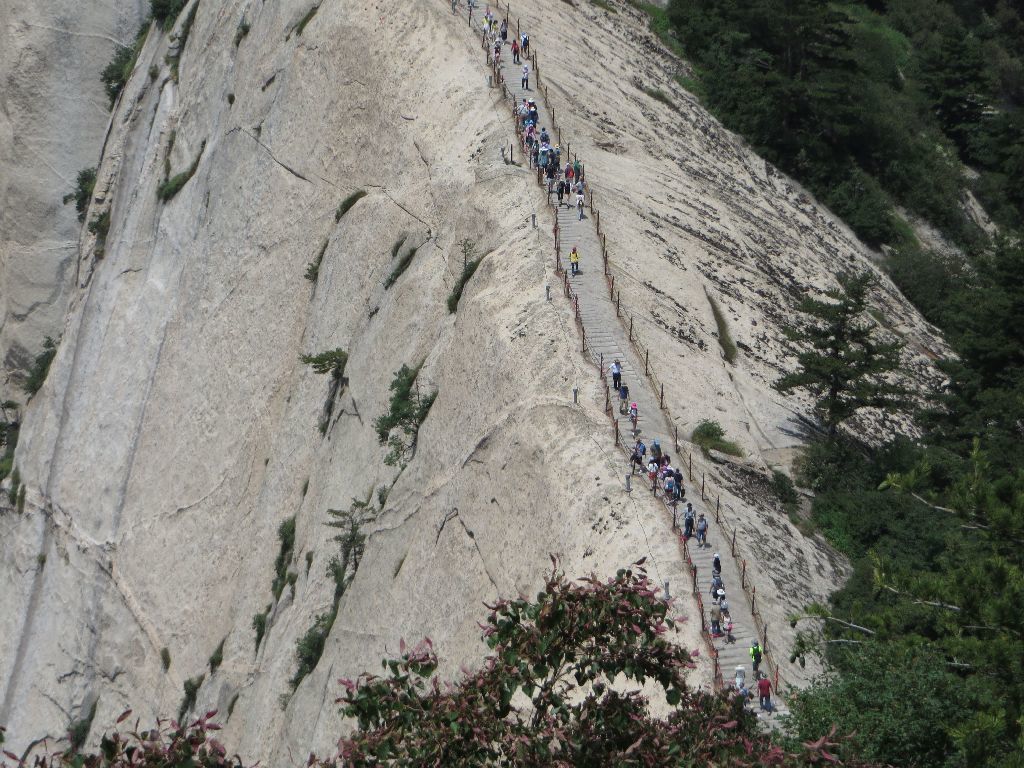
.. and on location

The legend is that this rock has been cut in two by a sword
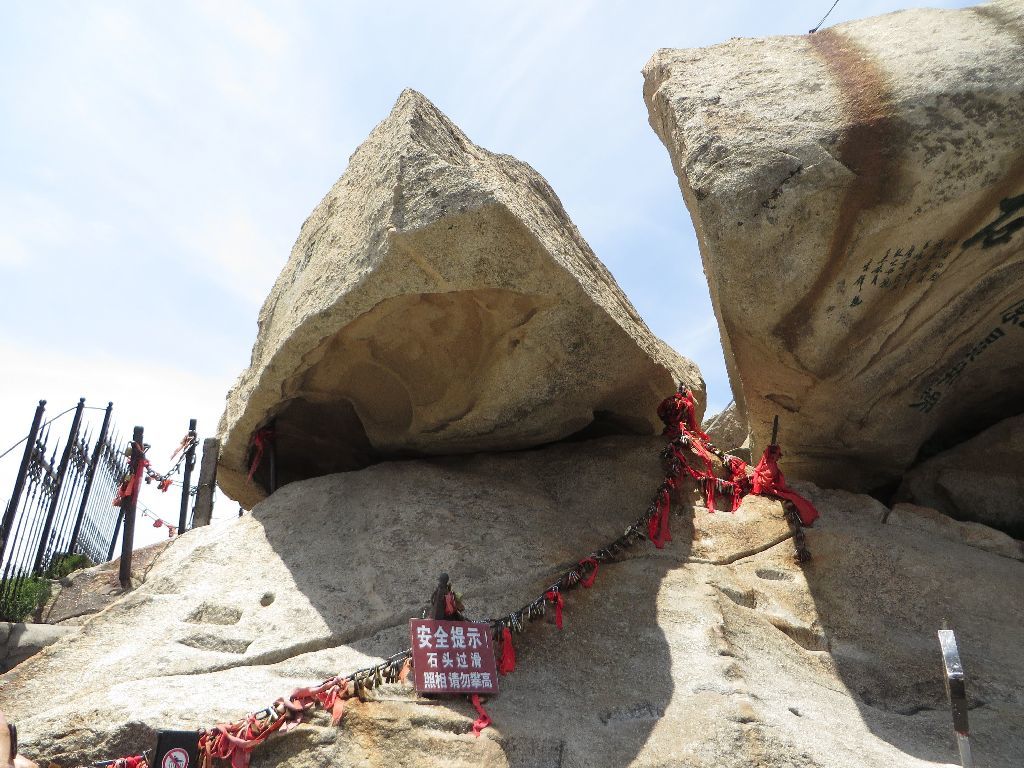
This other spot has been privatized by a photographer.
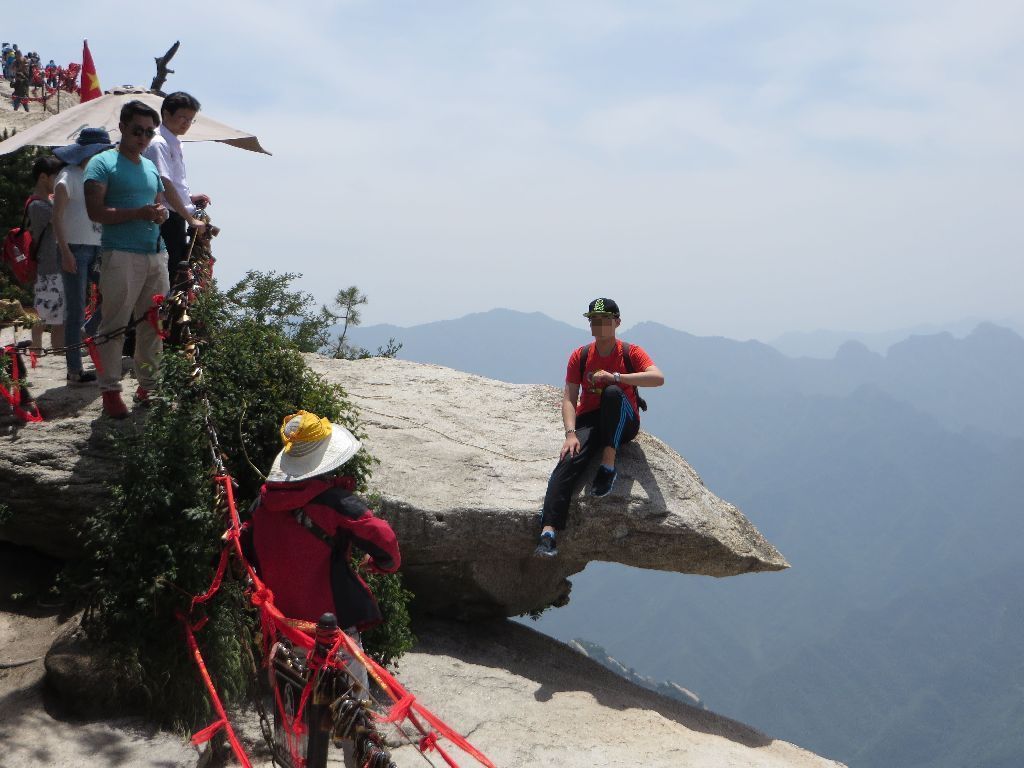
This picture taking is without danger because both the visitor and photographer’s assistant who shows him typical poses are secured by a cable attached to a belt.
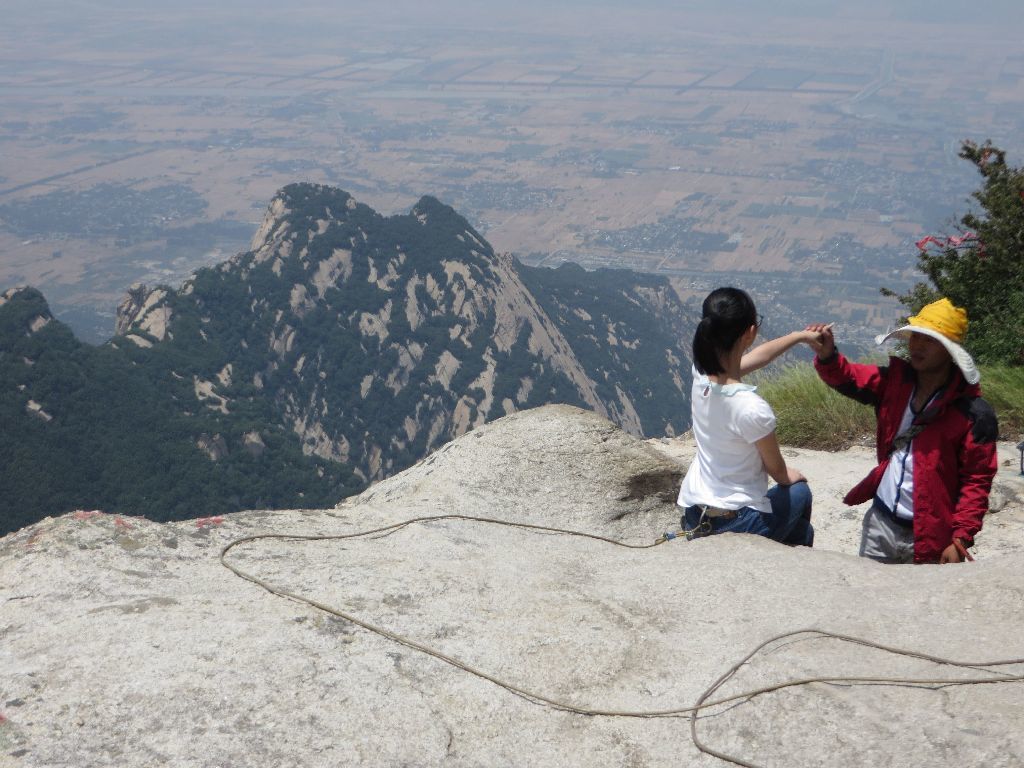
Since this is a sacred mountain, there are monasteries, but since they have to make a living, they provide hosteling (at hotel prices, but mountain refuge comfort)
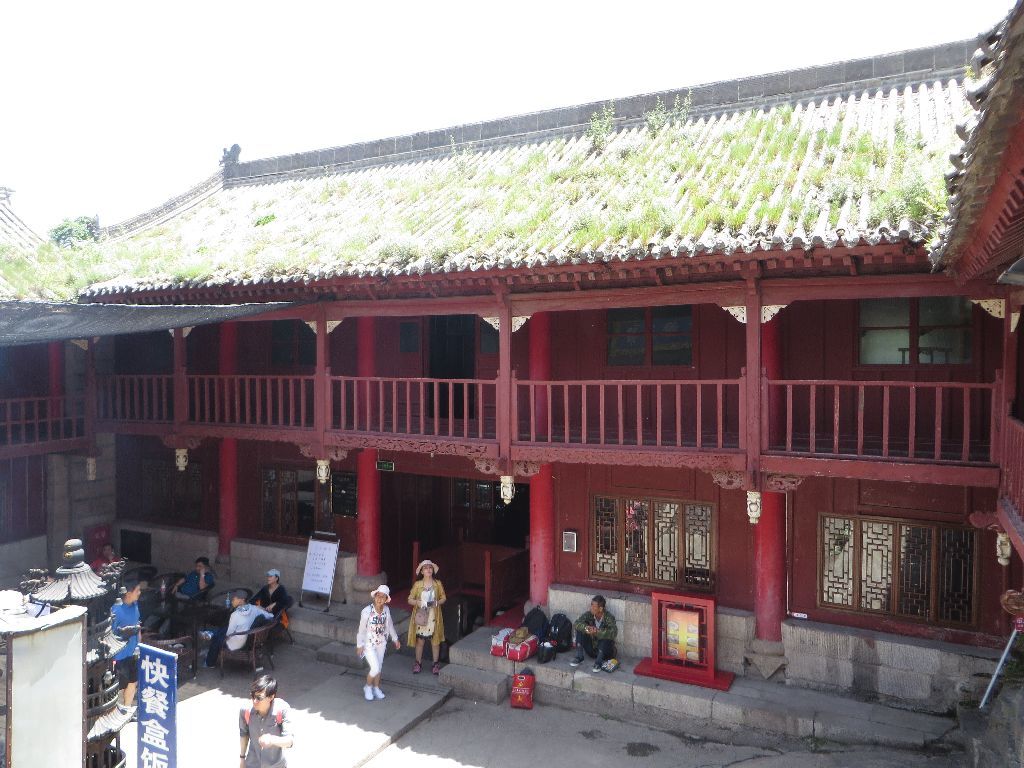
And hot meals like this one

This standard food tray is sold 38 yuan: I ate more than that for 10 yuan in a food court in the center of Xi’an. This is in line with local prices: everything is four times more expensive, due to the logistics involved in getting it there.
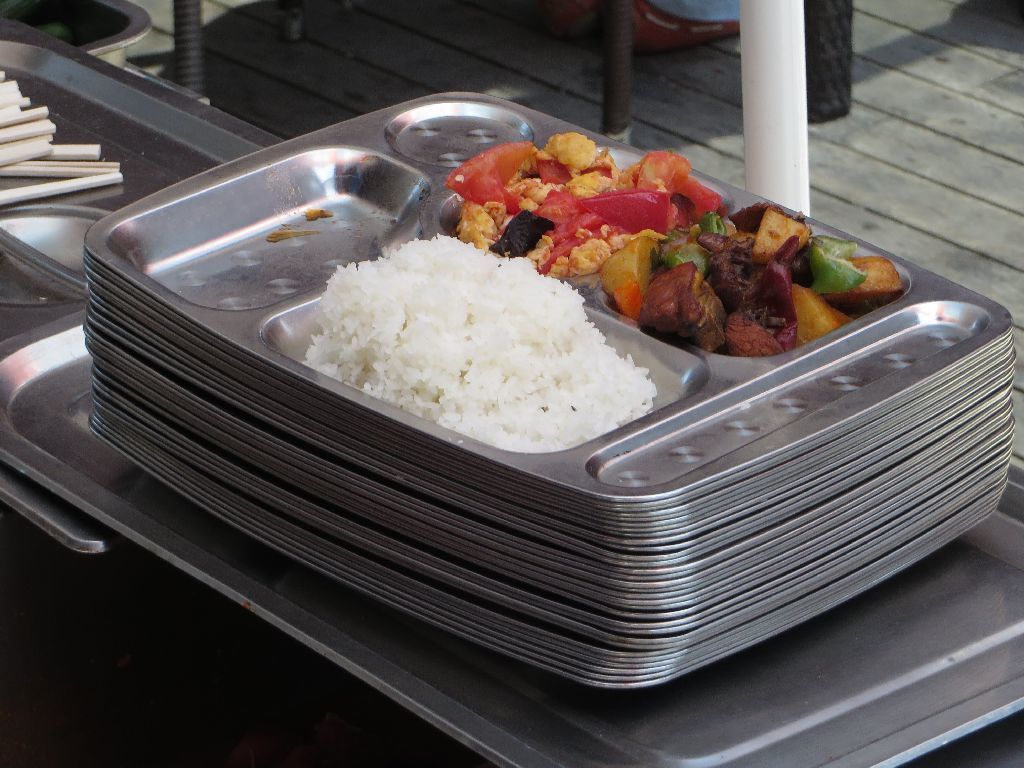
Guess where I call you from? You can place such a call there on your cell phone because there are GSM relay antennas like this one, camouflaged as a pine tree which is credible from a distance.
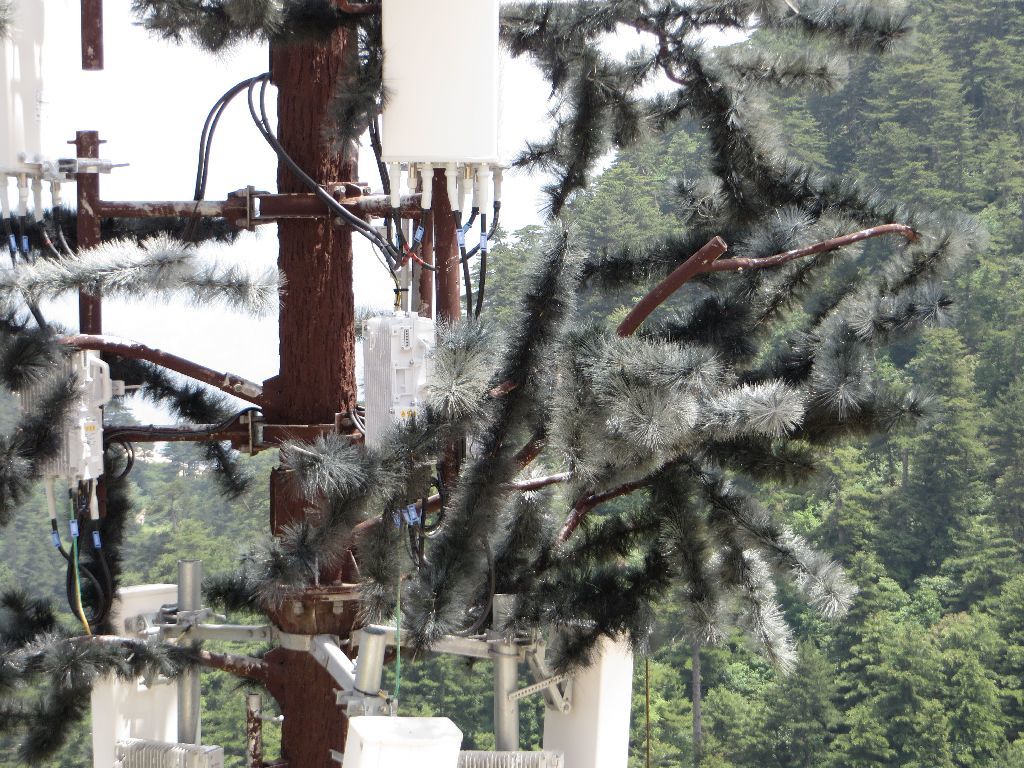
The highest point of Huashan is the South Peak, 2,154 meters above sea level. It took me determination to manage to take a picture of an anonymous tourist without somebody in the way, and it was so crowded there was no way I could ask somebody to take me with my camera…
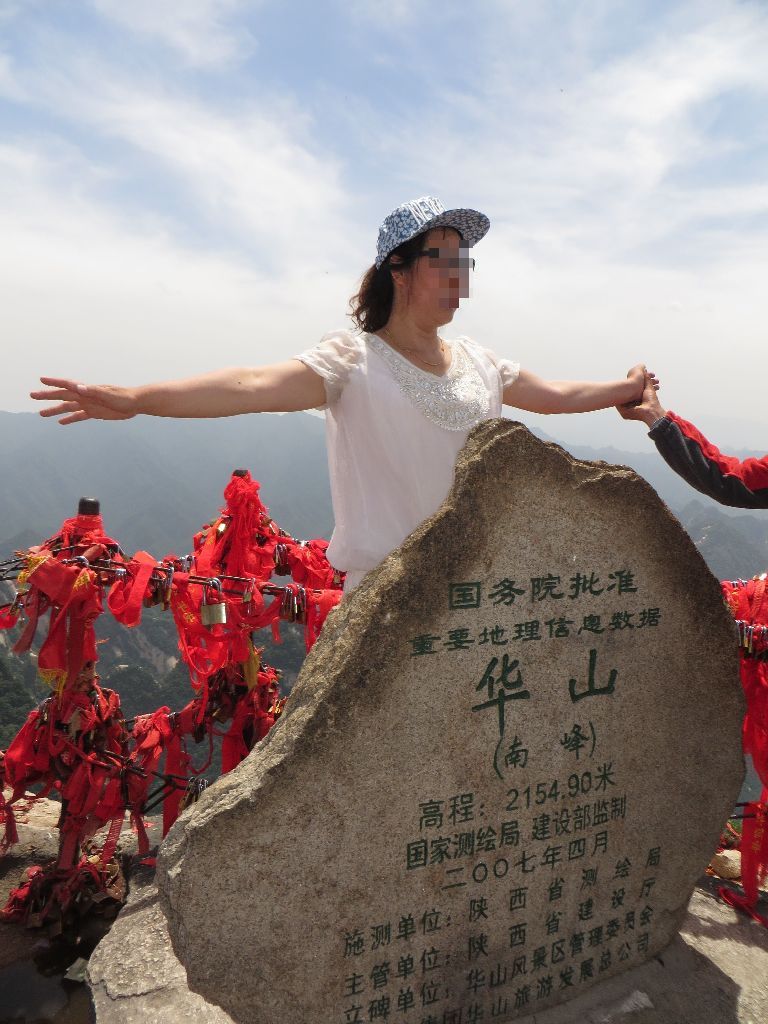
One of the most spectacular places in Huashan is at the far end of the site, and is only post signed in Chinese: 长空栈道 could be translated roughly by The Planks Trail in the Sky.
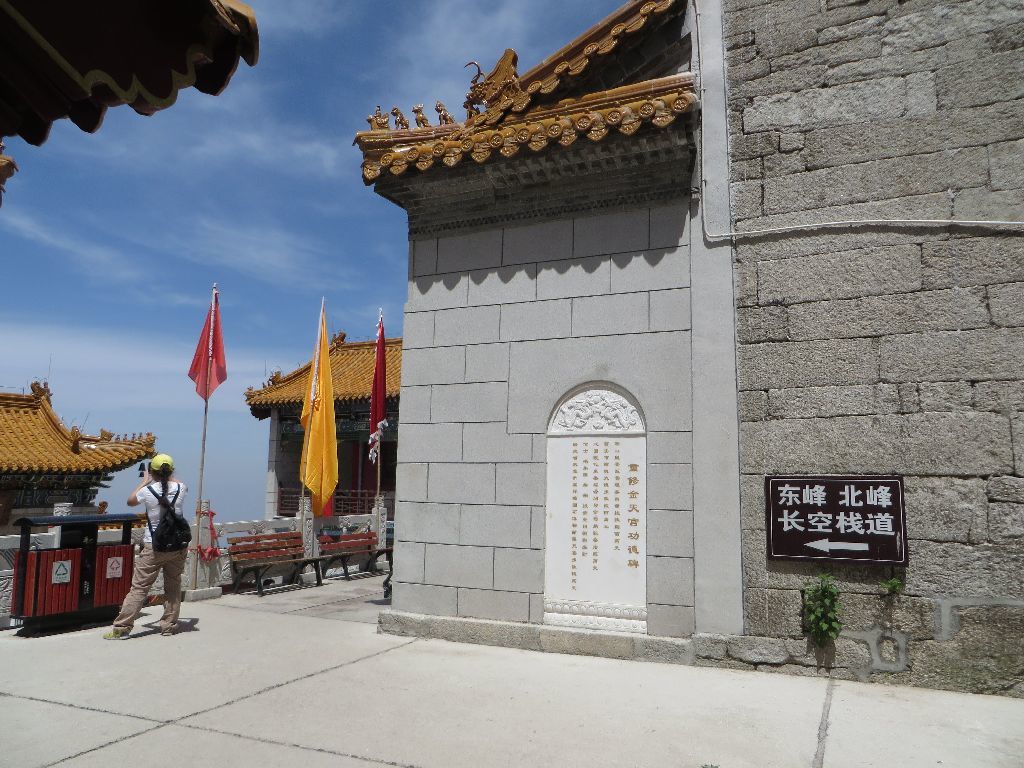
How could you call otherwise this vertiginous contraption that so many internet users have seen without knowing if the pictures had been doctored? There is no photoshopping involved: on this sheer quasi-vertical cliff, these precariously attached wooden boards on iron consoles had only chains to keep visitors from falling to their death (which they sometimes did).
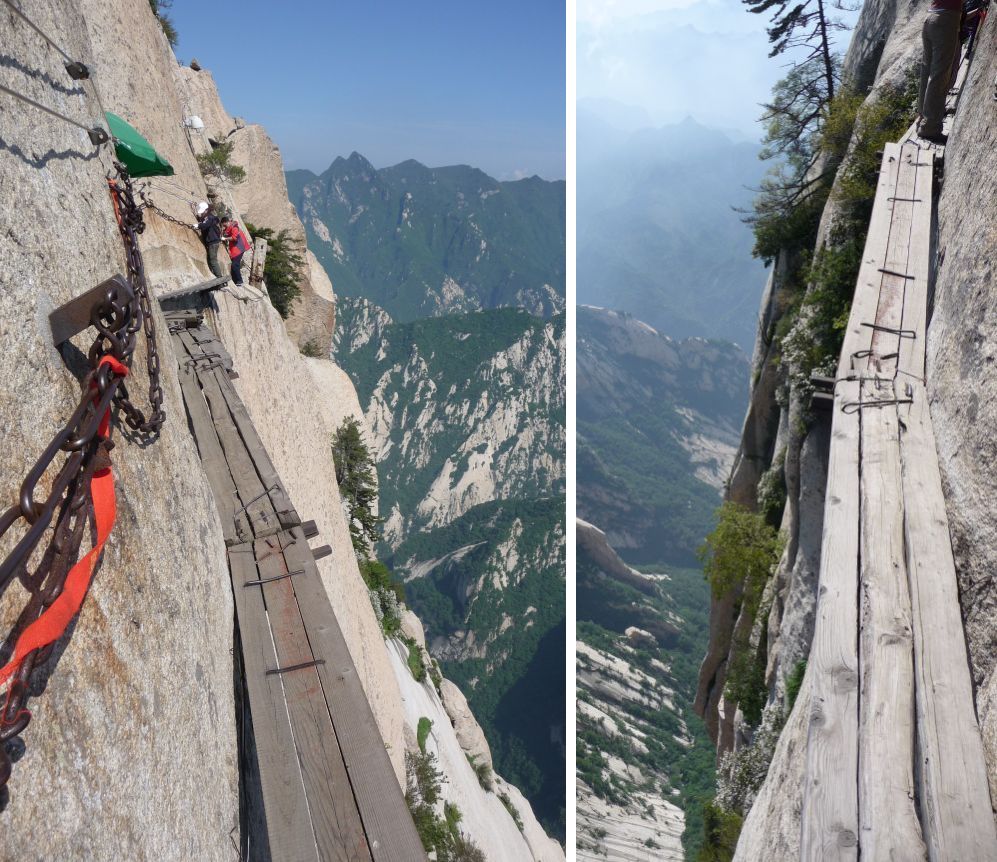
But look again: in 2005, two steel cables have been installed and it is now forbidden to venture on this frightening trail without a safety harness, available for rent for 30 yuan (but you can bring your own, which I did on my first visit to Huashan)

The harness removes all fear if you are not vertigo-prone (an admittedly big IF), and the landscape is just stupendous. The matters become trickier once you reached the tiny temple with a tiny platform at the far end, and when you then realize that this is a dead end you have no choice but backtrack and cross the other people on these really narrow boards facing this landscape:

I did not go on the Planks Trail this time, because there was too much waiting time,

… and I wanted to have time to go this time to the Chessboard Pavilion.
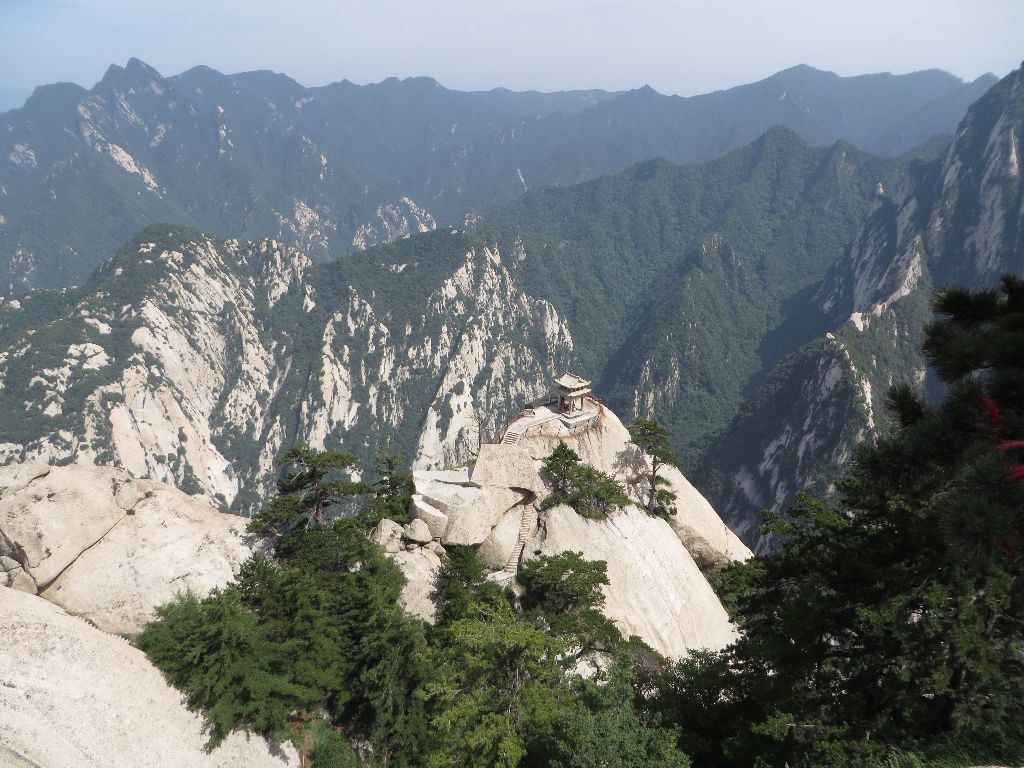
How could I not want reach this lonely pavilion on a promontory?
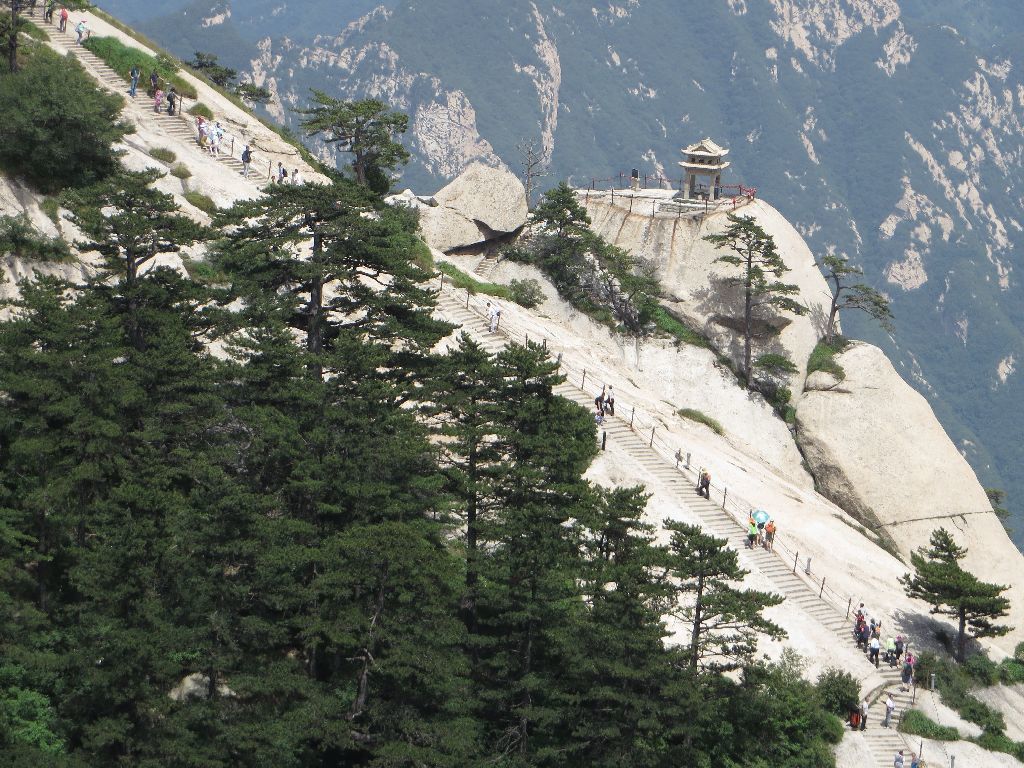
All the more that few visitors venture there: I did not need to wait to take this picture.
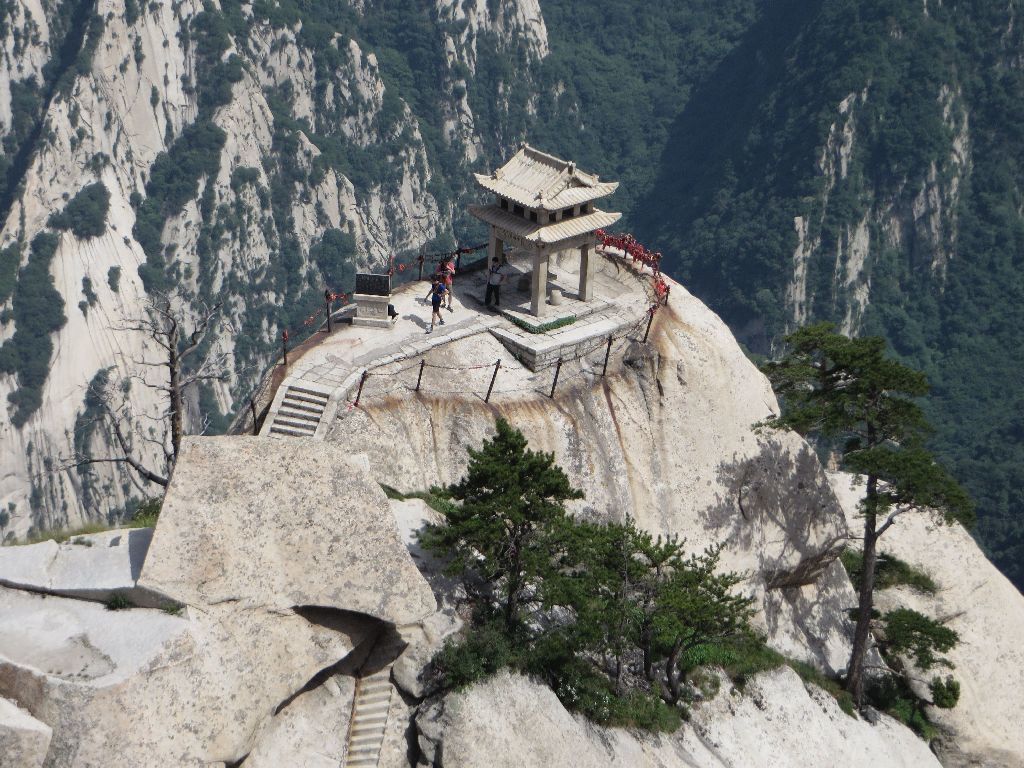
First climb many stairs on the granite face
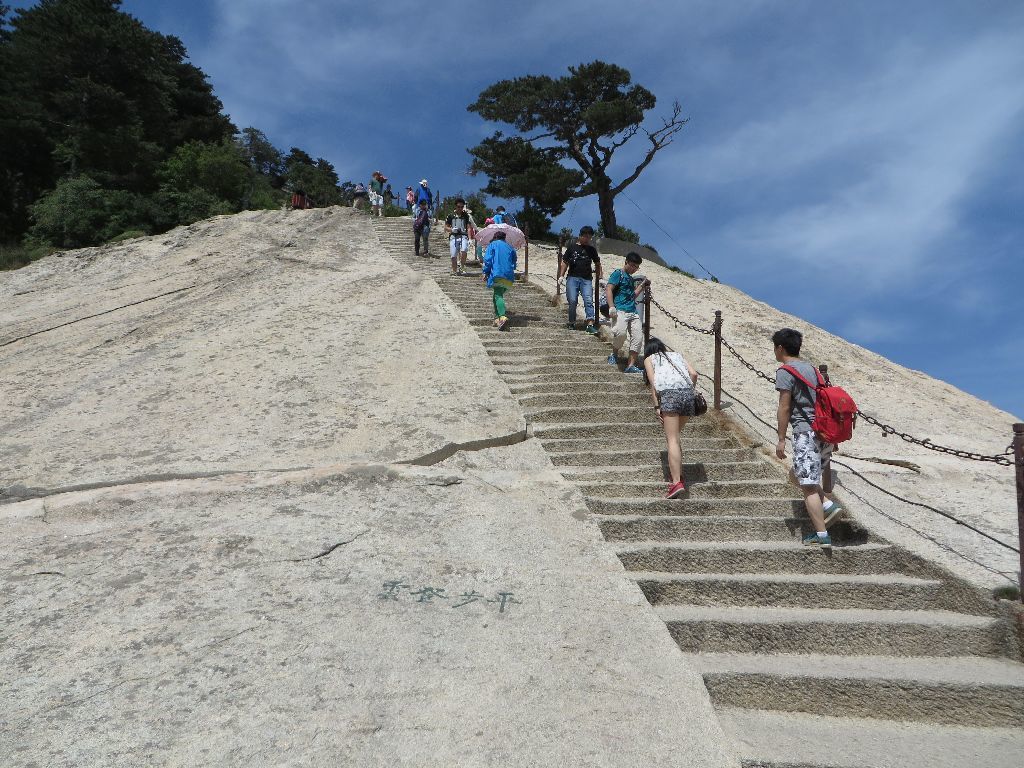
But then, you have to go down this narrow fault in the middle of the picture

A harness is compulsory there too, and being in good physical shape is recommended, because the steps and holds hewn in the rock are few and far in between.
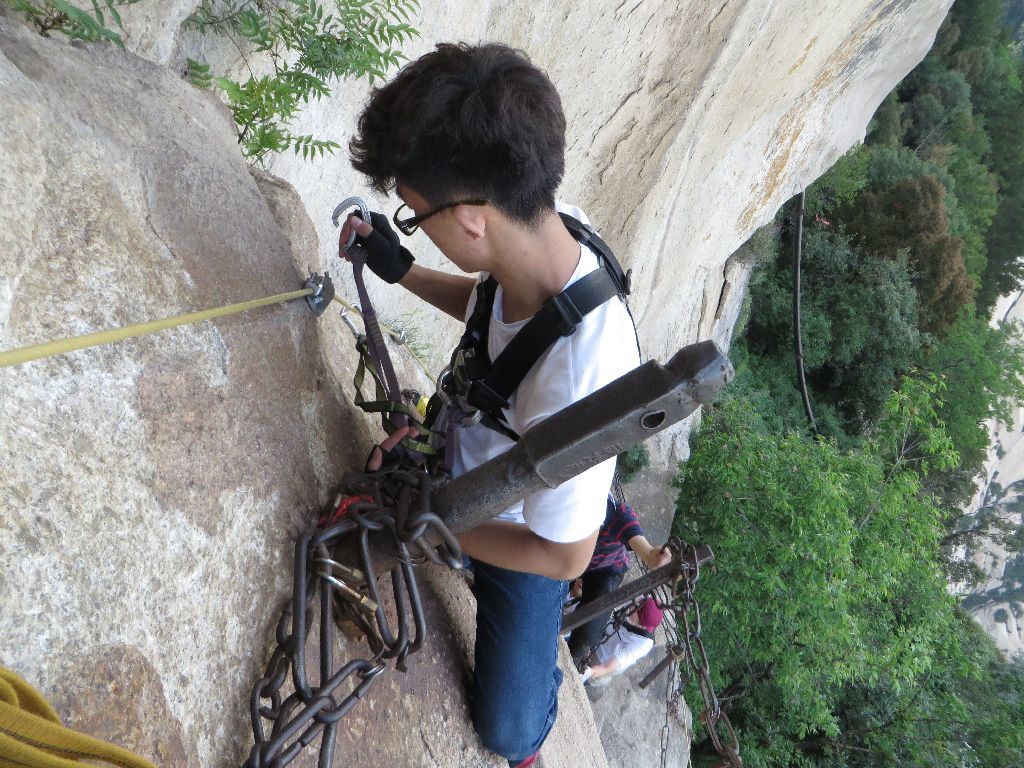
In the good old times, there were of course only these iron chains to help. That was the cost for playing a game of chess on the stone chessboard in this very small pavilion.

Back towards the East peak, with a view on the plain below

The white bar at the end of the avenue is the new Huashan North high speed train station.
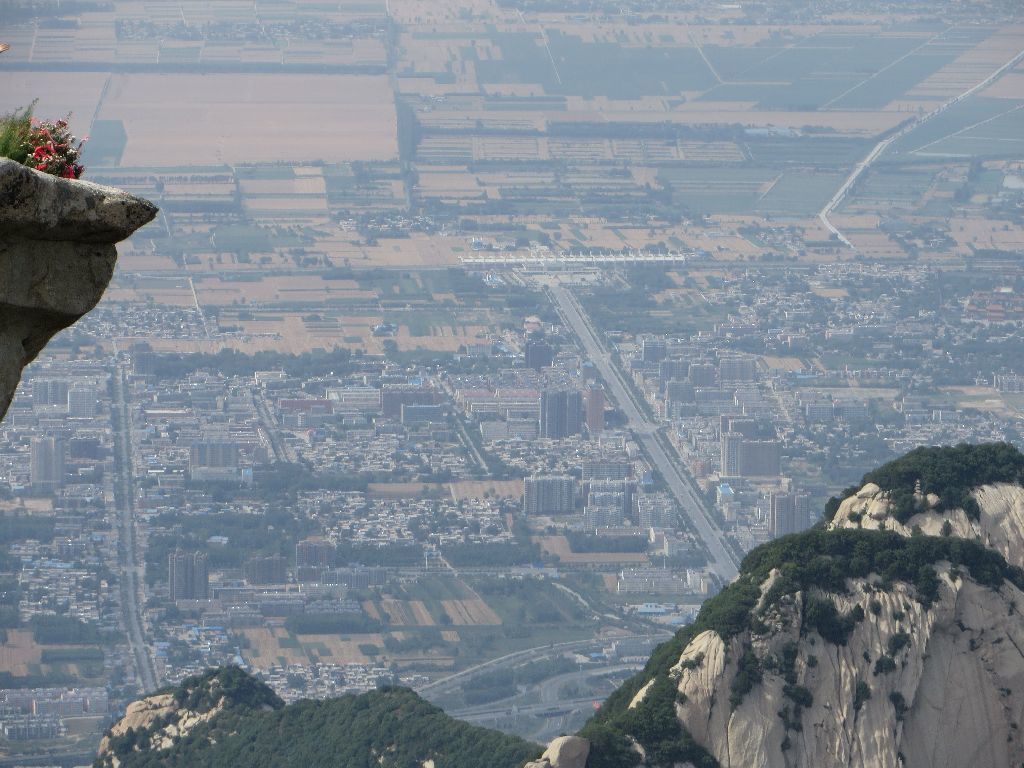
Visiting Huashan requires some effort, but when the weather is good (and I was lucky to have blue skies each time), the visitor is rewarded with spectacular vistas. I hope that you liked this landscape; thanks for reading me and see you soon on the Planks Trail or for a game of chess!
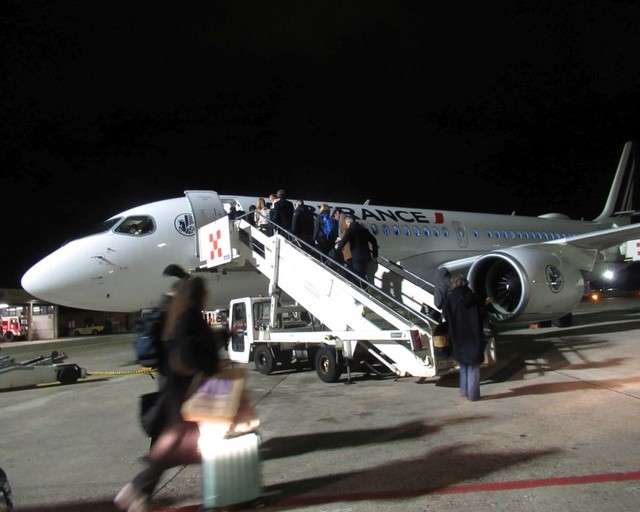
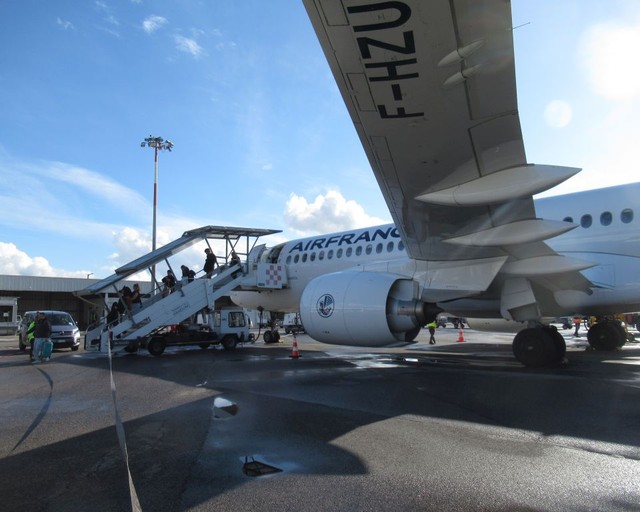


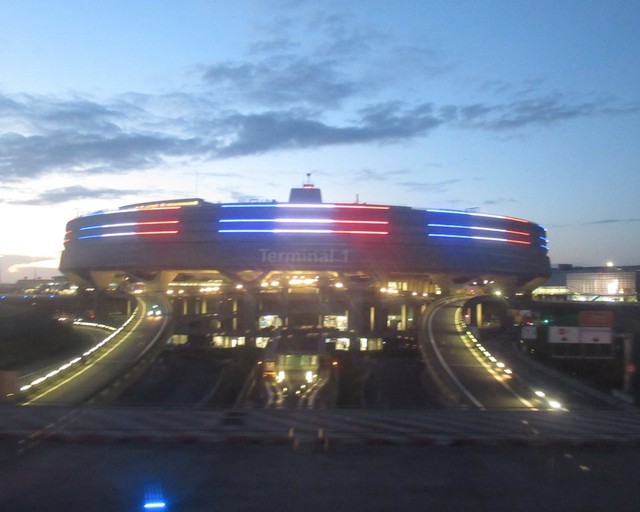
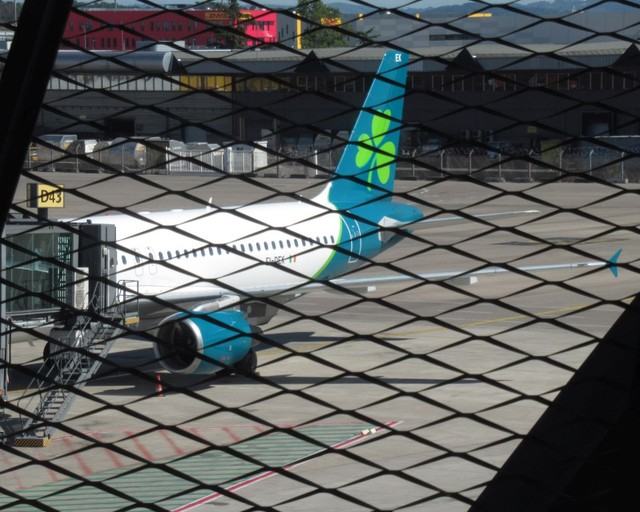

Thank you for taking us to Huashan! The planks trail looks really scary. The breathtaking view is well worth the climb!
Fire on everyone - those English signs never cease to amuse me.
The low altitude makes it a really picturesque flight!
The sandwich looks pretty bad, but at least they give it out for free. US airlines charge like $10 for the same thing.
Chang An Airlines' livery looks the same as Hainan and HX. I guess they're all the same company?
Weather looks really good, and it's so rare to see a blue sky in Beijing!
I've never been to Terminal 3D, and I don't quite understand the logistics. There's no APM between 3D and baggage claim?
Huashan is really a must see, and because it is far enough from any significant urban or industrial center, there is no pollution to obscure the view if the weather is otherwise fine. On the other hand, I would advise against going there in the winter if there are snow/ice conditions - some blogs describe hair-raising situations. Heavy rains would also ruin most of the interest of getting there.
I have an extensive photographic collection of Chinglish signs which survived the 2008 pre-Olympic “clean up” campaign.
I would not buy this kind of sandwich; it is an offense to Chinese food quality and diversity.
Chang An Airlines, Hainan Airlines and HX (plus others) are indeed part of the HNA group, which curiously preserves the identity of a number of airlines that it absorbed over the years.
Terminal 3D gathered dust for years after T3 opened in 2007; using it was a first for me in 2015. There is an APM station there, and according to PEK’s website, passengers departing and arriving from T3D should use it, but I landed twice at T3D and each time had a bus transfer (this is not a statistically significant sample).
Thanks for your comment !
Thanks for translating this FR for us Marathon!
Is it just me, or is it weird that Chinese BPs don't have the departure time of the flight listed, only the boarding time? Is this to help simplify things so people don't get confused about when they need to be at the gate? If so, this should be adopted in the US^^
wears pants with a slit behind, so that it is not necessary to remove it for defecating...
- Me too!
If you look closely in your safety pictographs, there are some gender biases. It's always a female employee with male passengers and a male employee with female passengers.
Great spotting as always, helped by the lack of haze at the airport (also, you arrival shots were very clear in PEK, I didn't expect that in the summer months when it should be more smoggy).
I see this plane has the new upholstery in J, since it switched form grey to blue. You have a very royal seat pitch of one The China Daily. I started using barf bags as a form of measurement since those also seem to be a standard size.
The sandwich is a Chinese kind that I had already tasted and which I found quite stodgy.
- No chicken with rice?
I'm surprised you got a gate at PEK, what a luxury^^
Fantastic bonus as always Marathon! Beautiful photos, but I wouldn't trust my life with some wood planks on the edge of cliff^^
“Is it just me, or is it weird that Chinese BPs don't have the departure time of the flight listed, only the boarding time? Is this to help simplify things so people don't get confused about when they need to be at the gate? If so, this should be adopted in the US^^”
I made a random check in my thick collection of Chinese BPs (including some prized ones in Chinese only) and yes, they all have the boarding time only, never the ETD. I had never noticed that.
“If you look closely in your safety pictographs, there are some gender biases. It's always a female employee with male passengers and a male employee with female passengers.”
Maybe a statement that China rejects the gender separation enforced by some Islamic states.
“Great spotting as always, helped by the lack of haze at the airport (also, you arrival shots were very clear in PEK, I didn't expect that in the summer months when it should be more smoggy).”
It was a Sunday in June, which was probably less smoggy because of less industrial activity in the week-end, no domestic heating with poor quality coal, and less humidity than in July-August. Maybe a change in wind direction had swept the pollution away, too. I’ve had beautiful week-ends following miserable weeks in my office in Beijing.
“I see this plane has the new upholstery in J, since it switched form grey to blue. You have a very royal seat pitch of one The China Daily. I started using barf bags as a form of measurement since those also seem to be a standard size.”
Does the size of a barf bag remain standard after use ? ;)
The sandwich is a Chinese kind that I had already tasted and which I found quite stodgy.
- No chicken with rice?”
No, and this was a clear disappointment :(
“Fantastic bonus as always Marathon! Beautiful photos, but I wouldn't trust my life with some wood planks on the edge of cliff^^”
I wonder why my wife refused to “hike” on this trail with me ?
Thanks for your comments – I’m glad that you liked the bonus too !